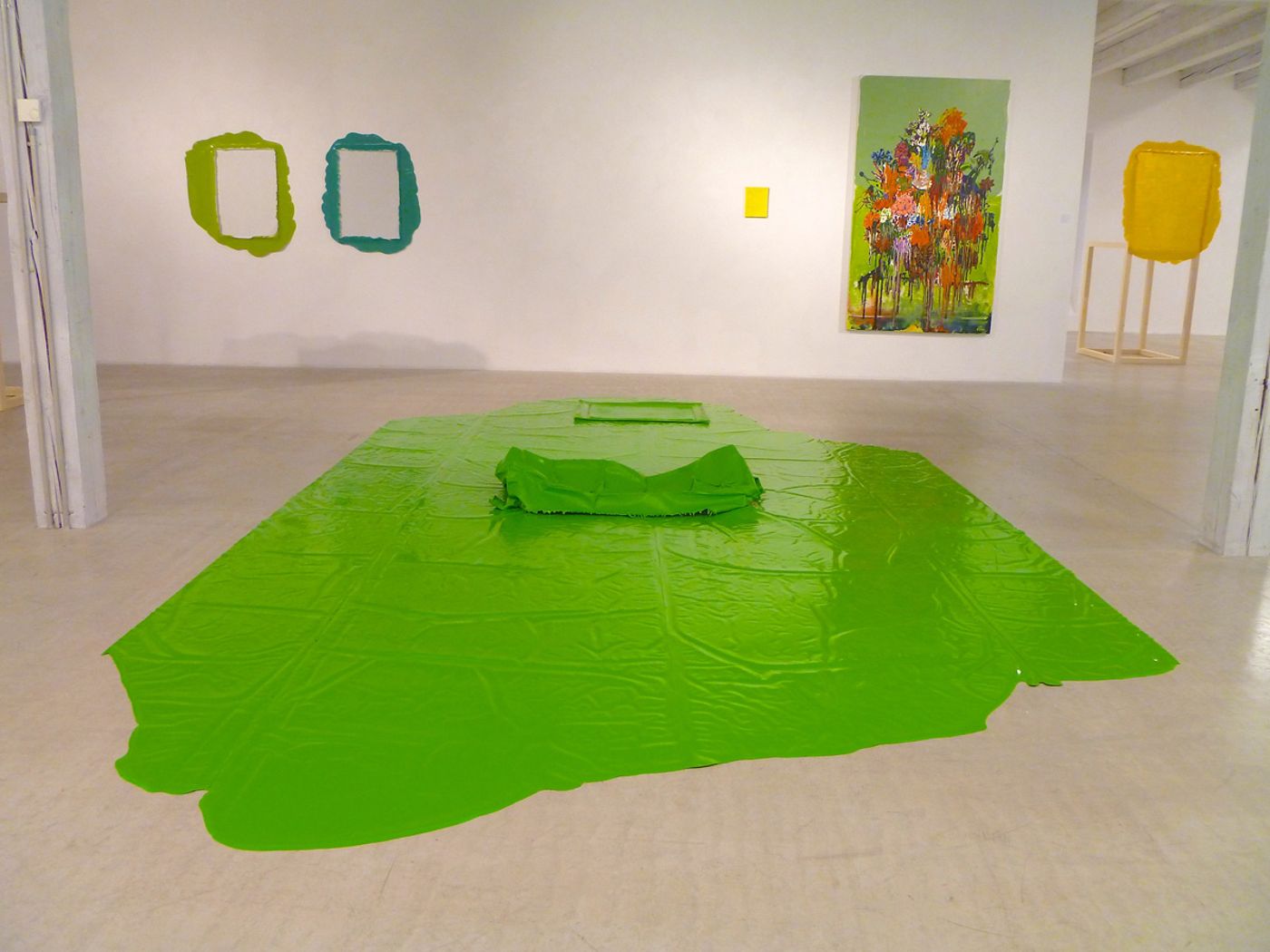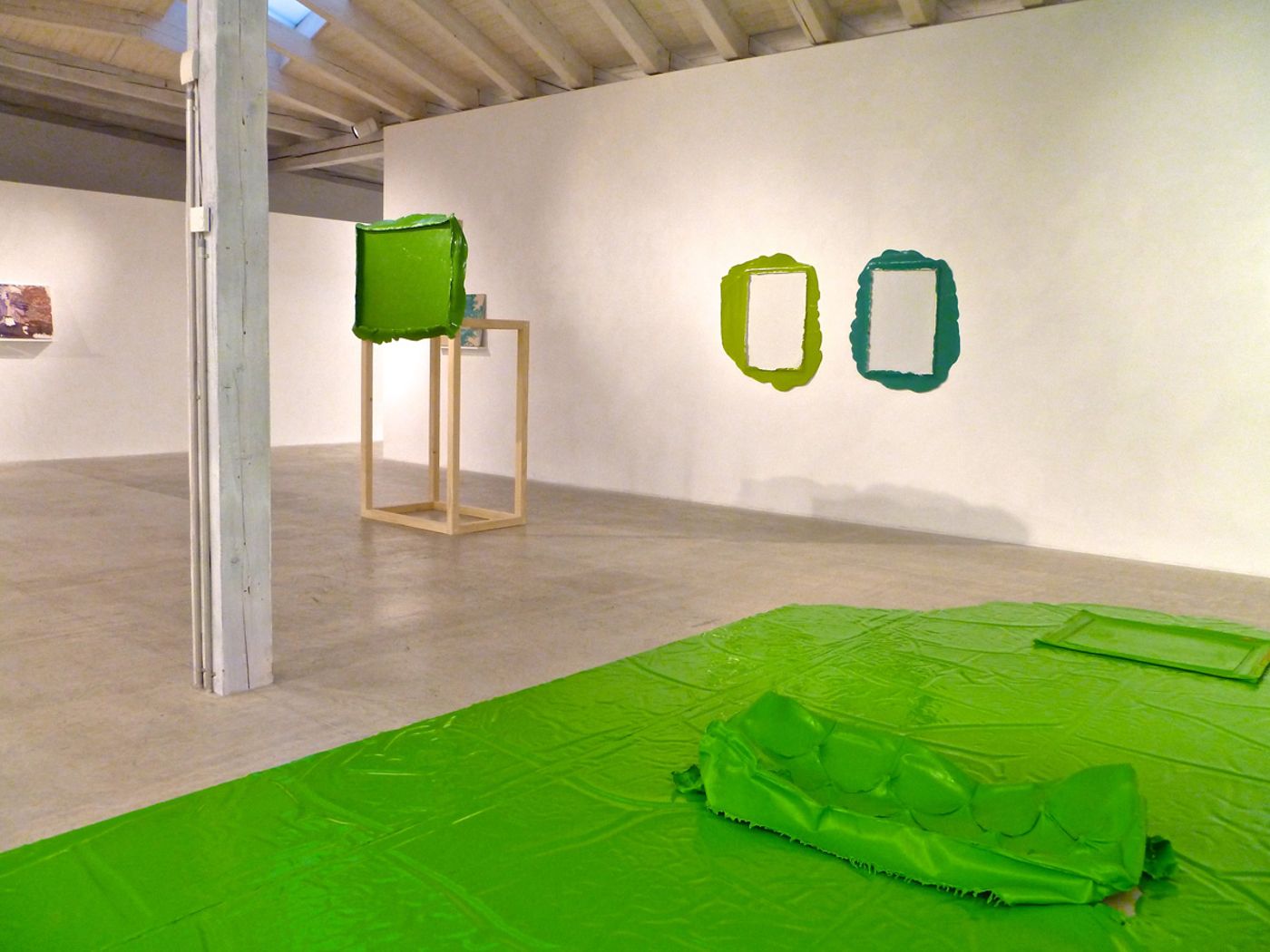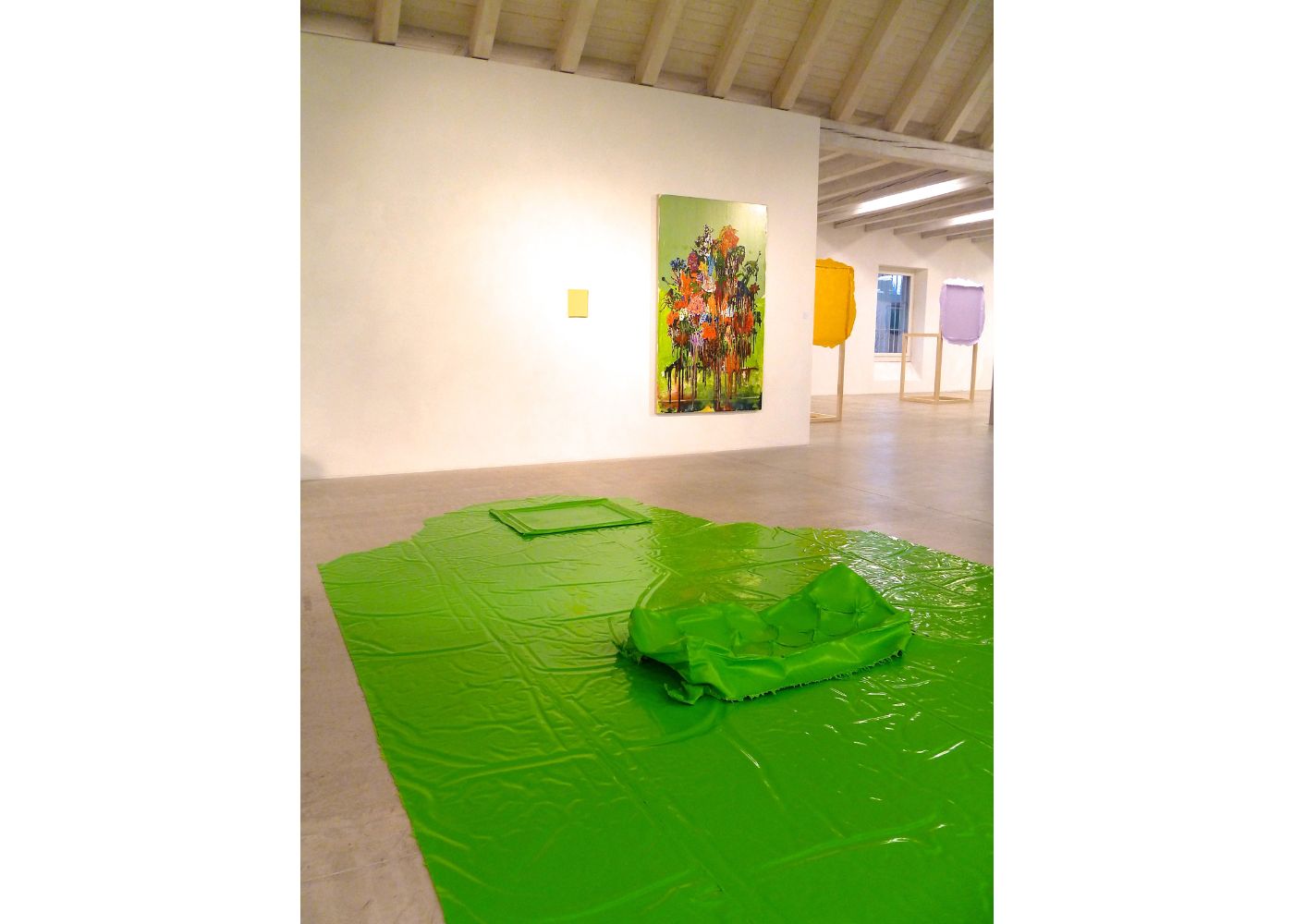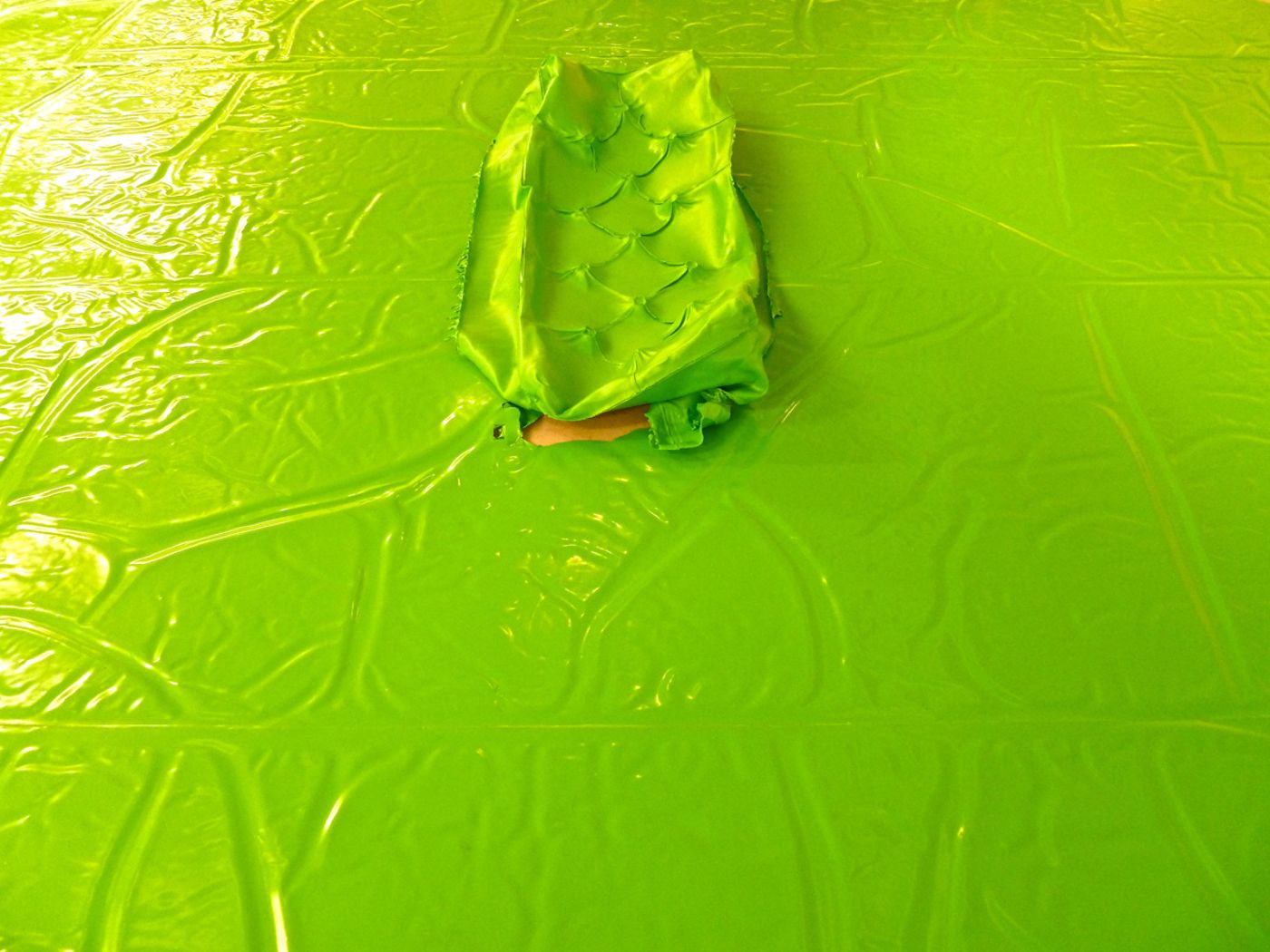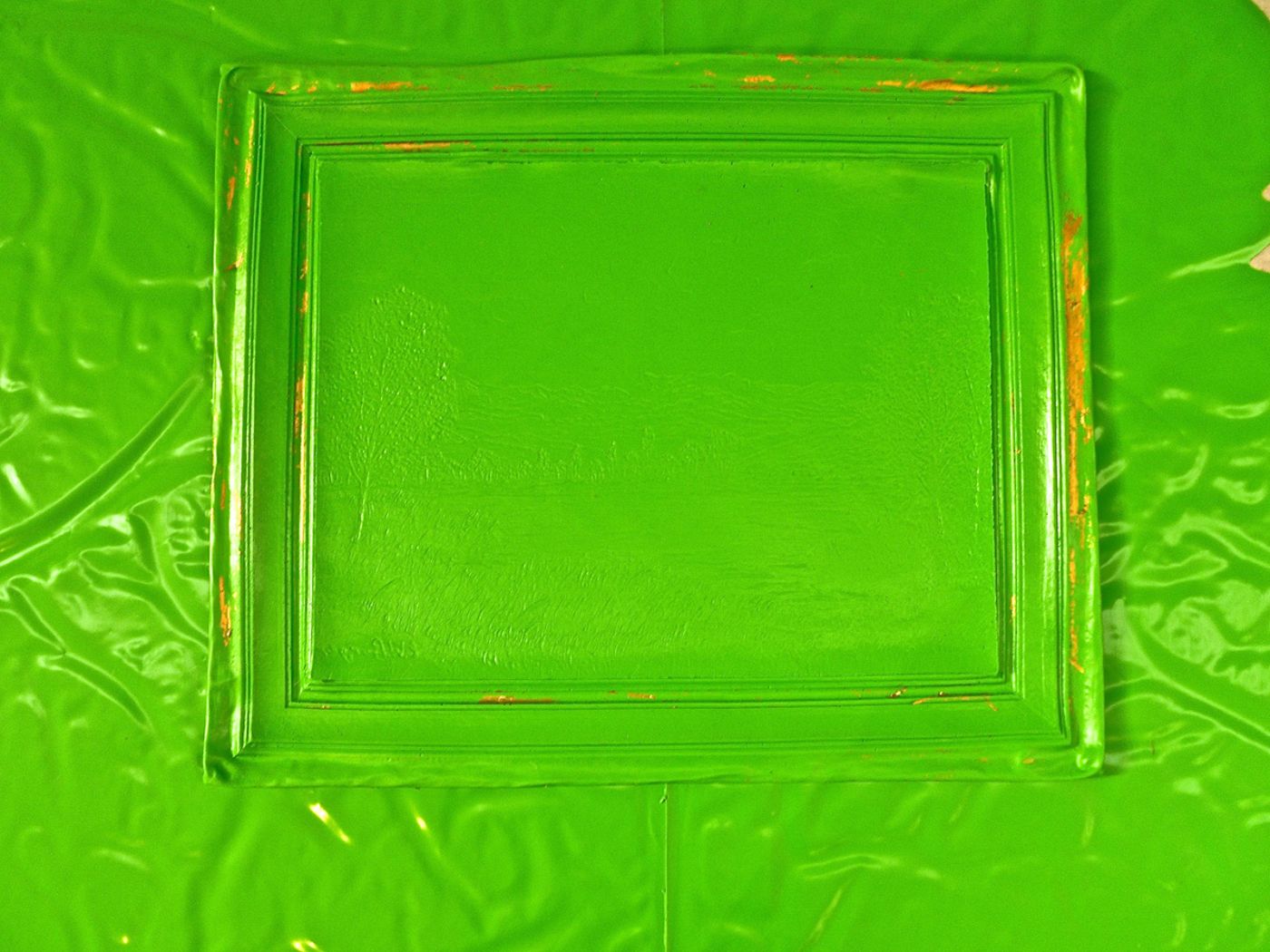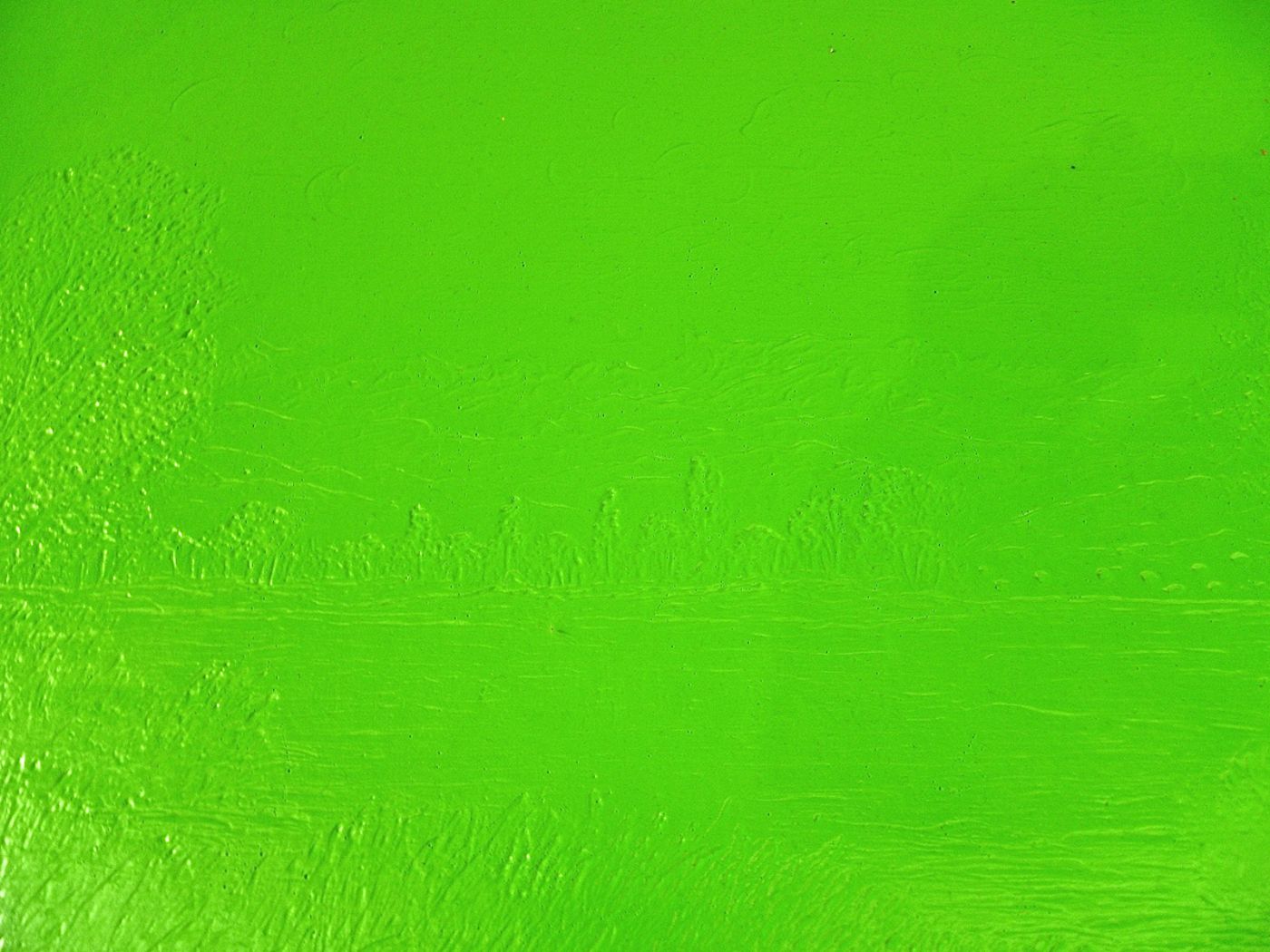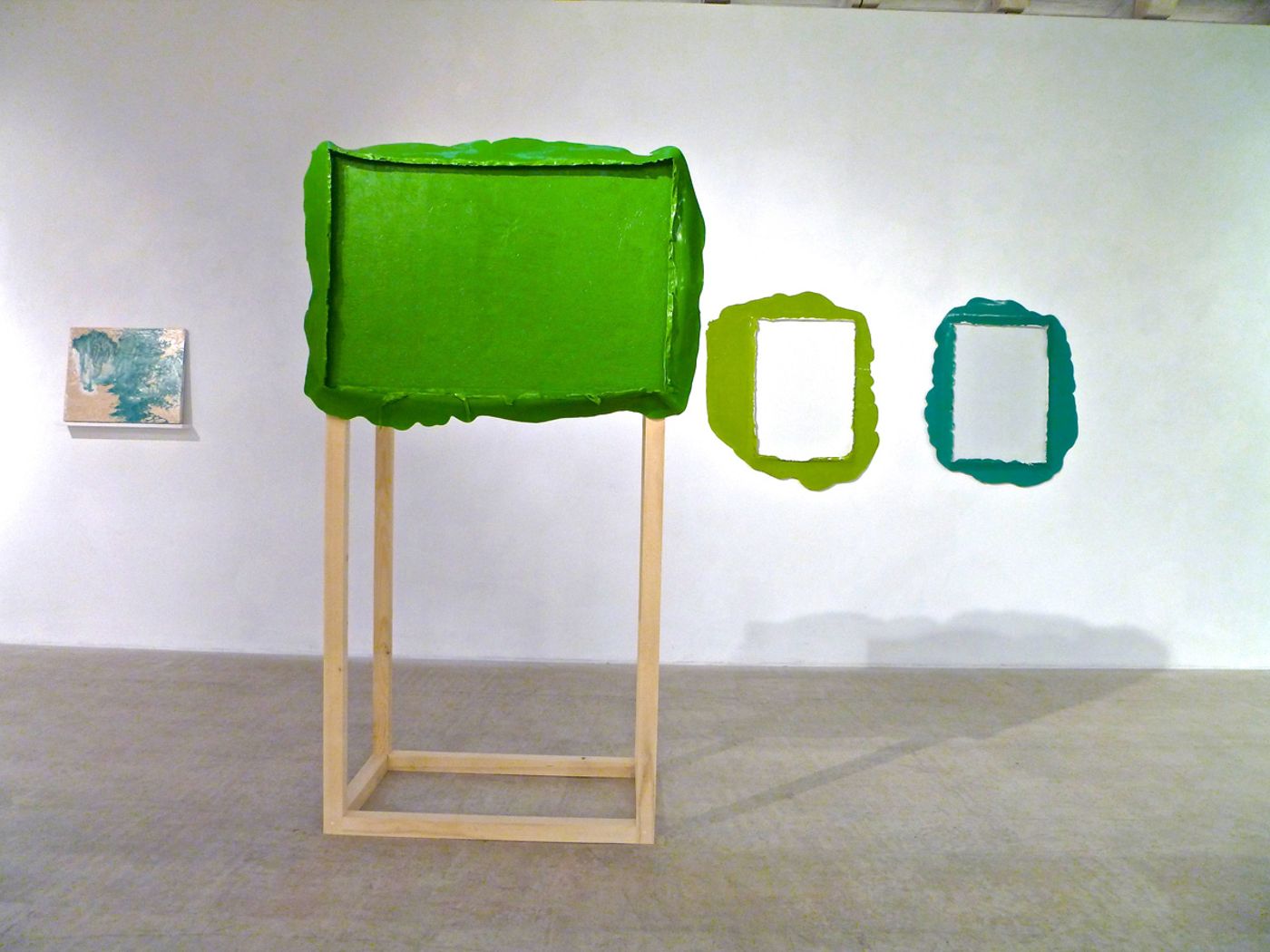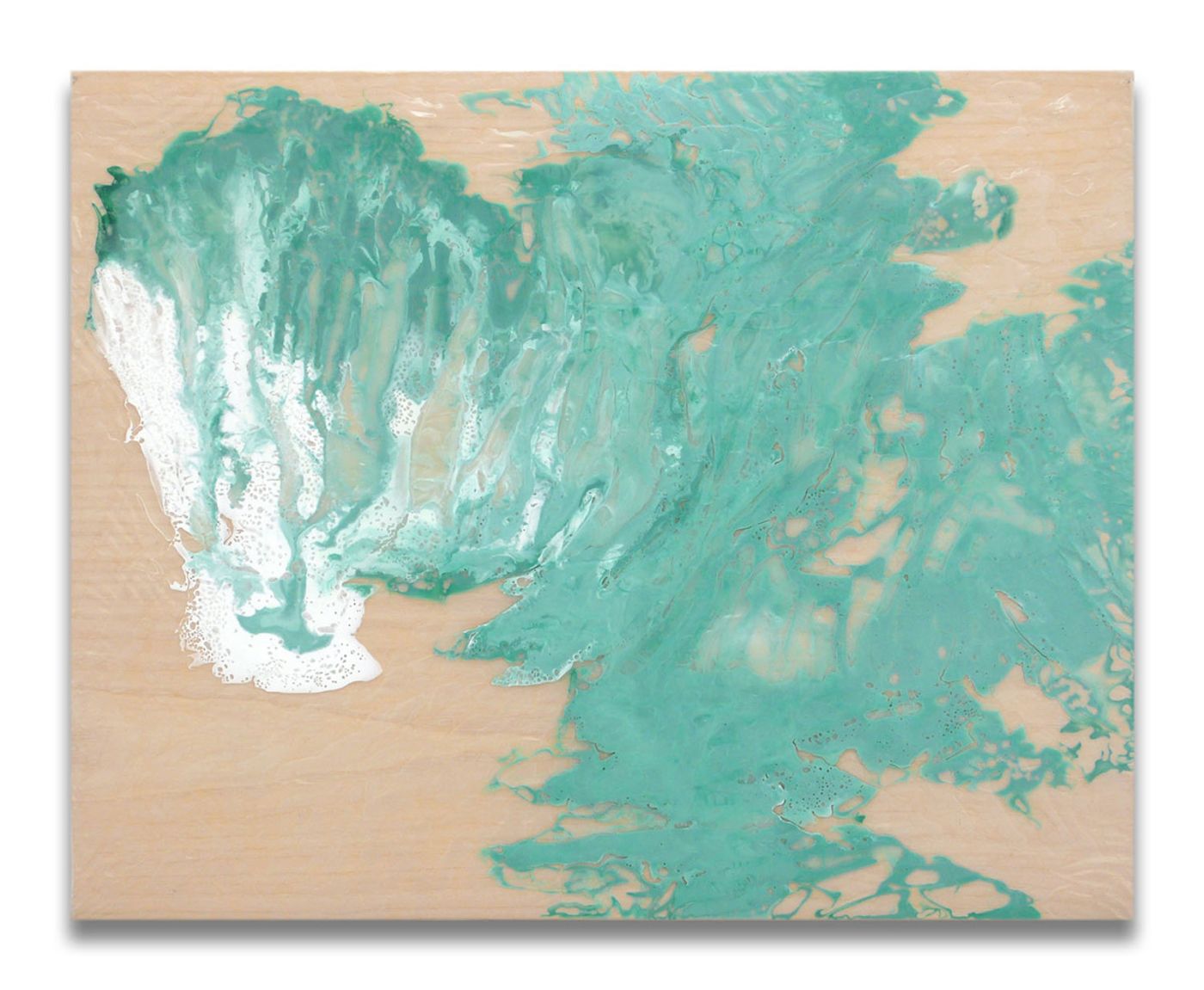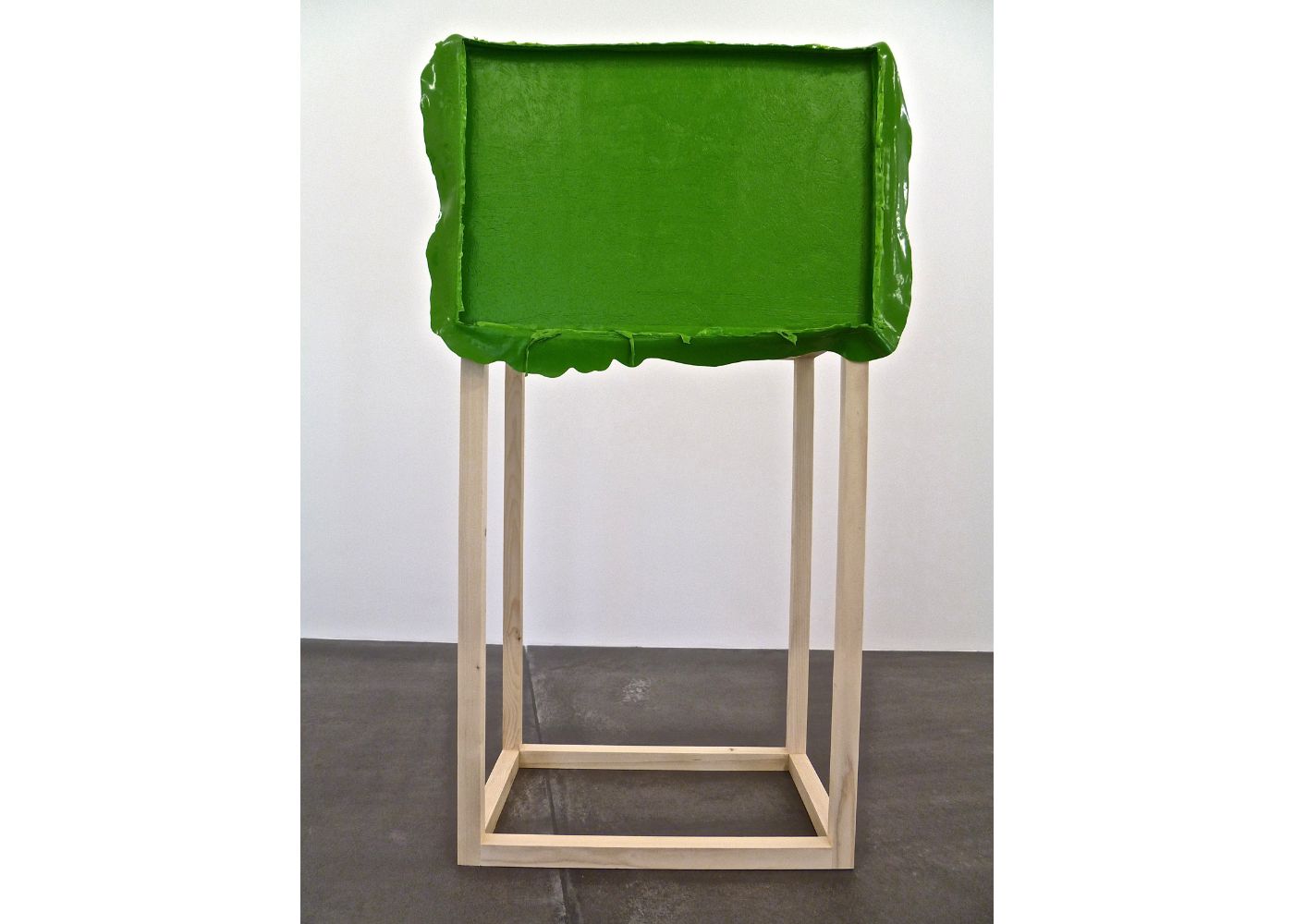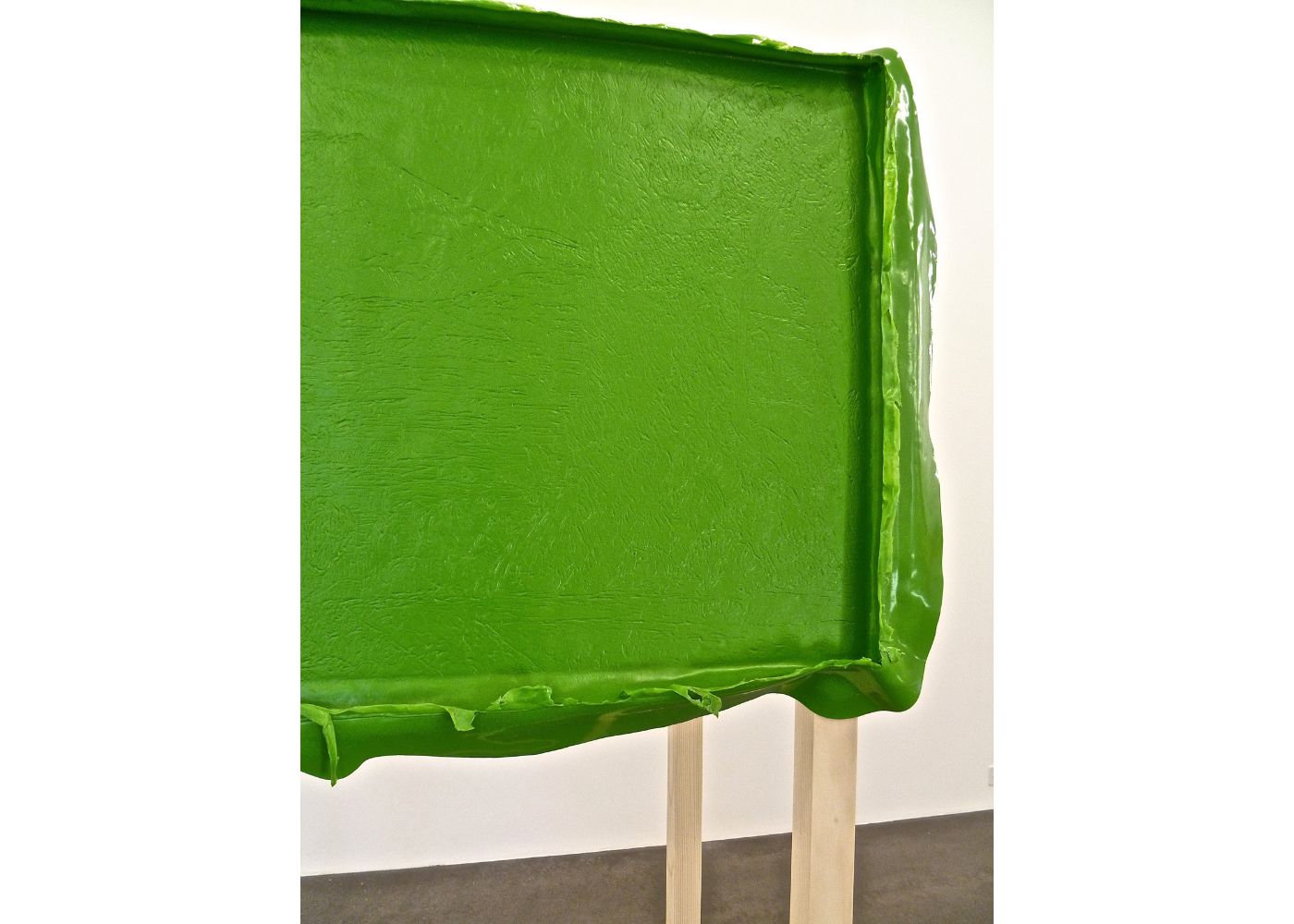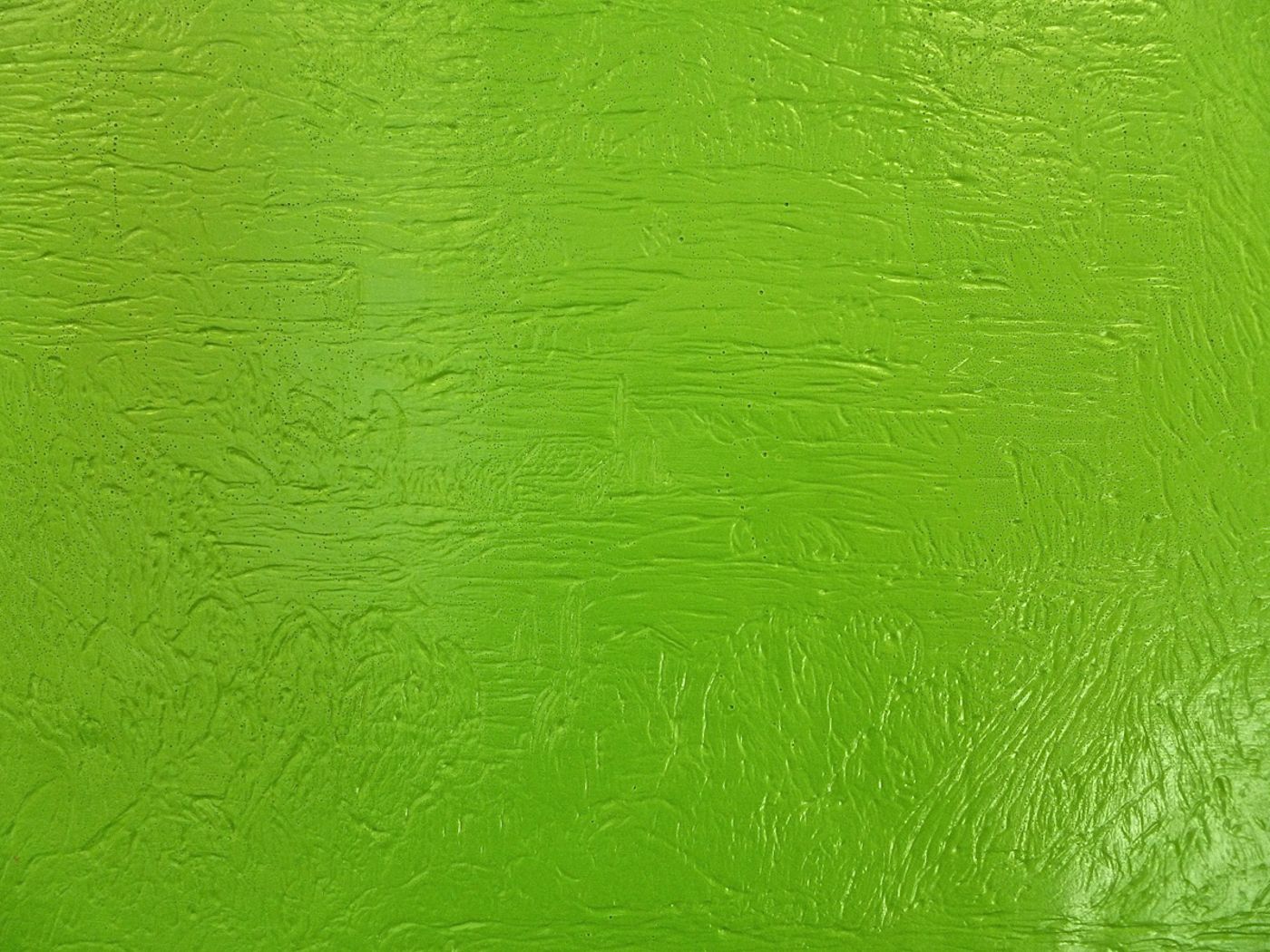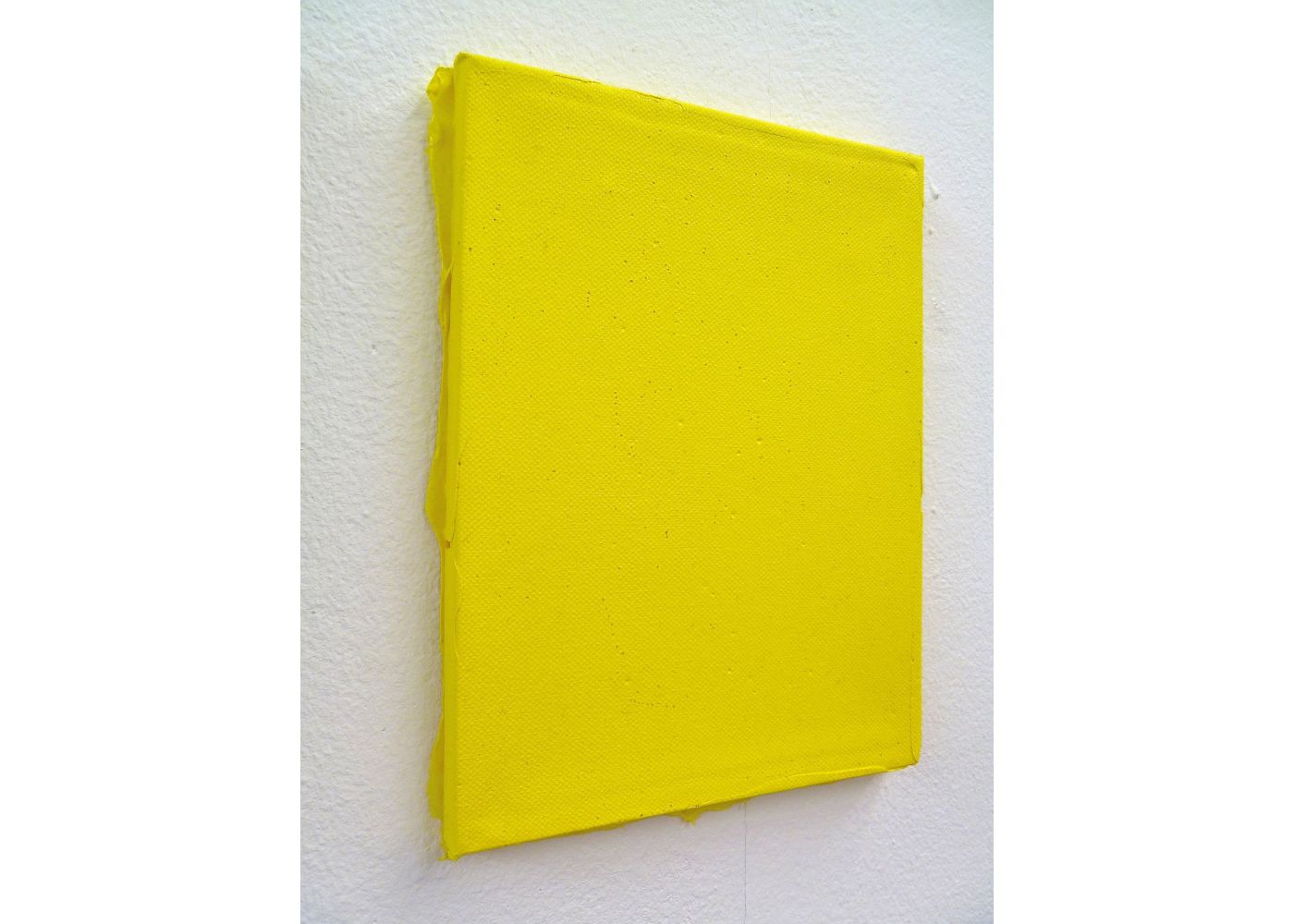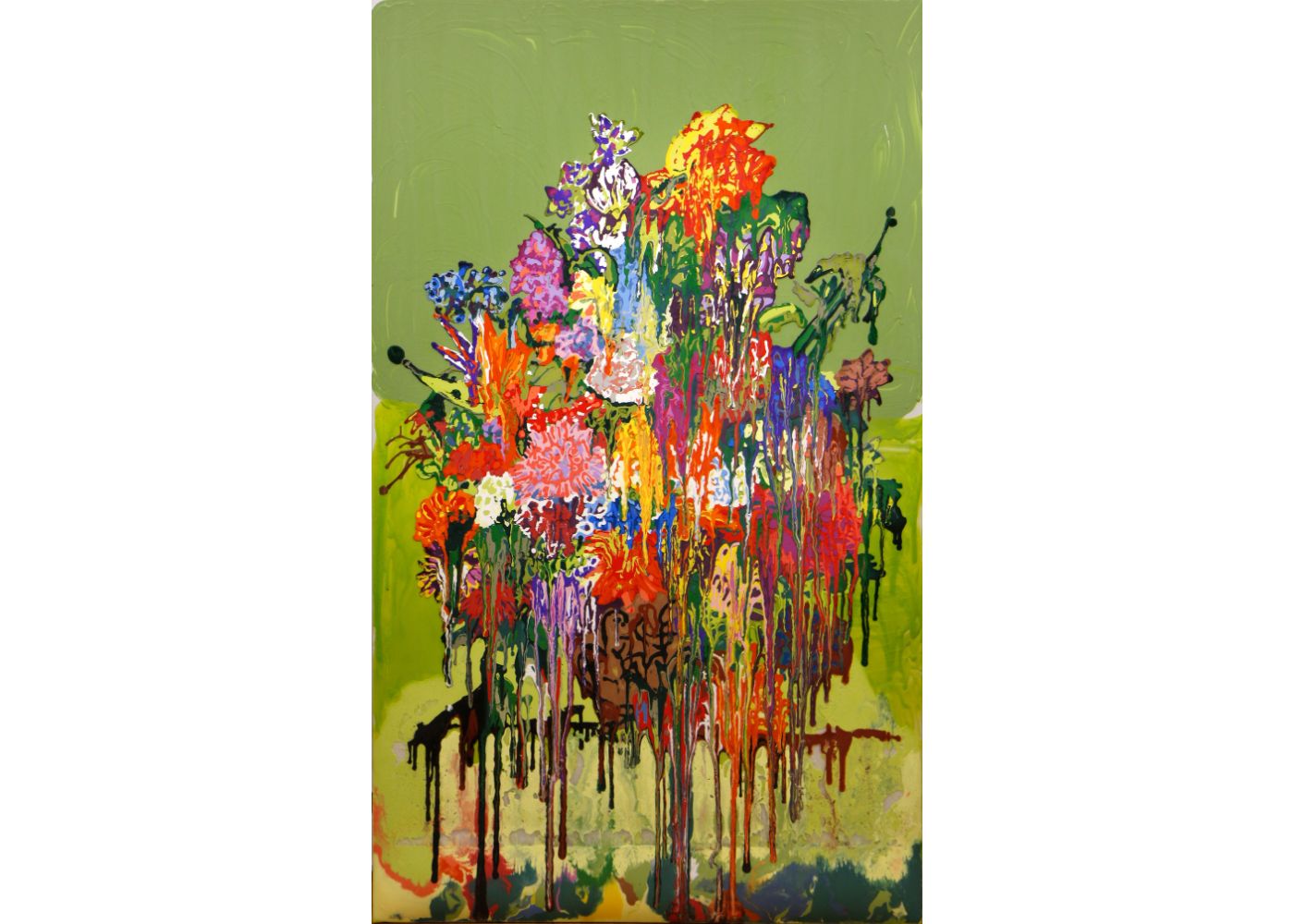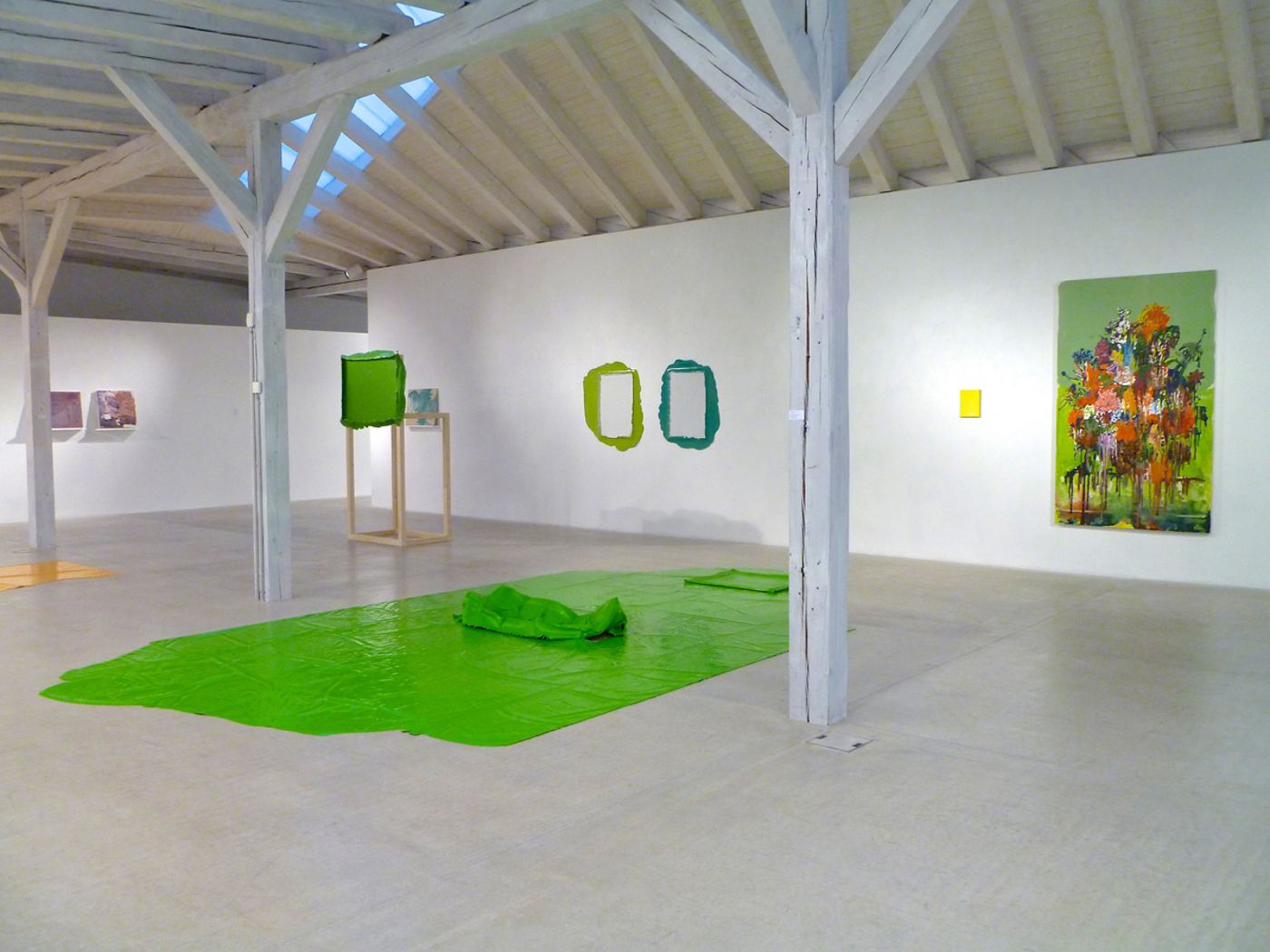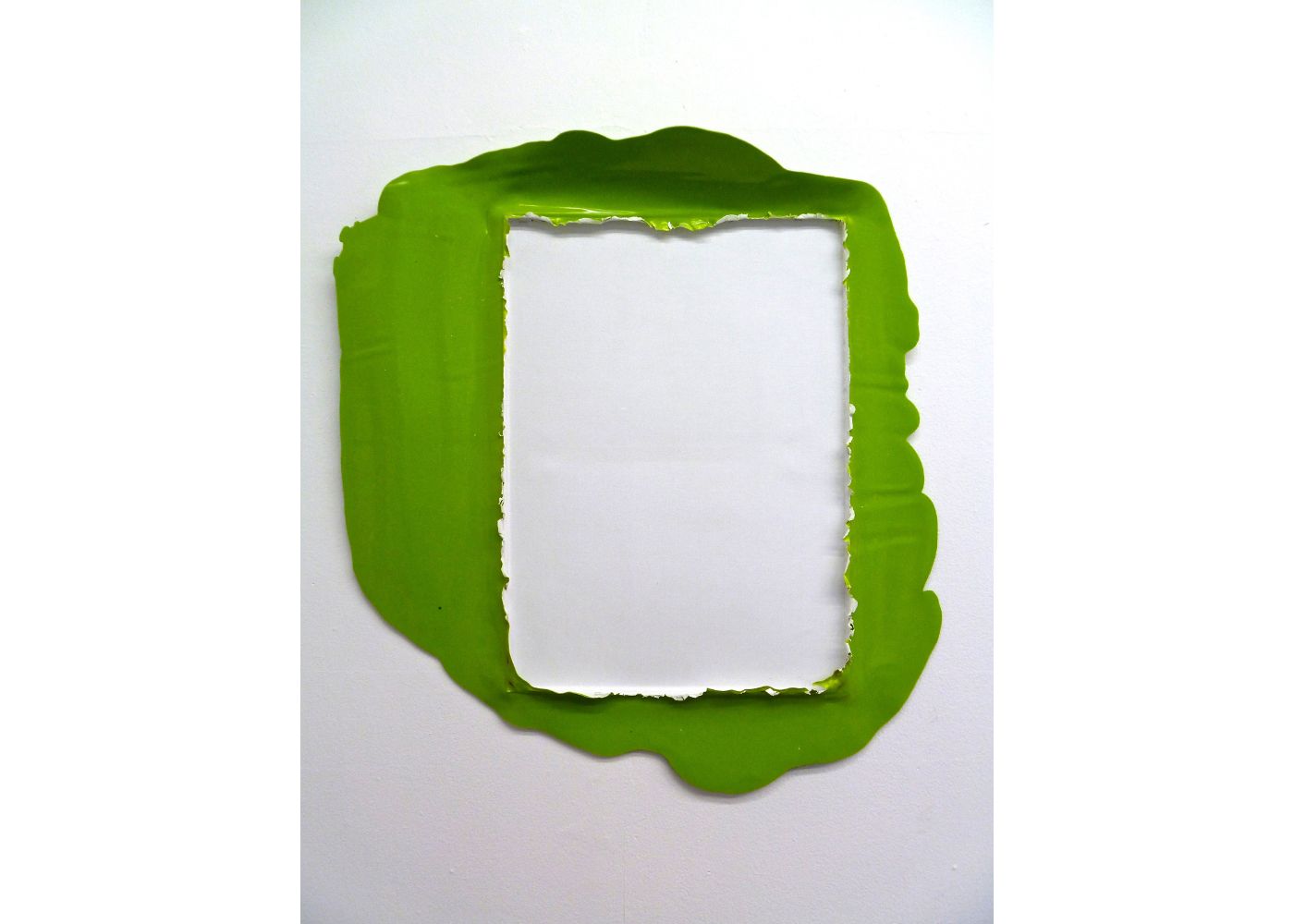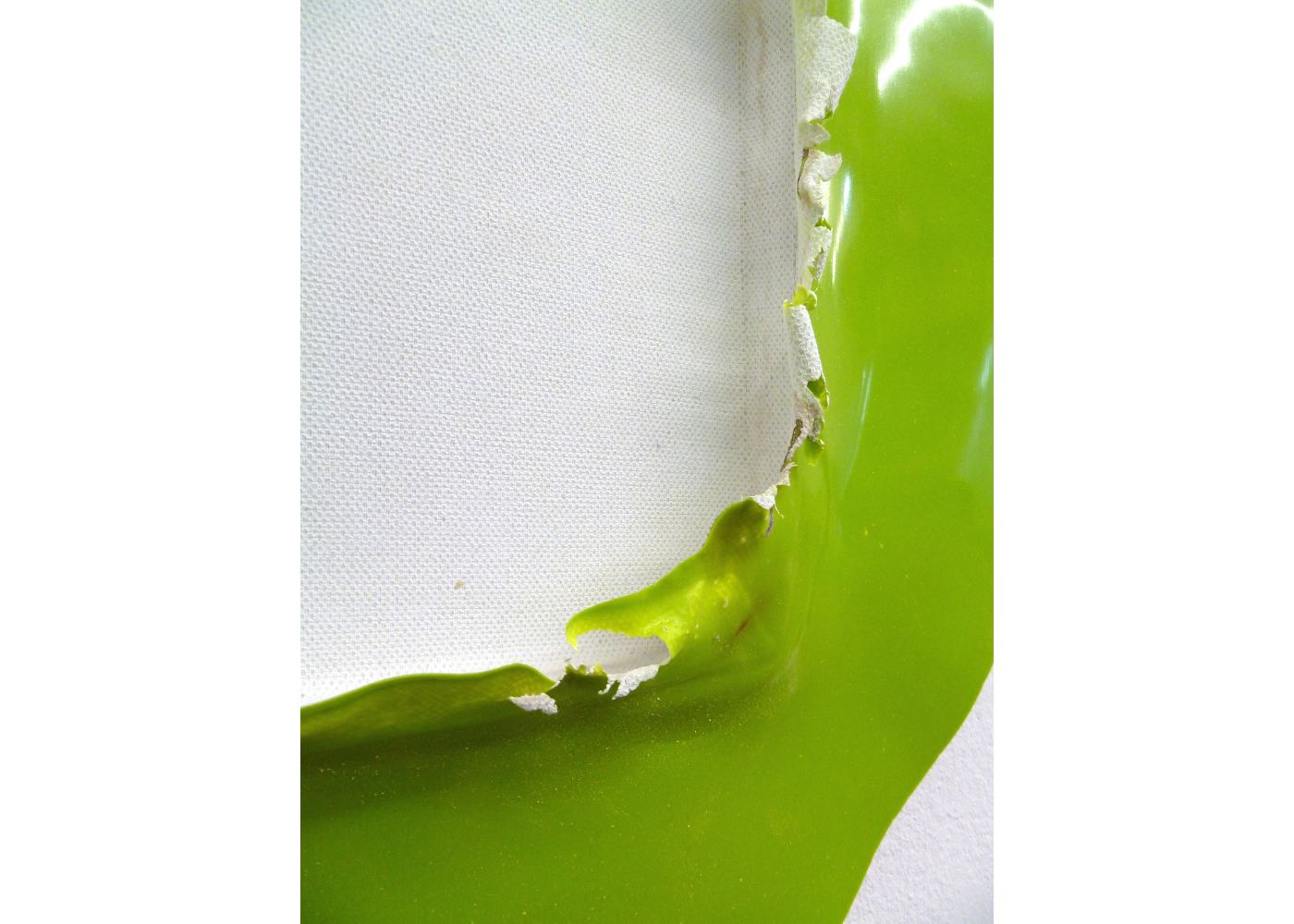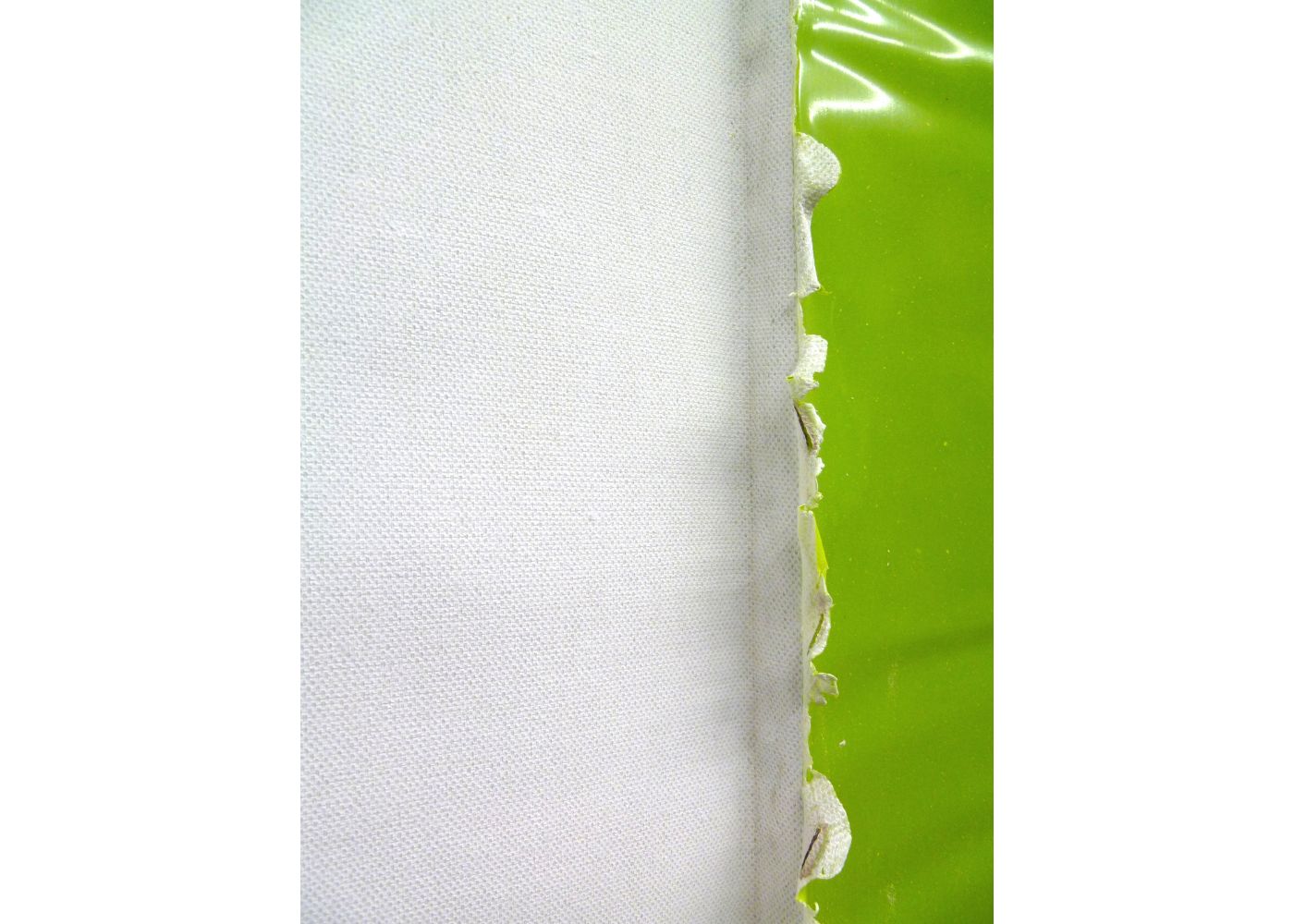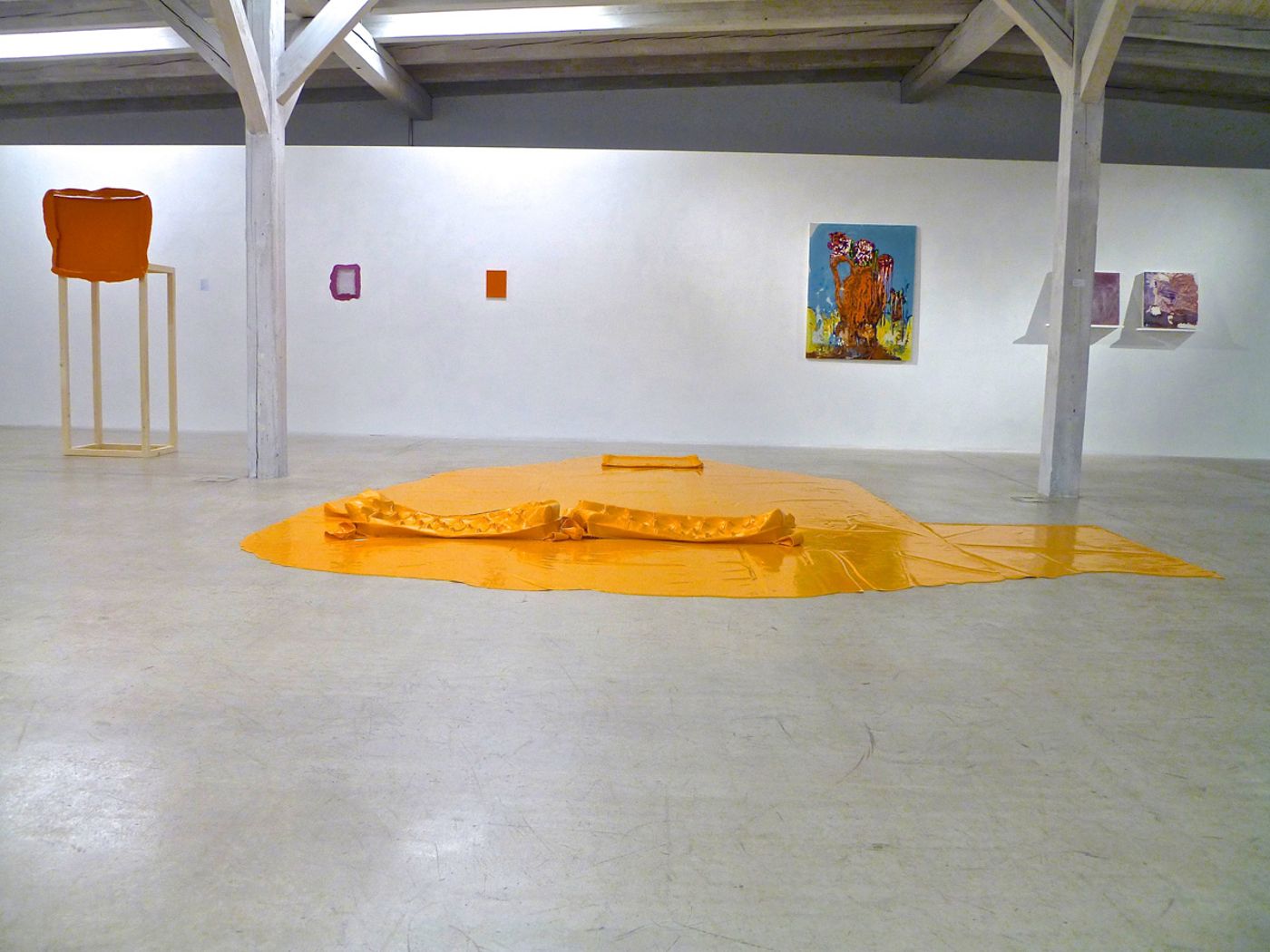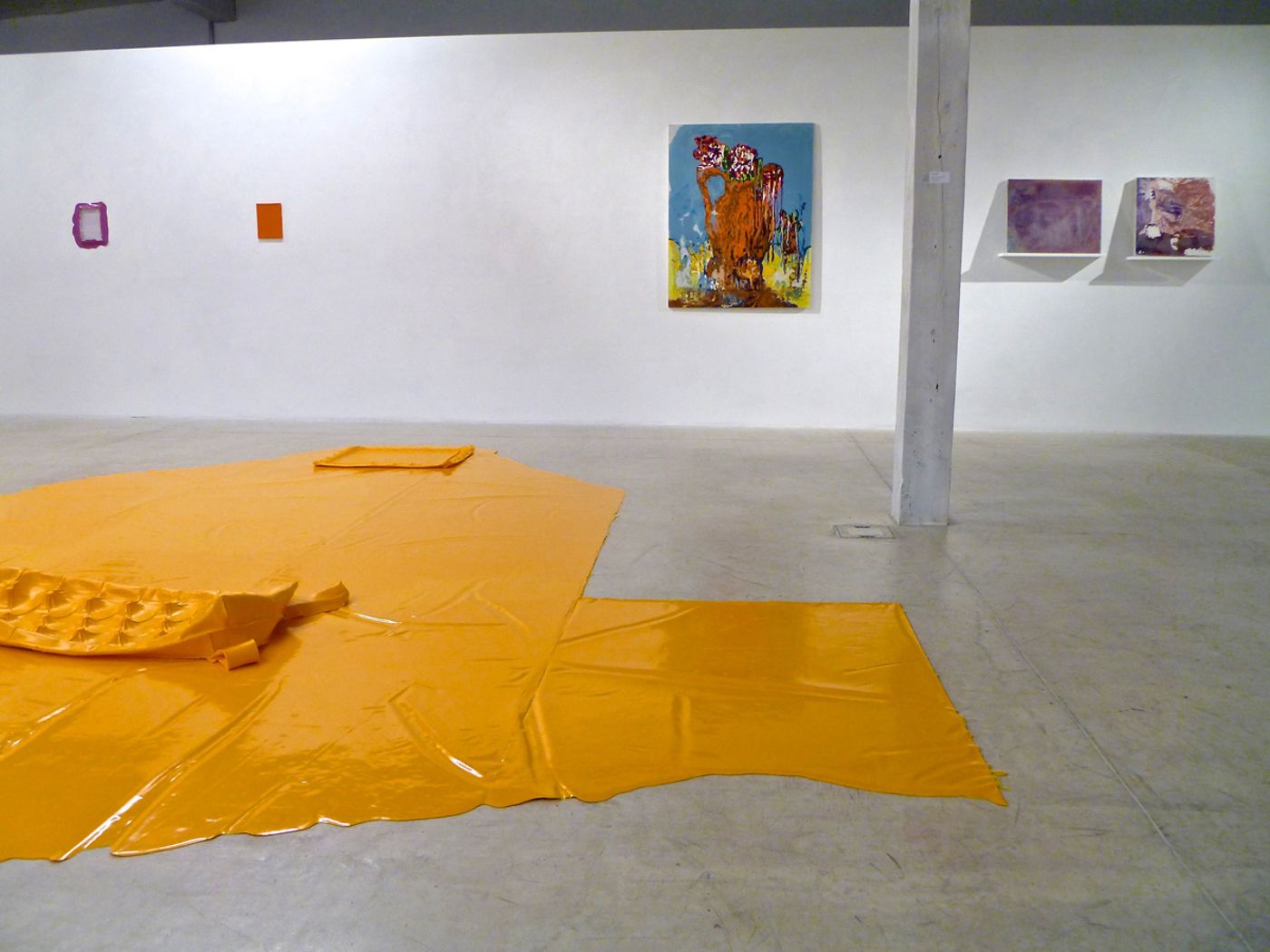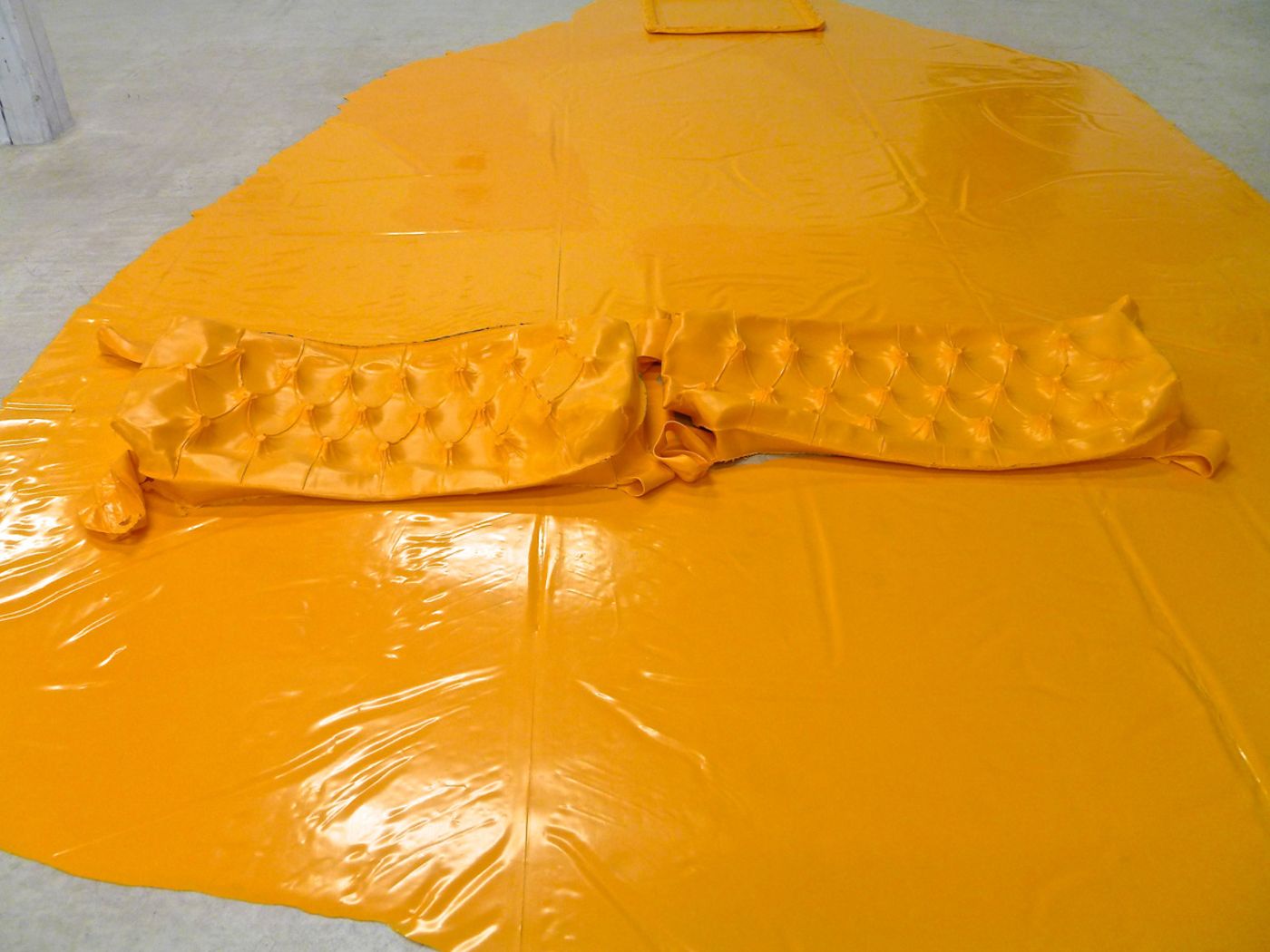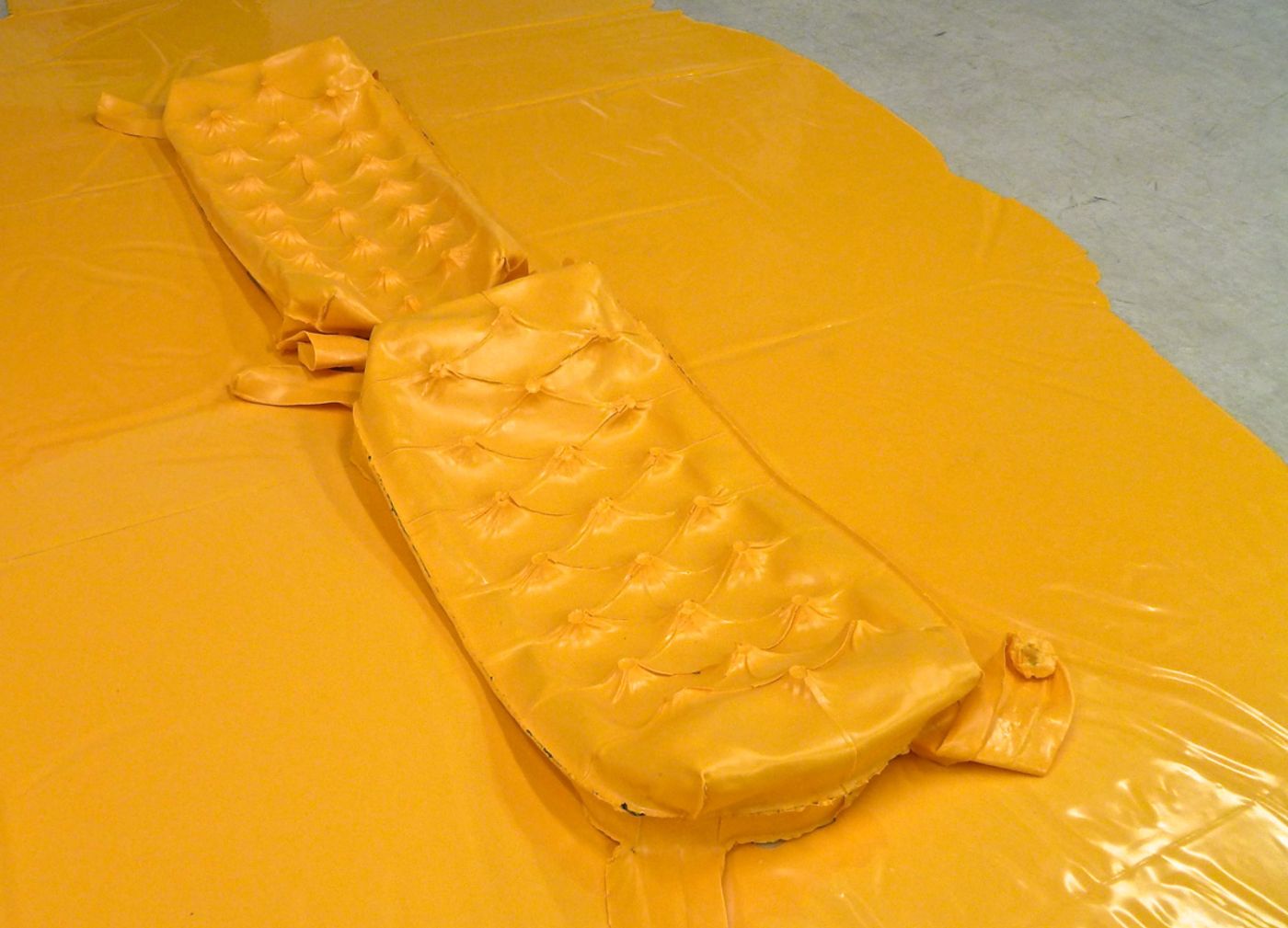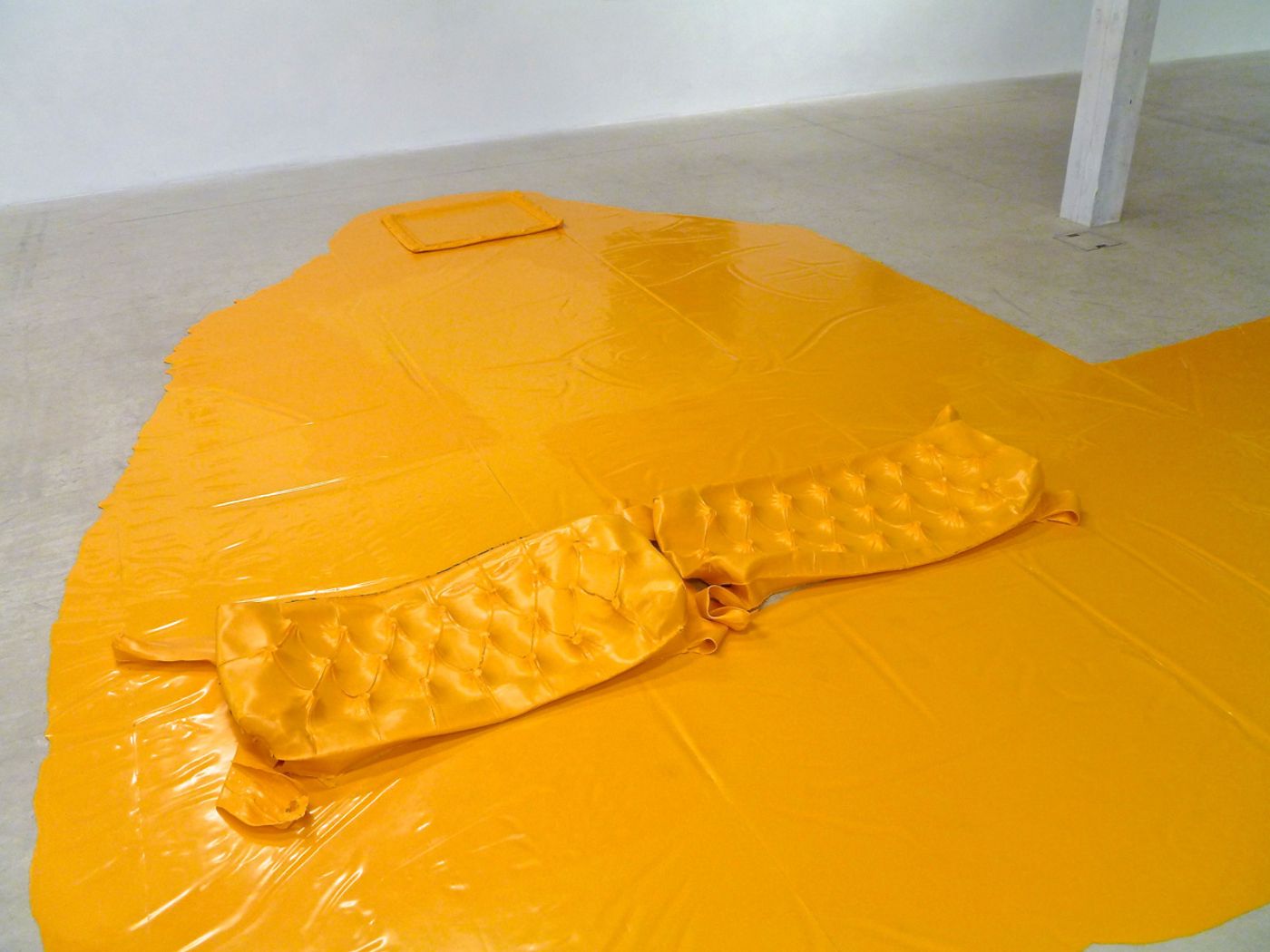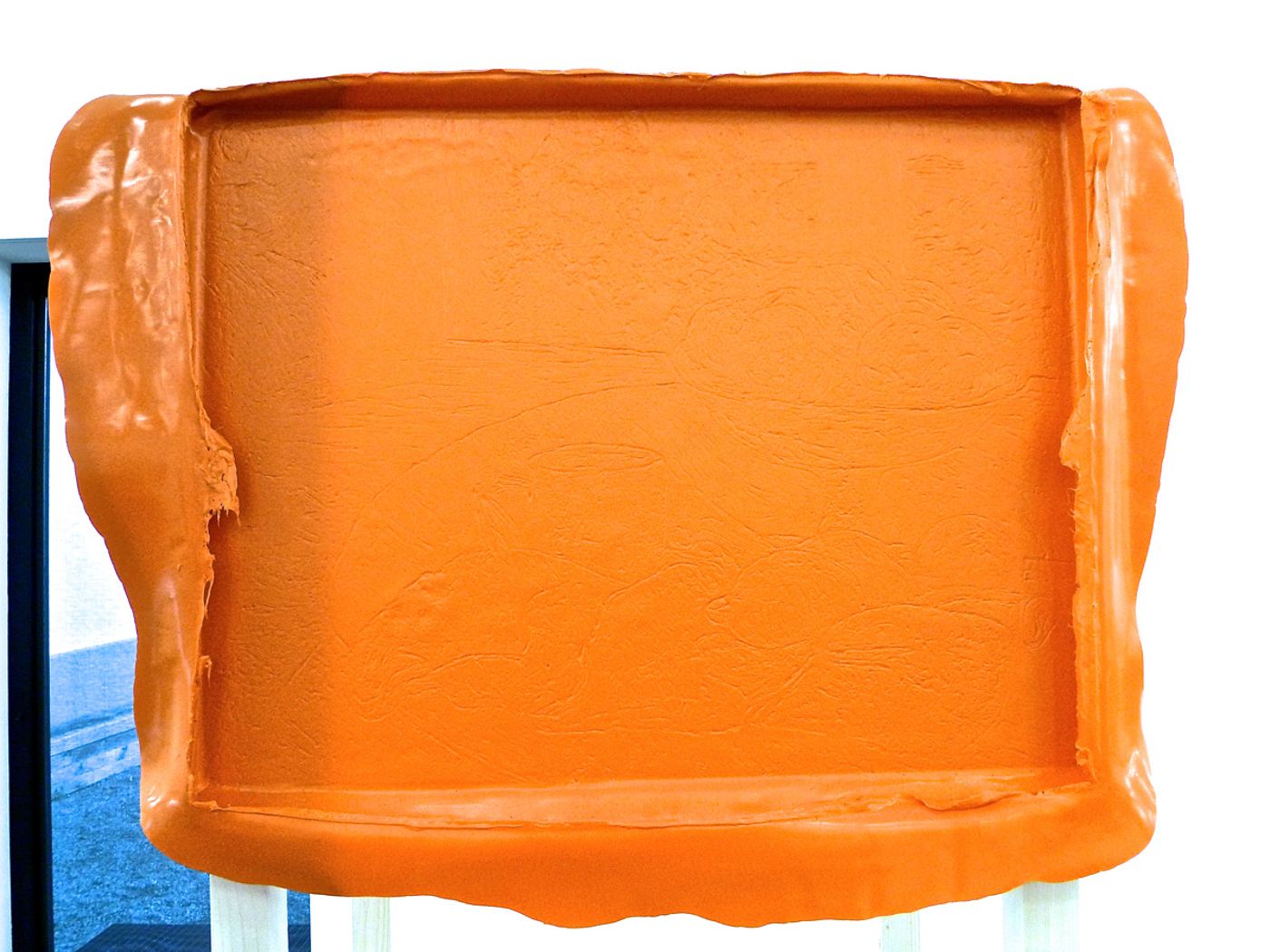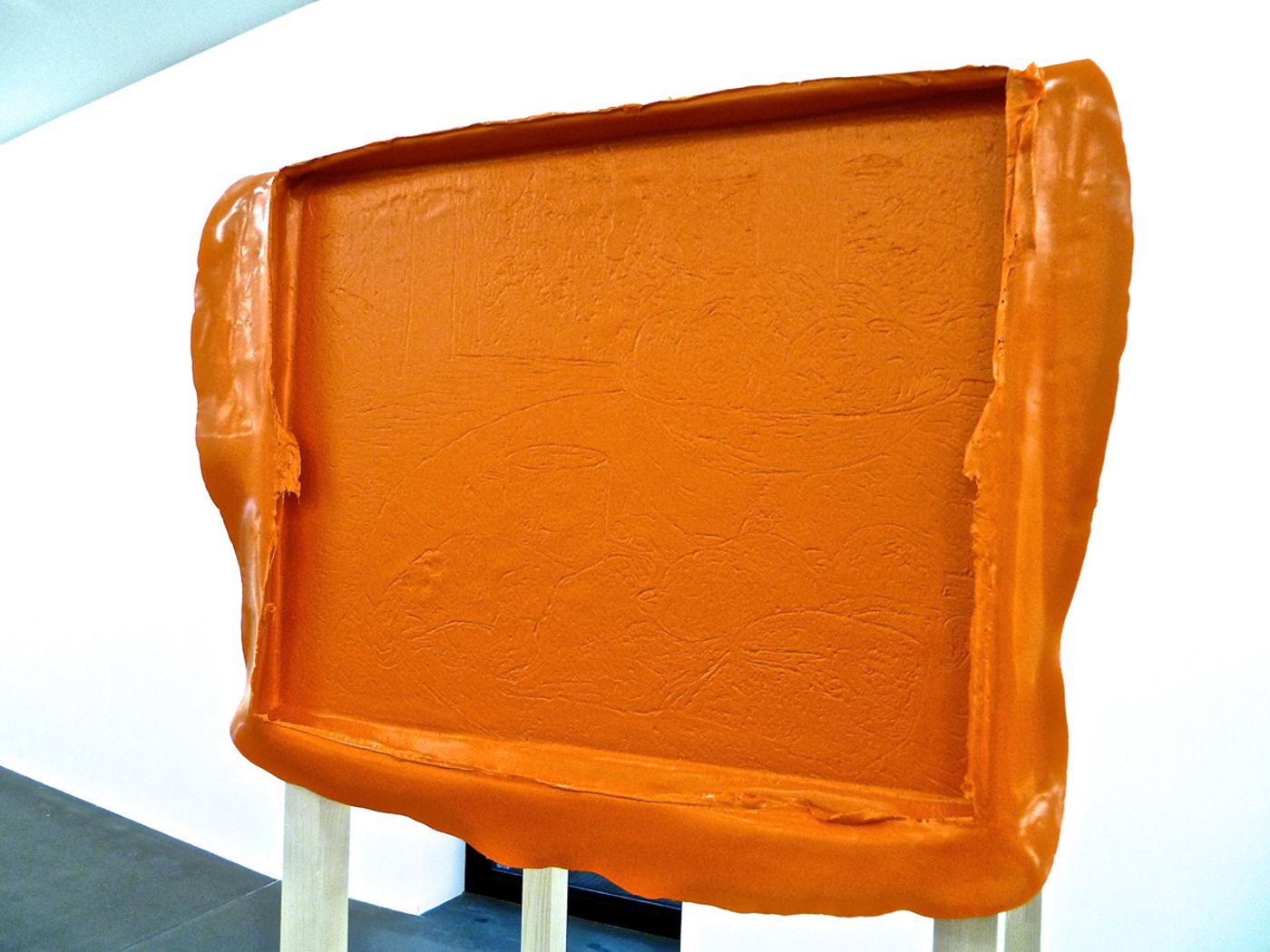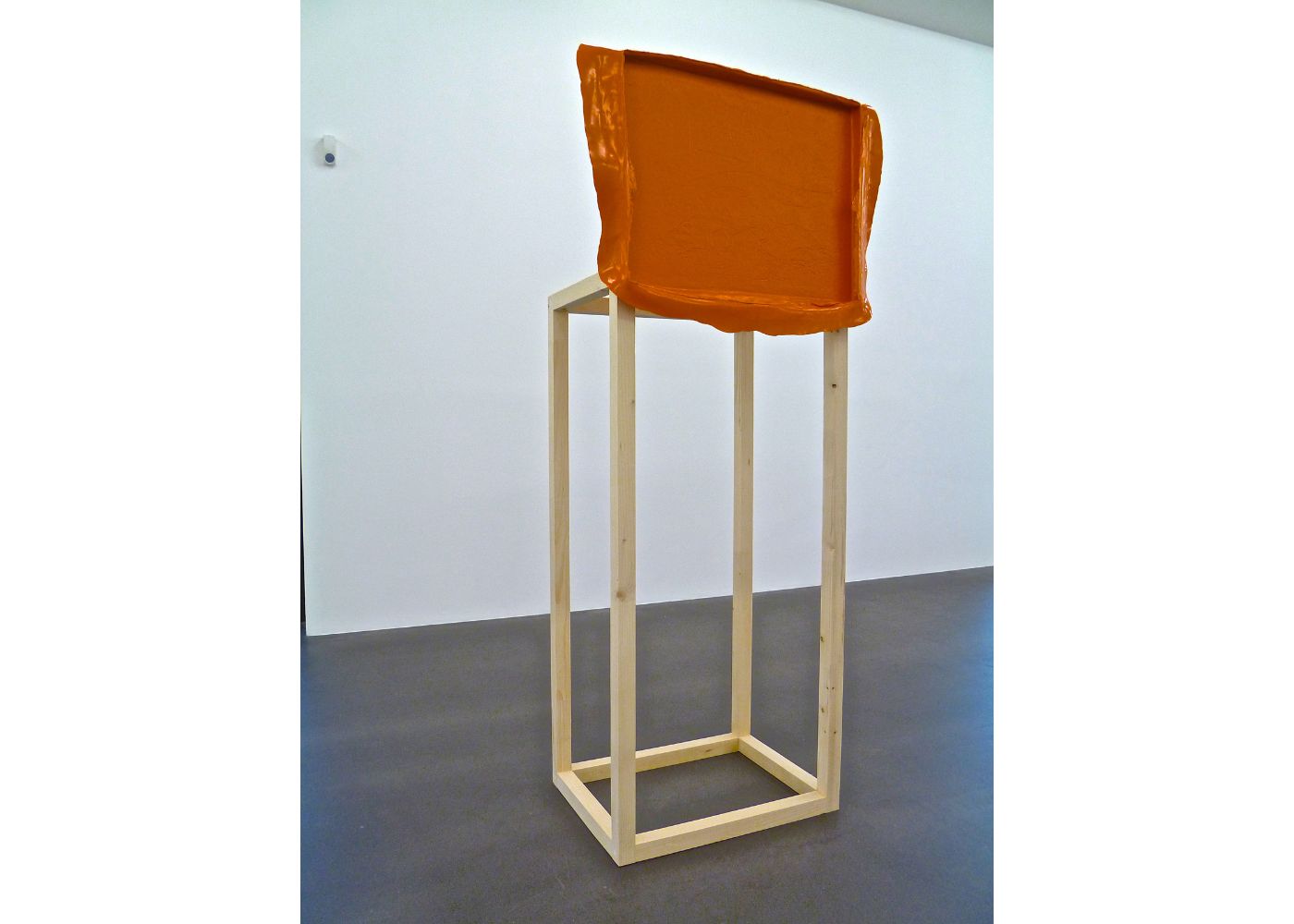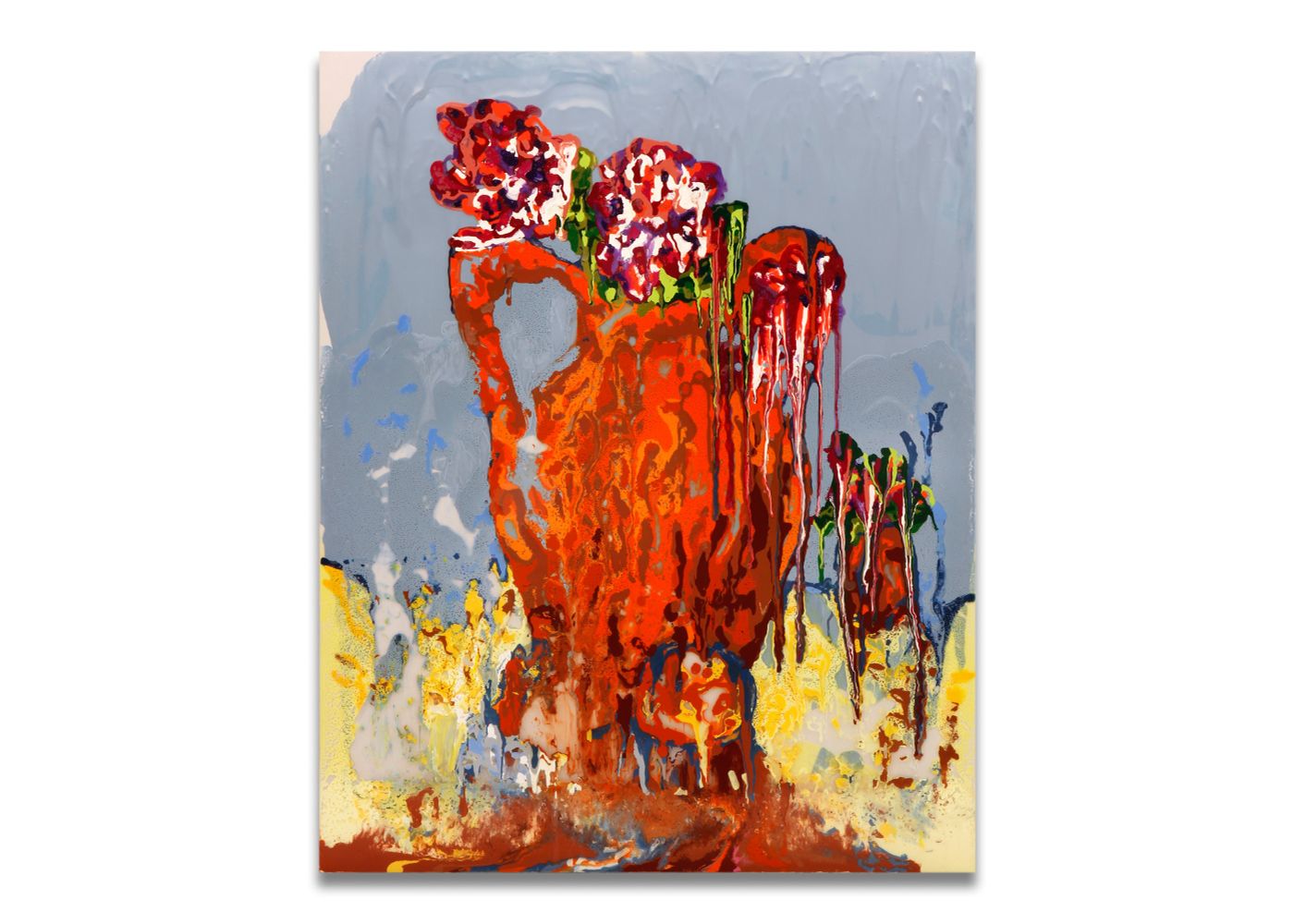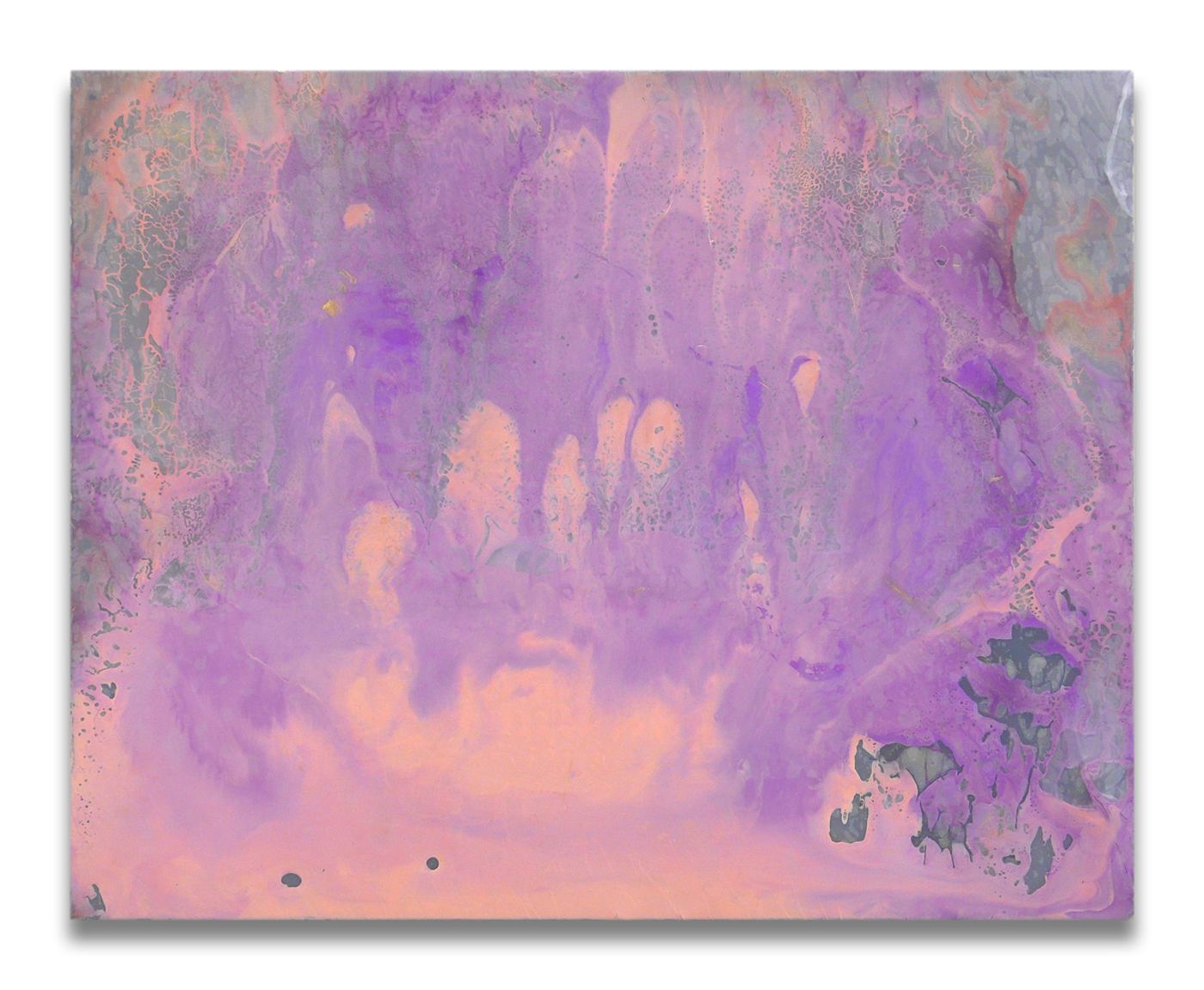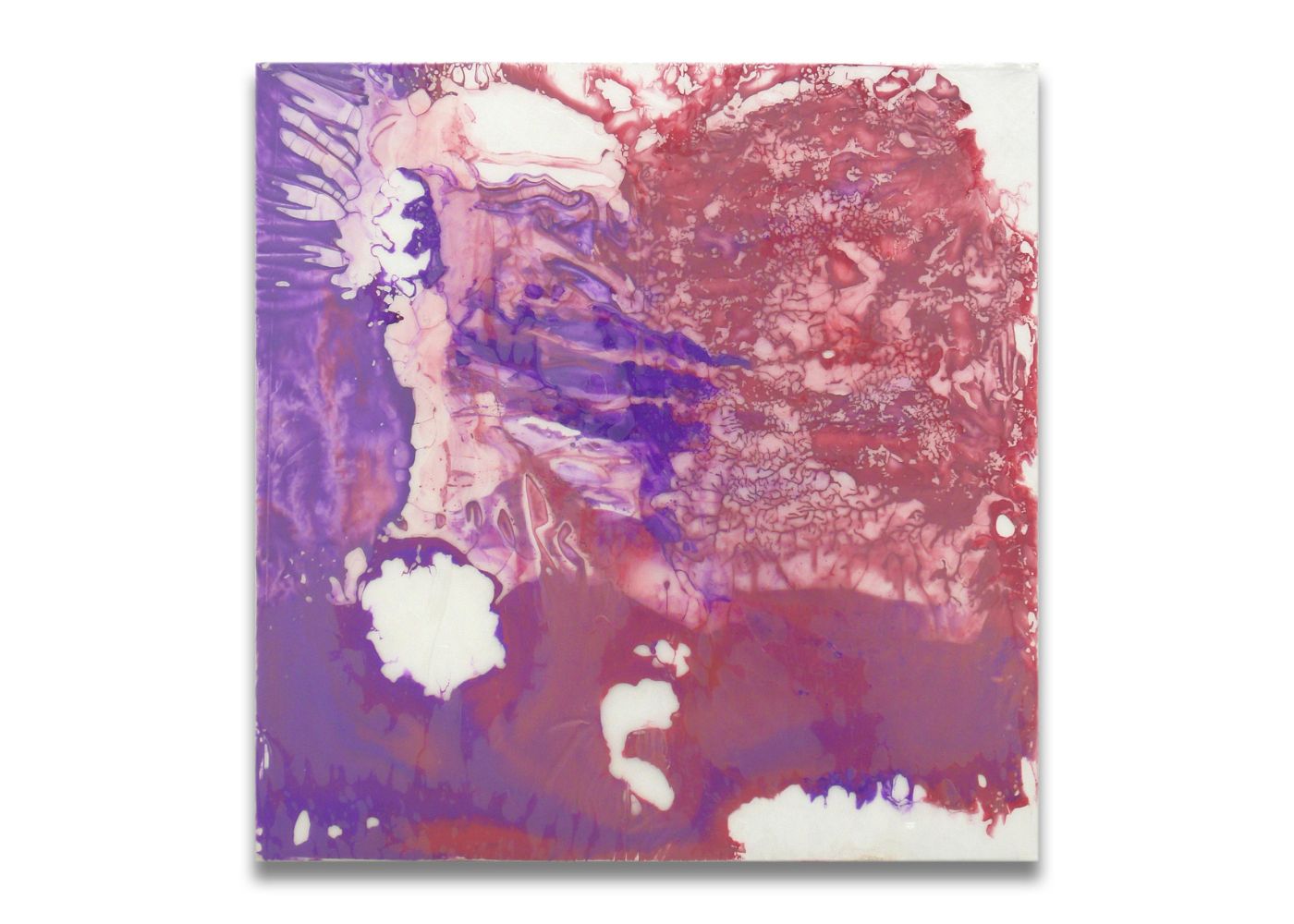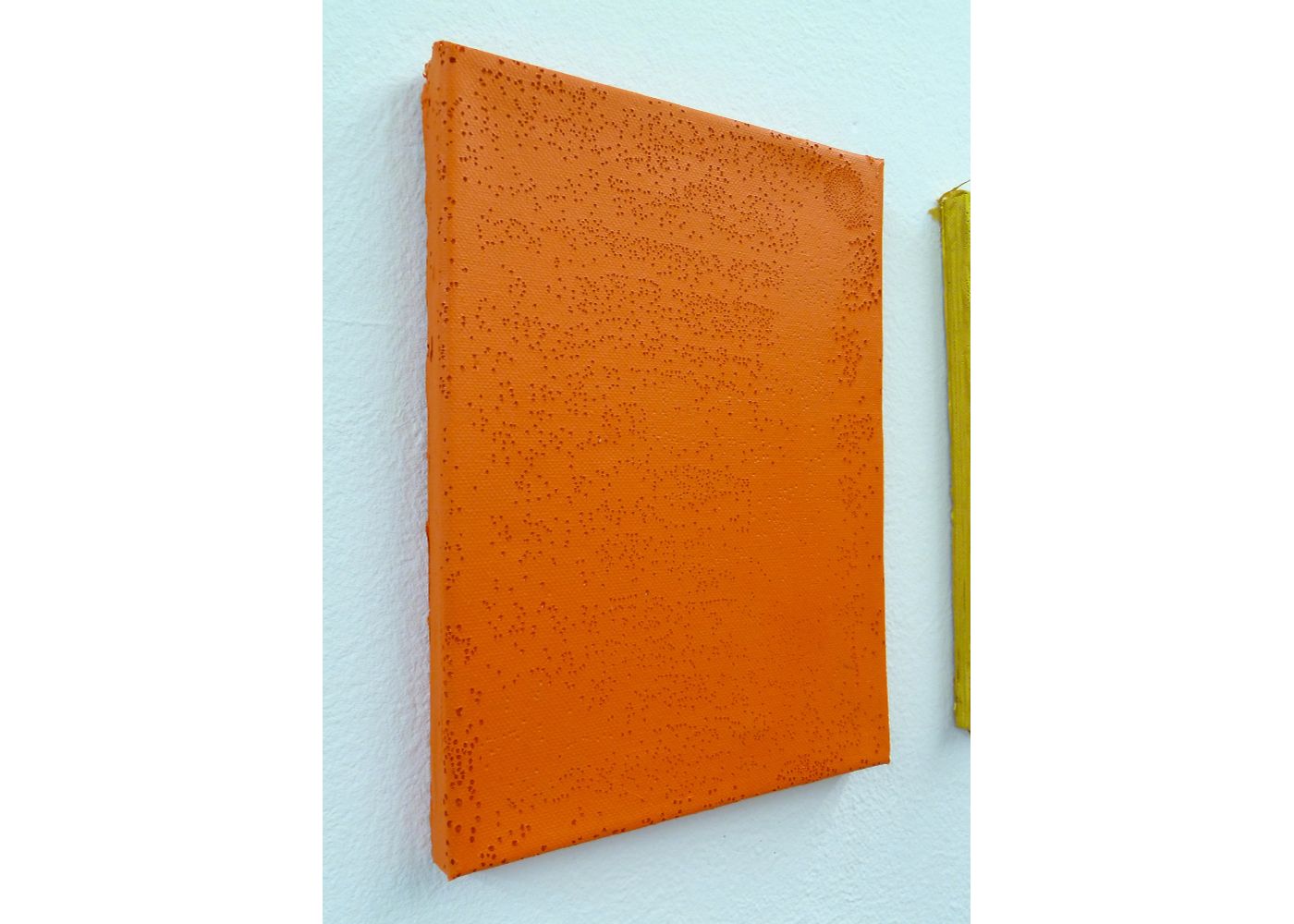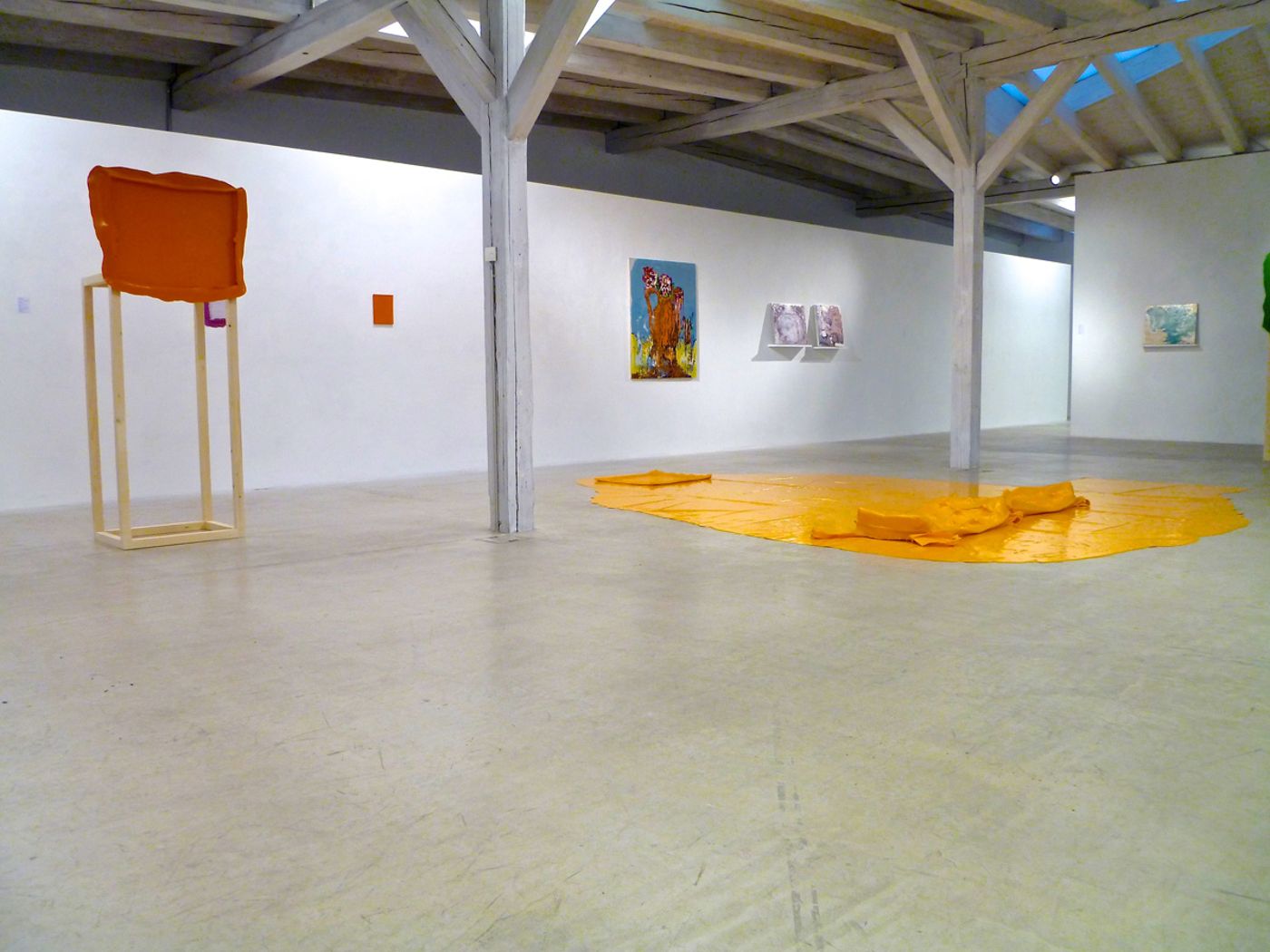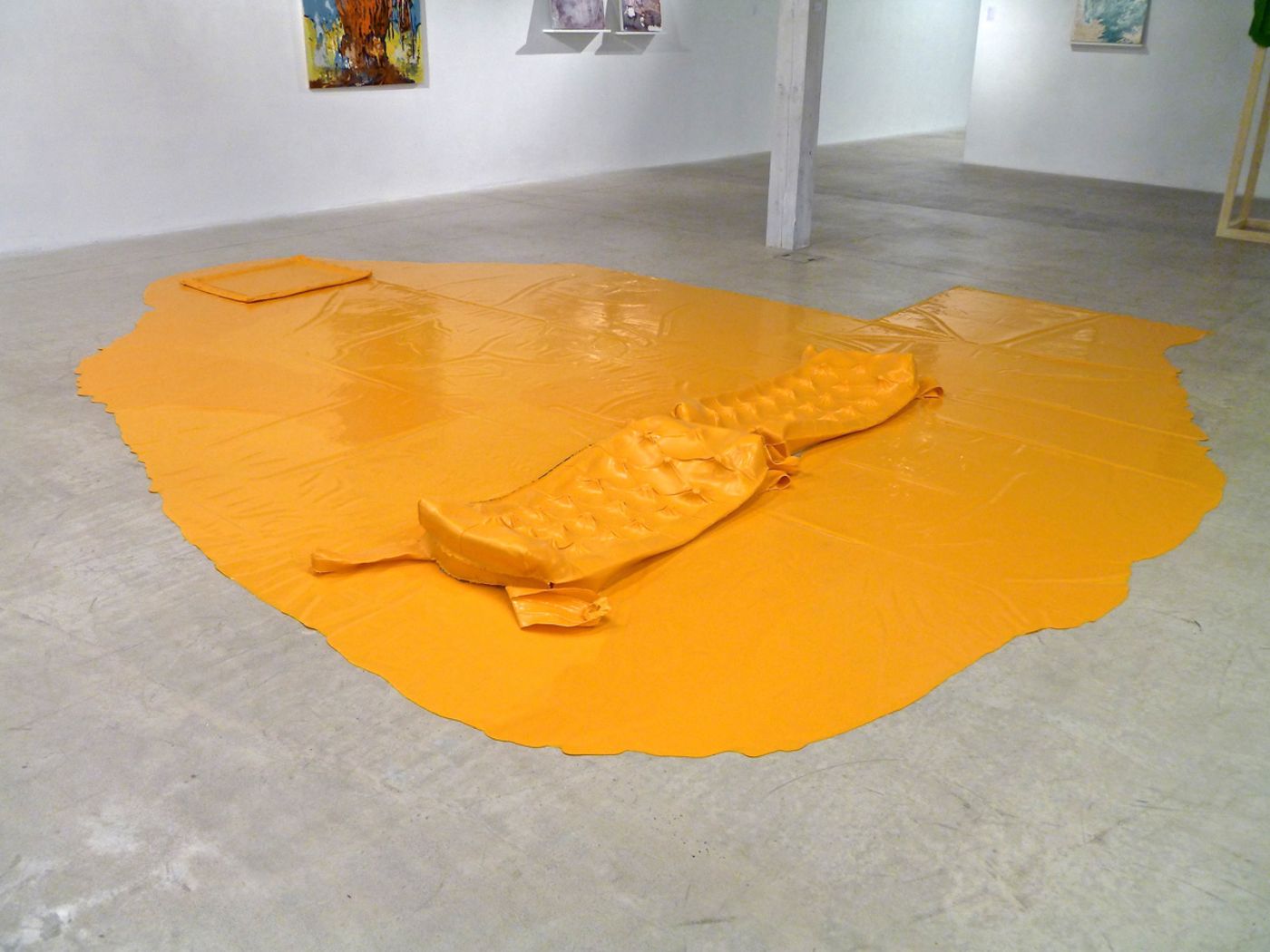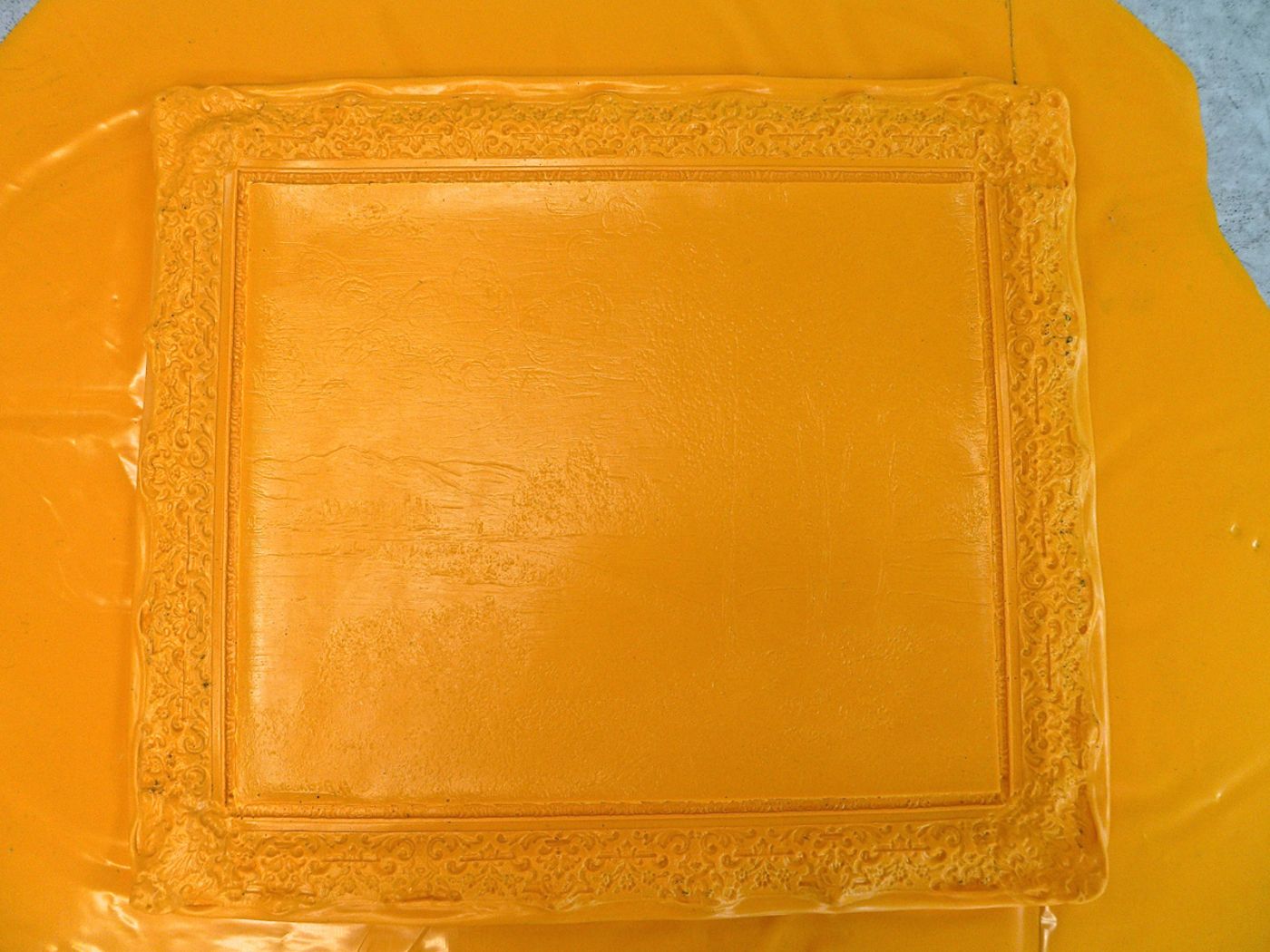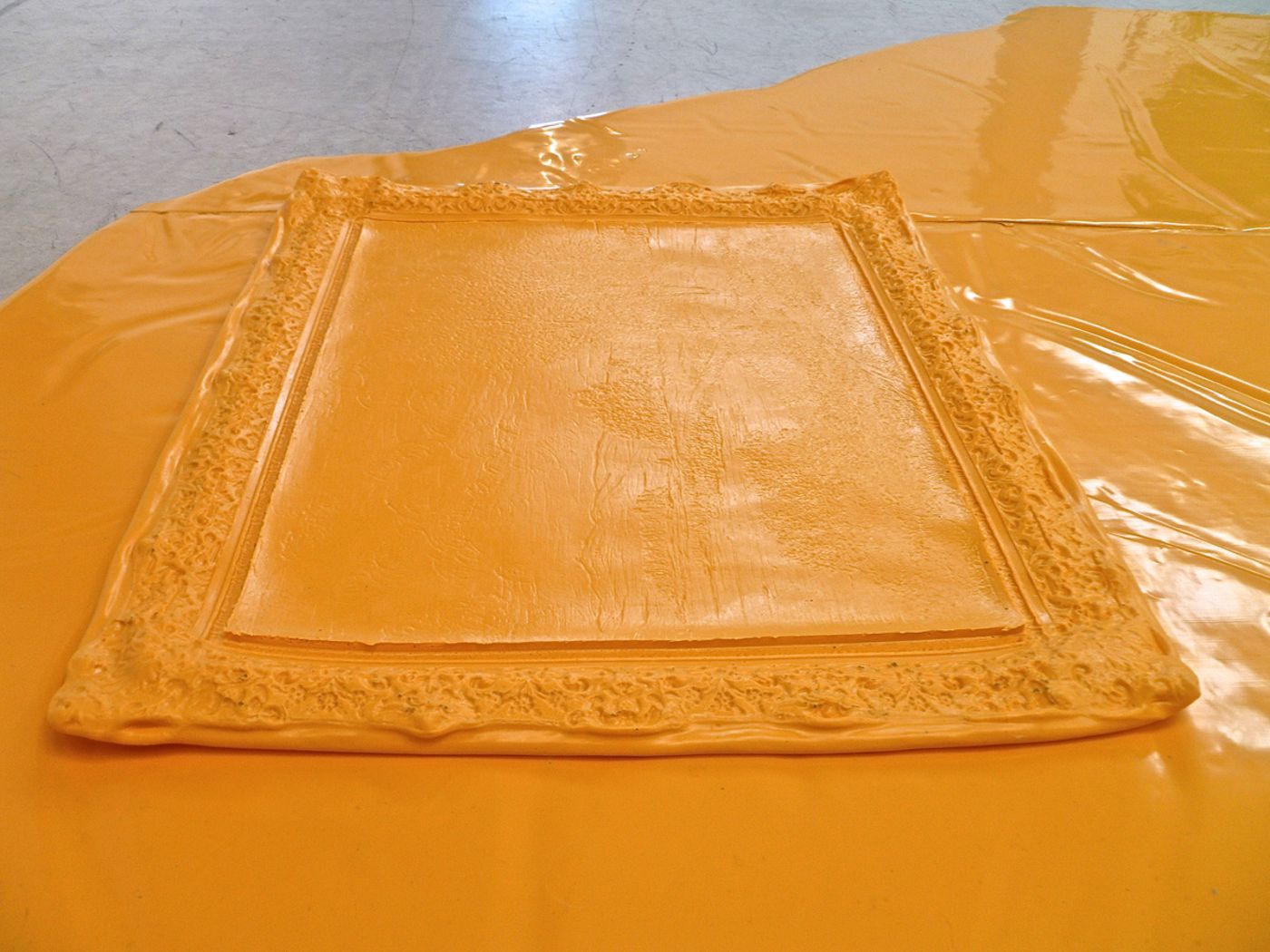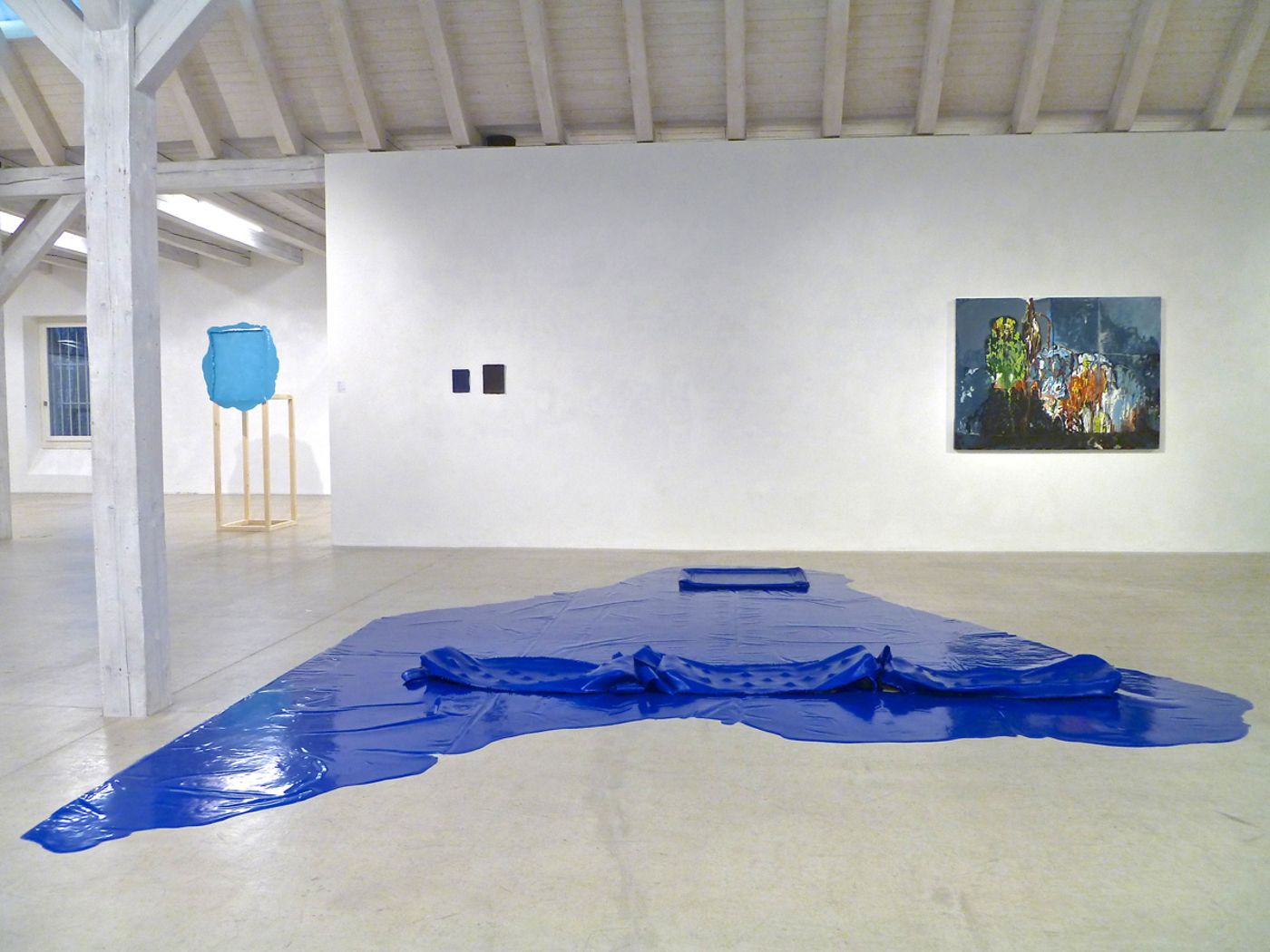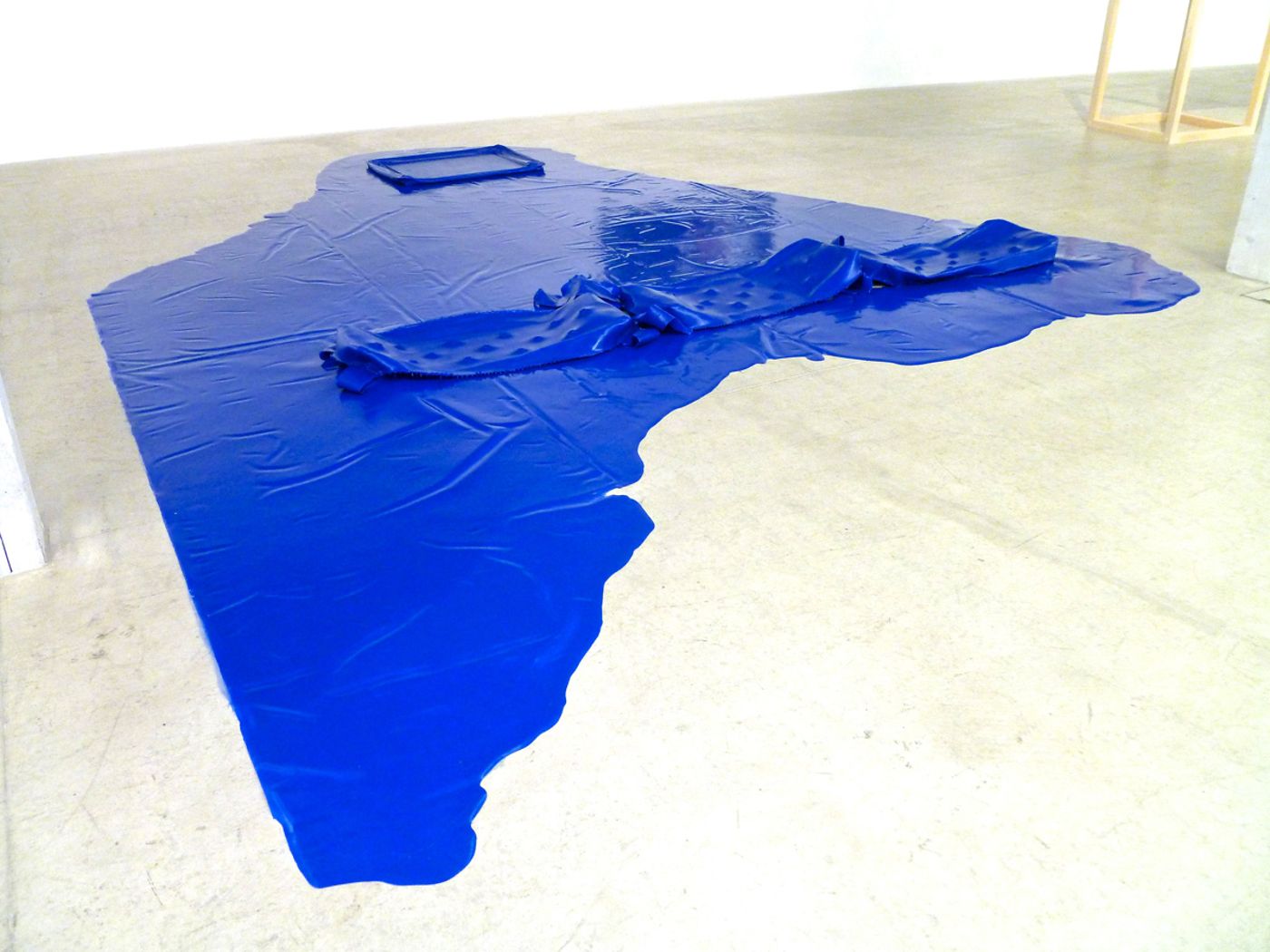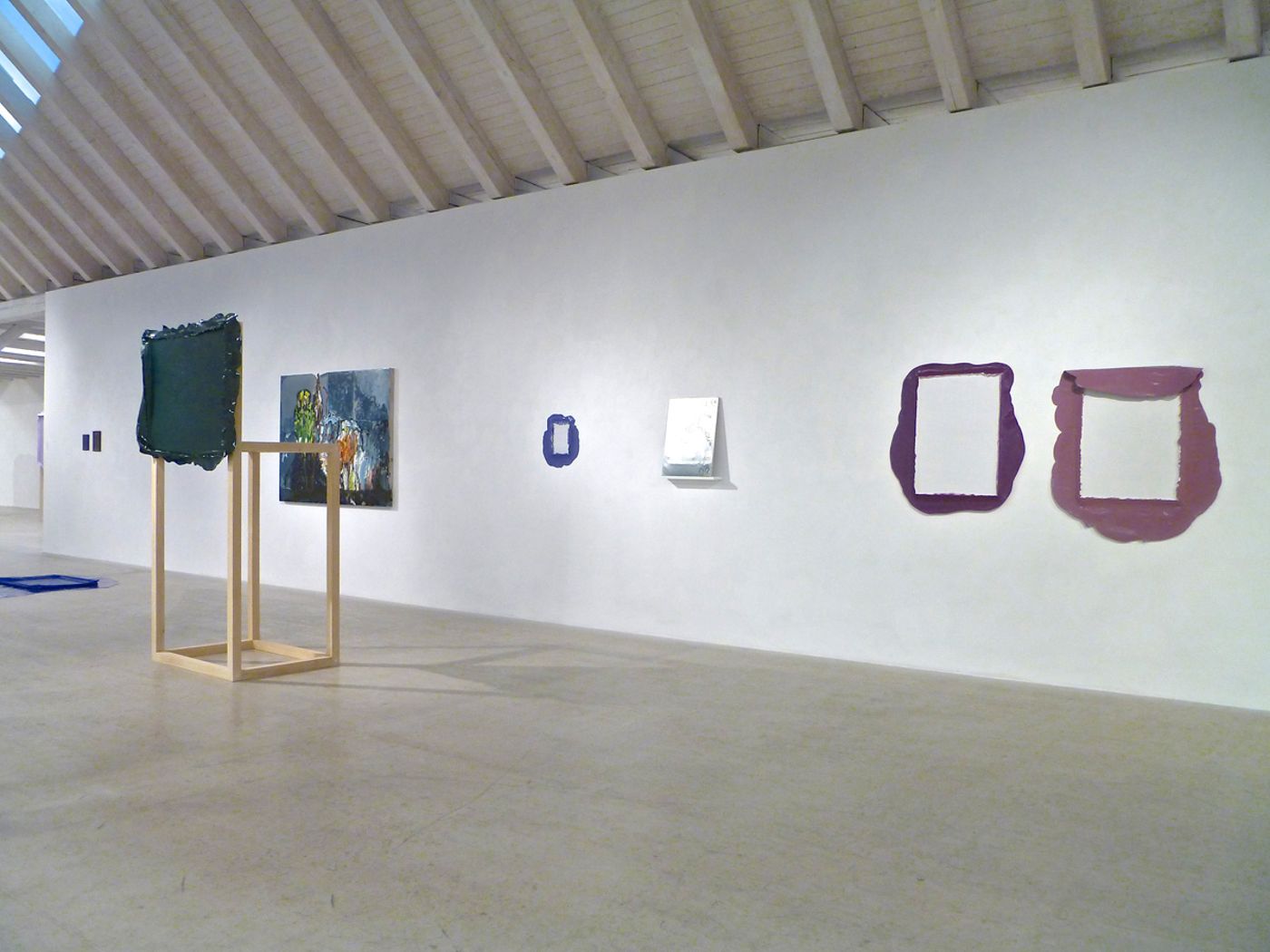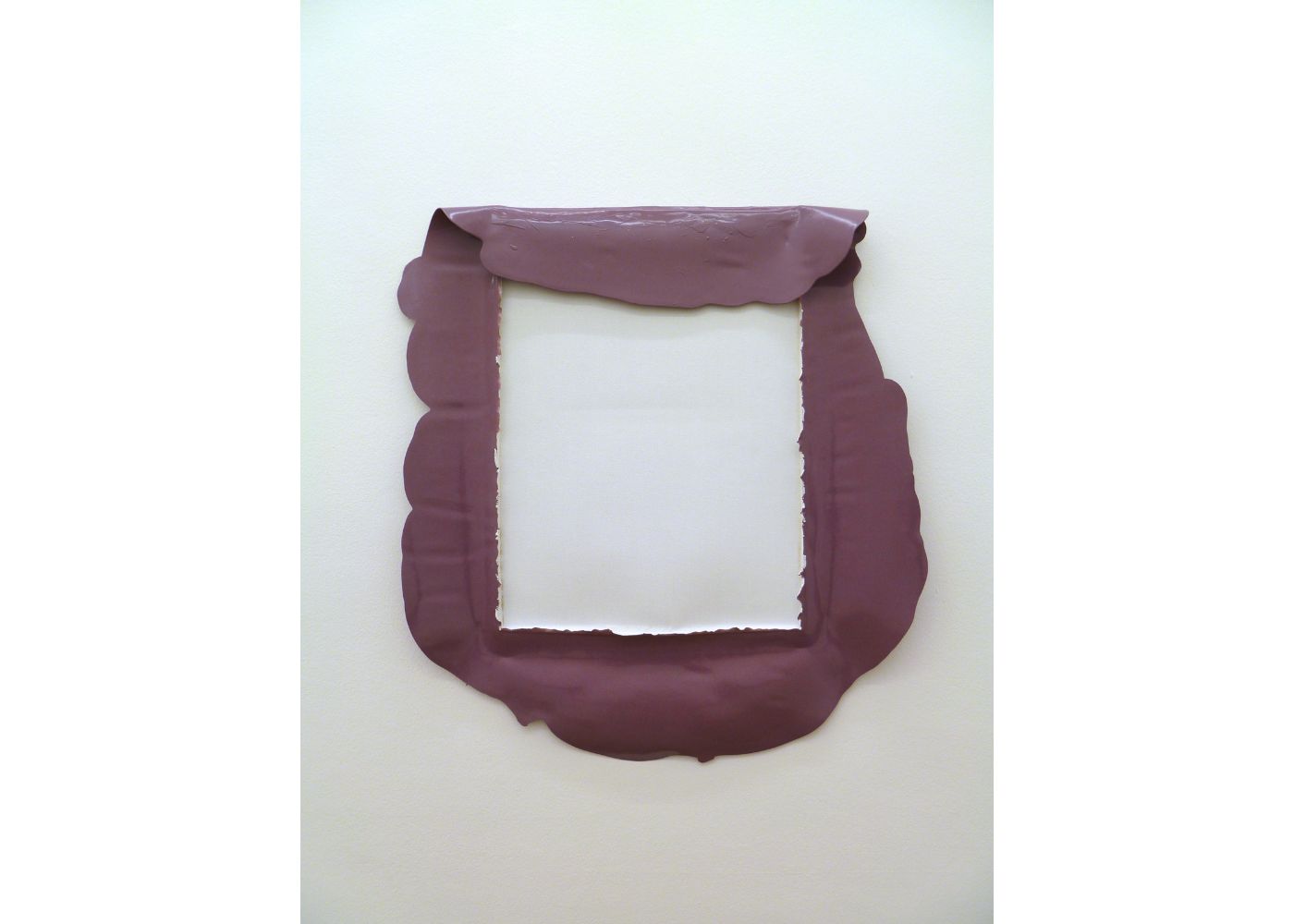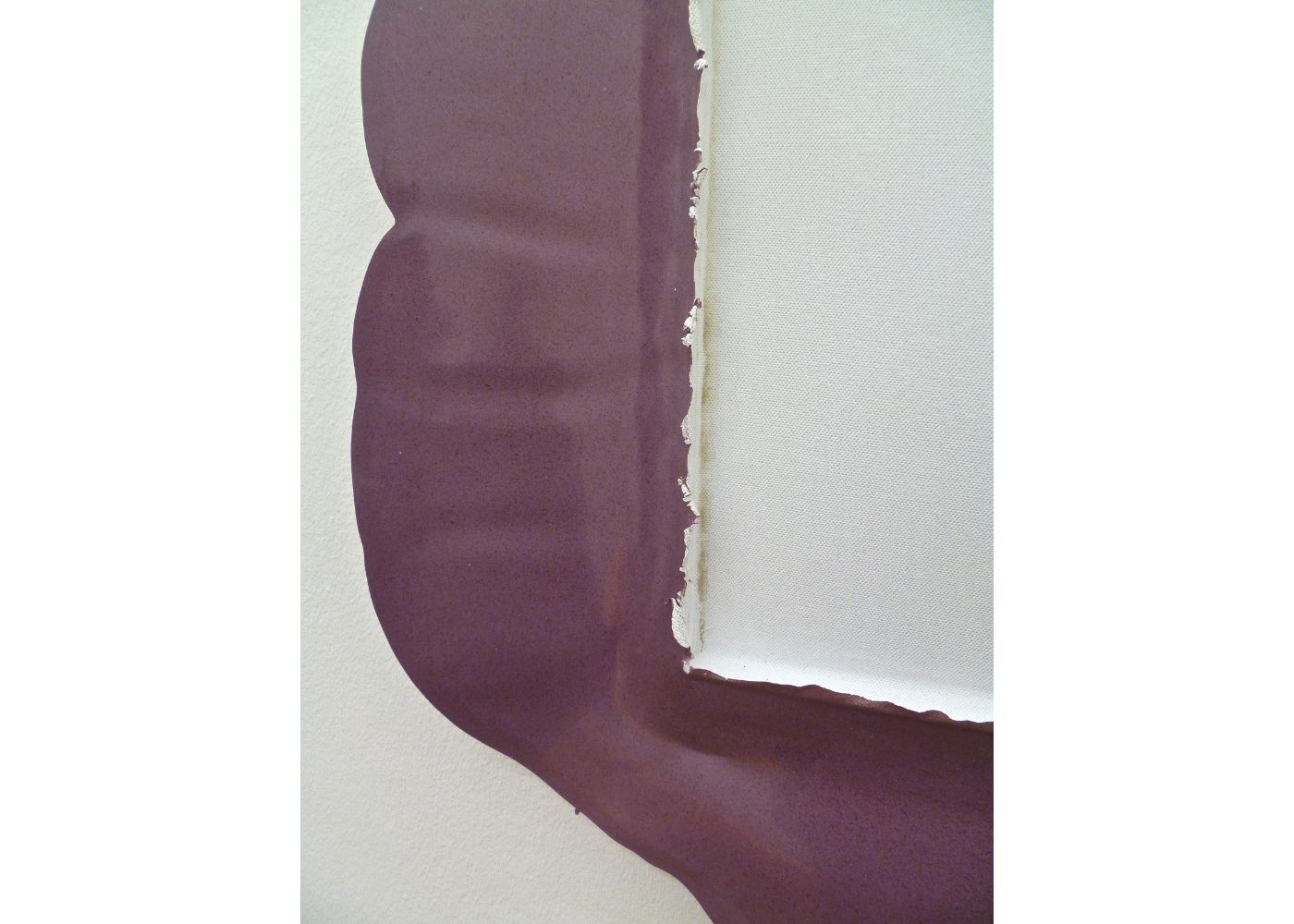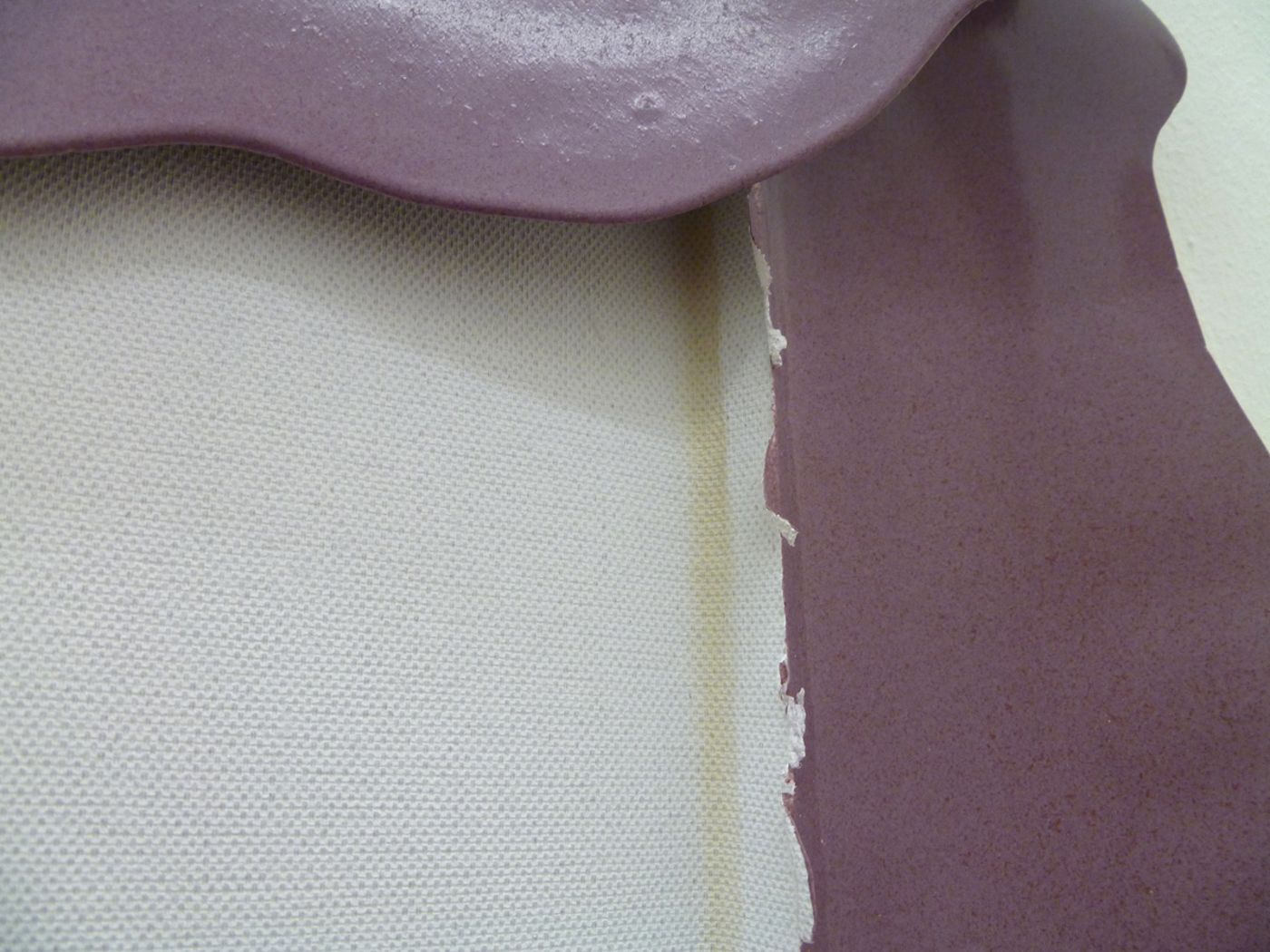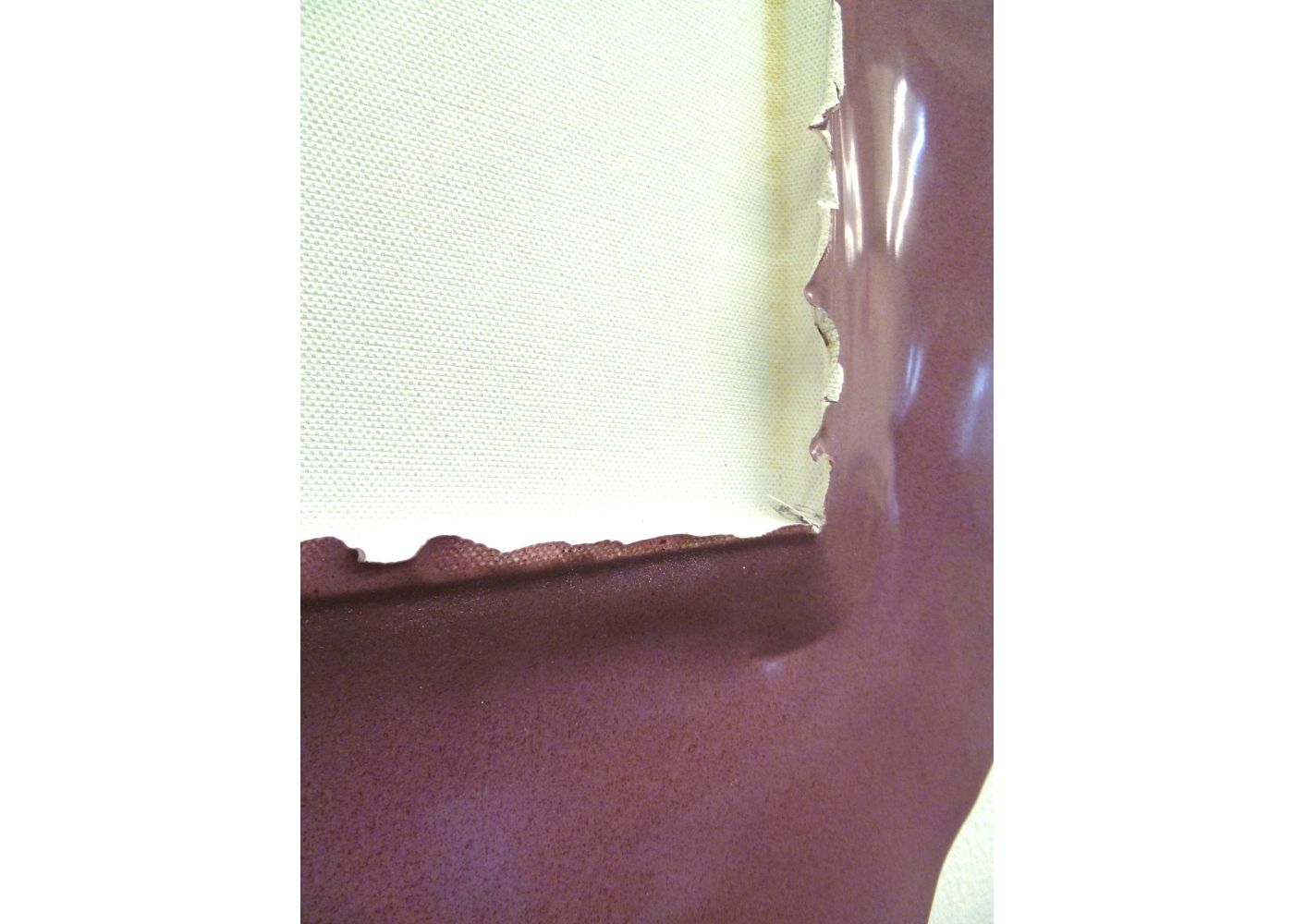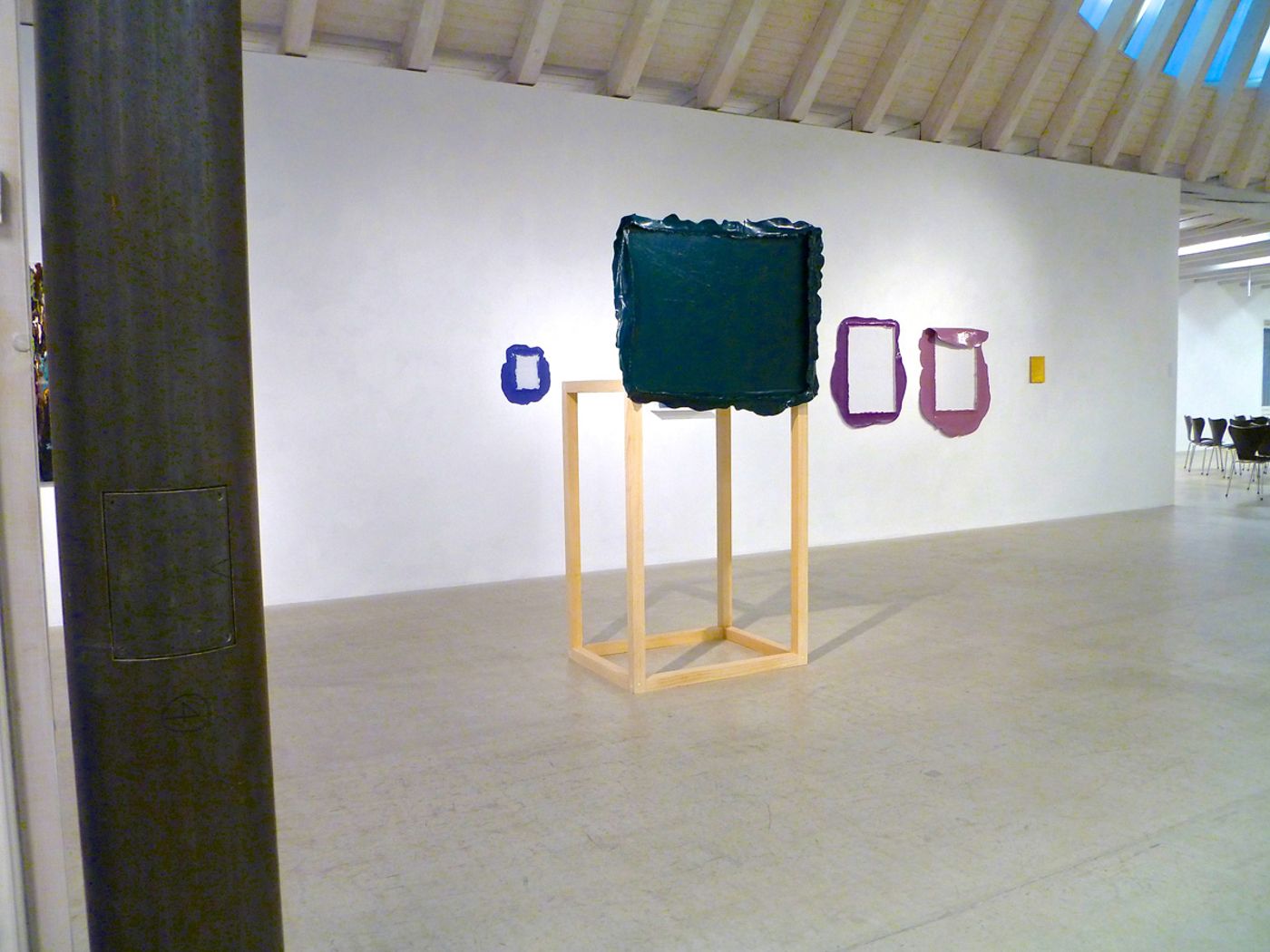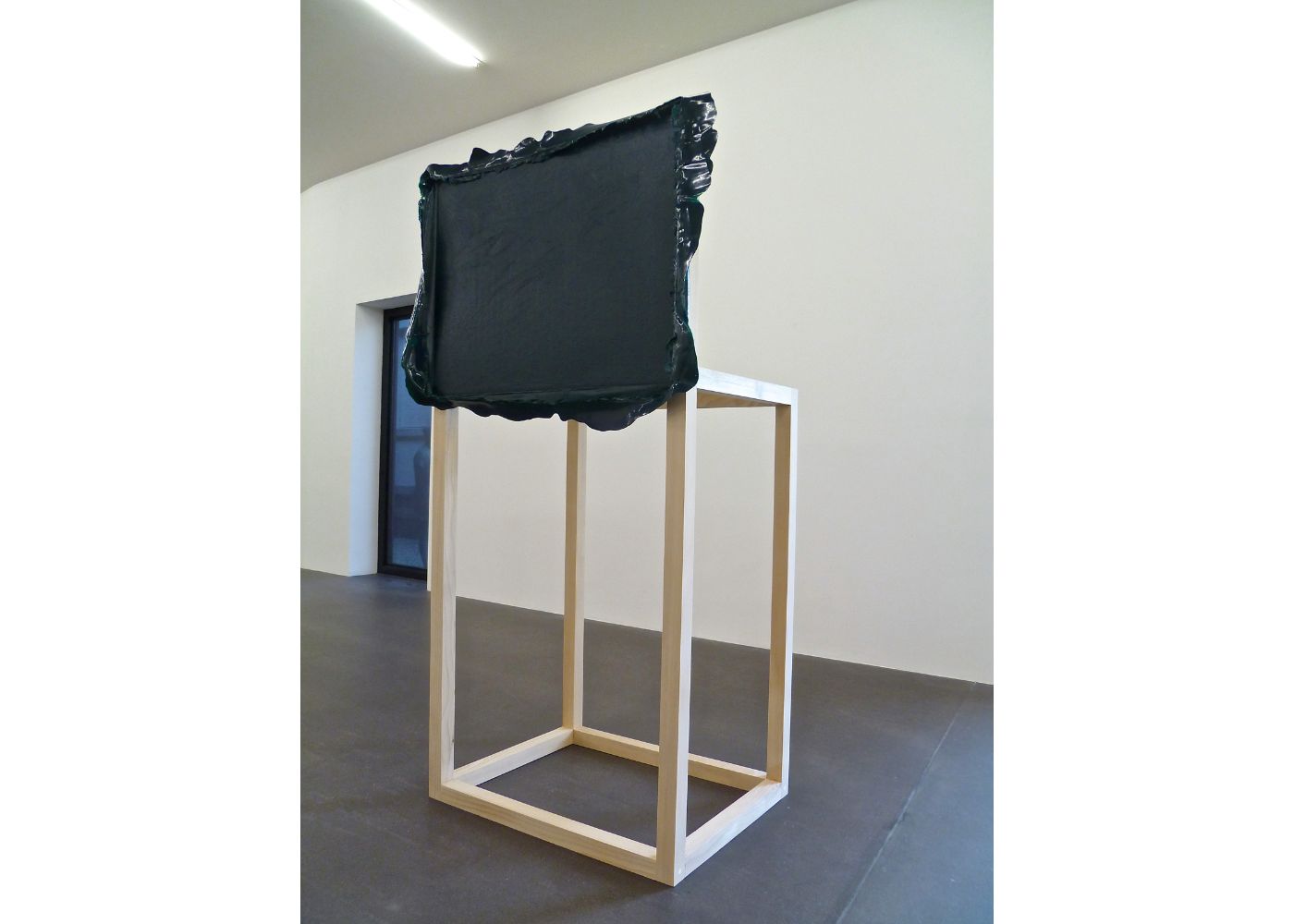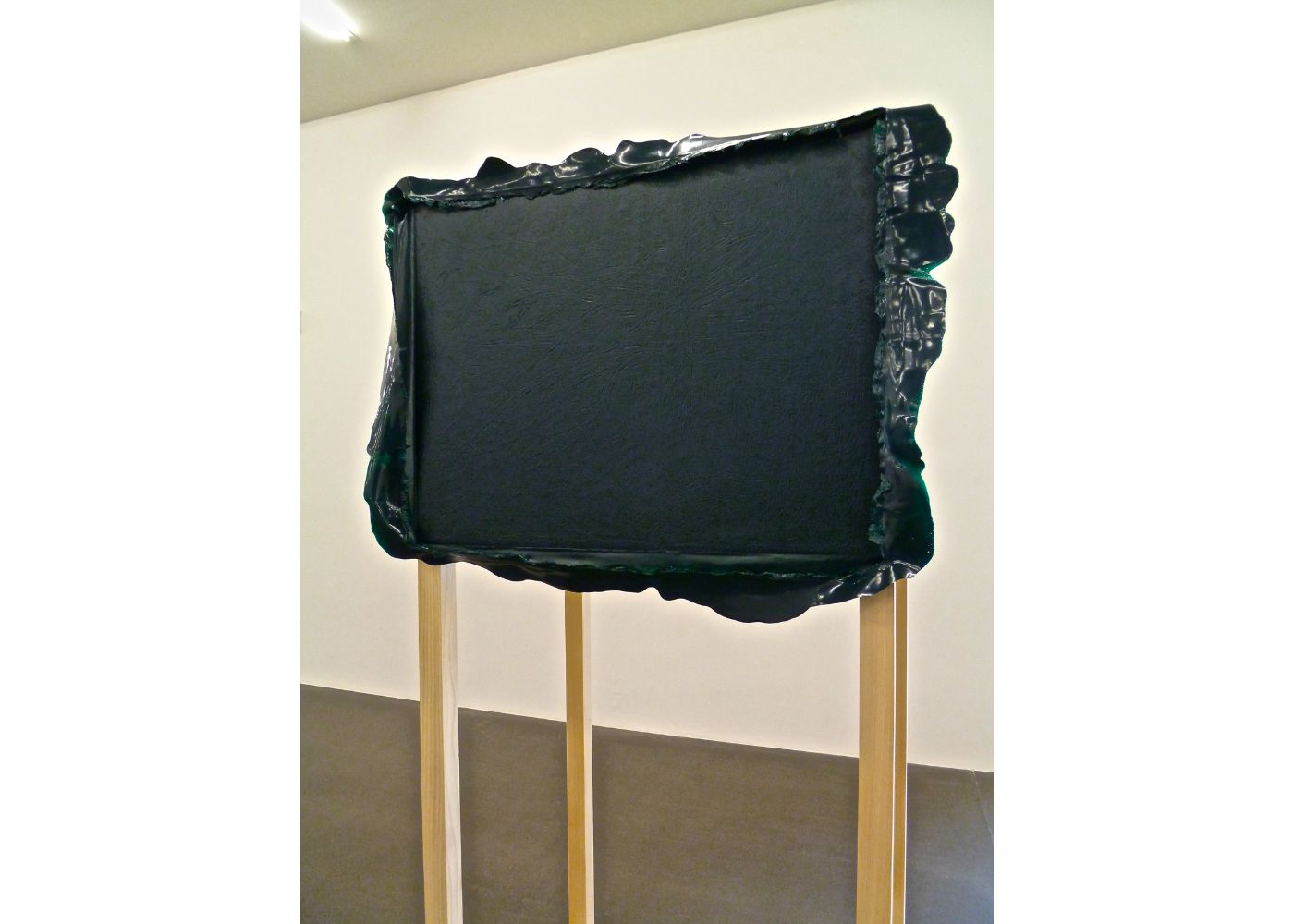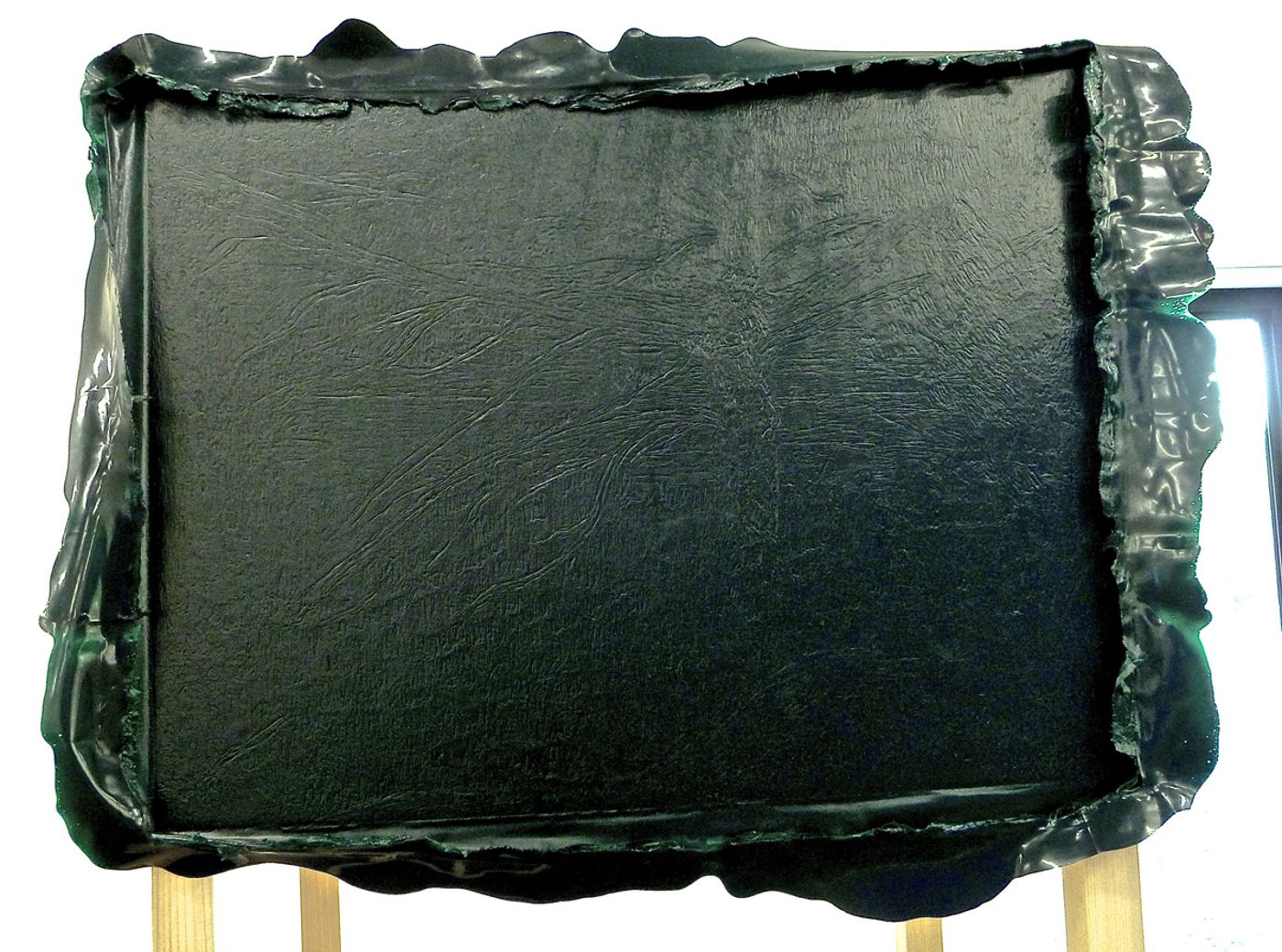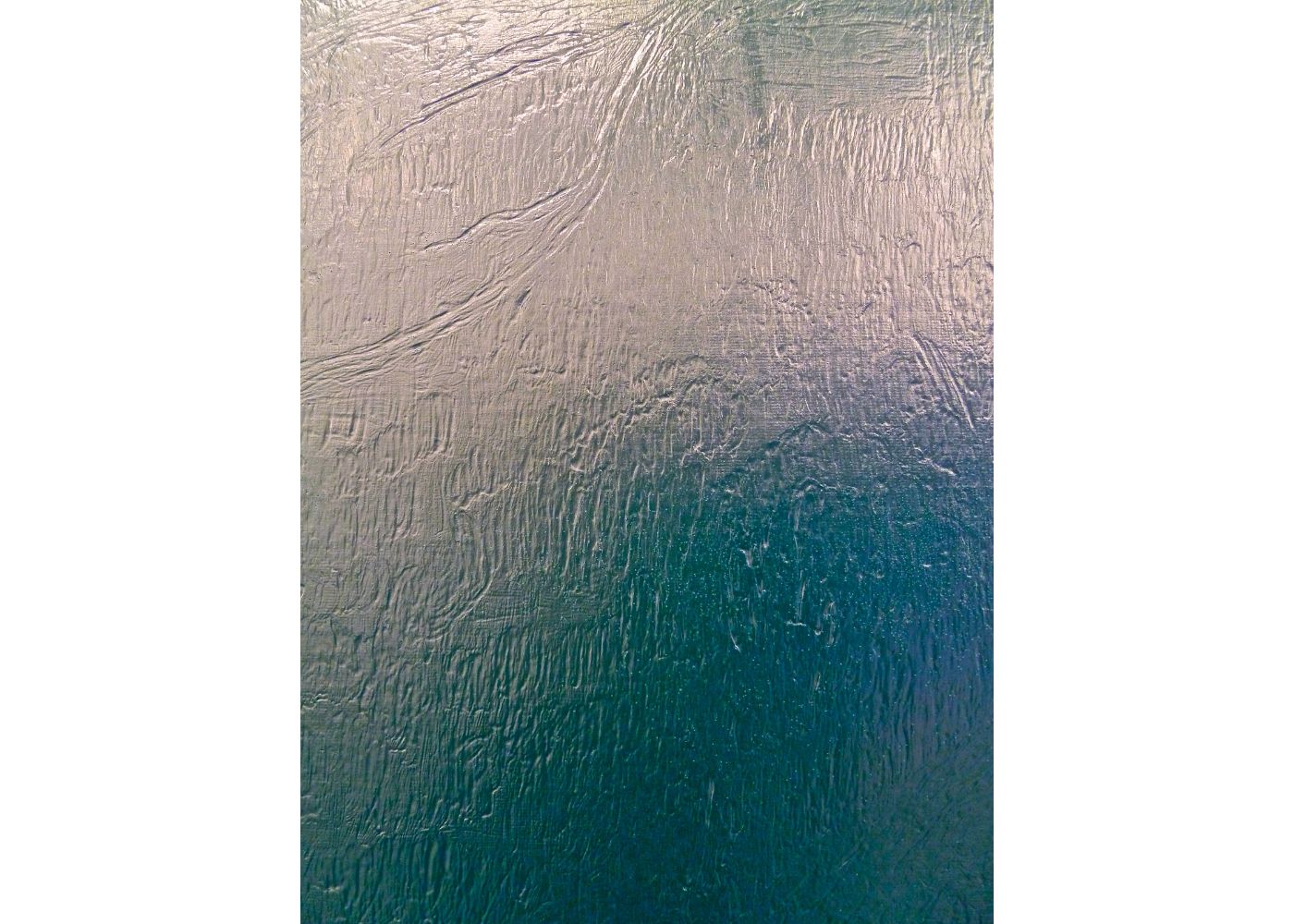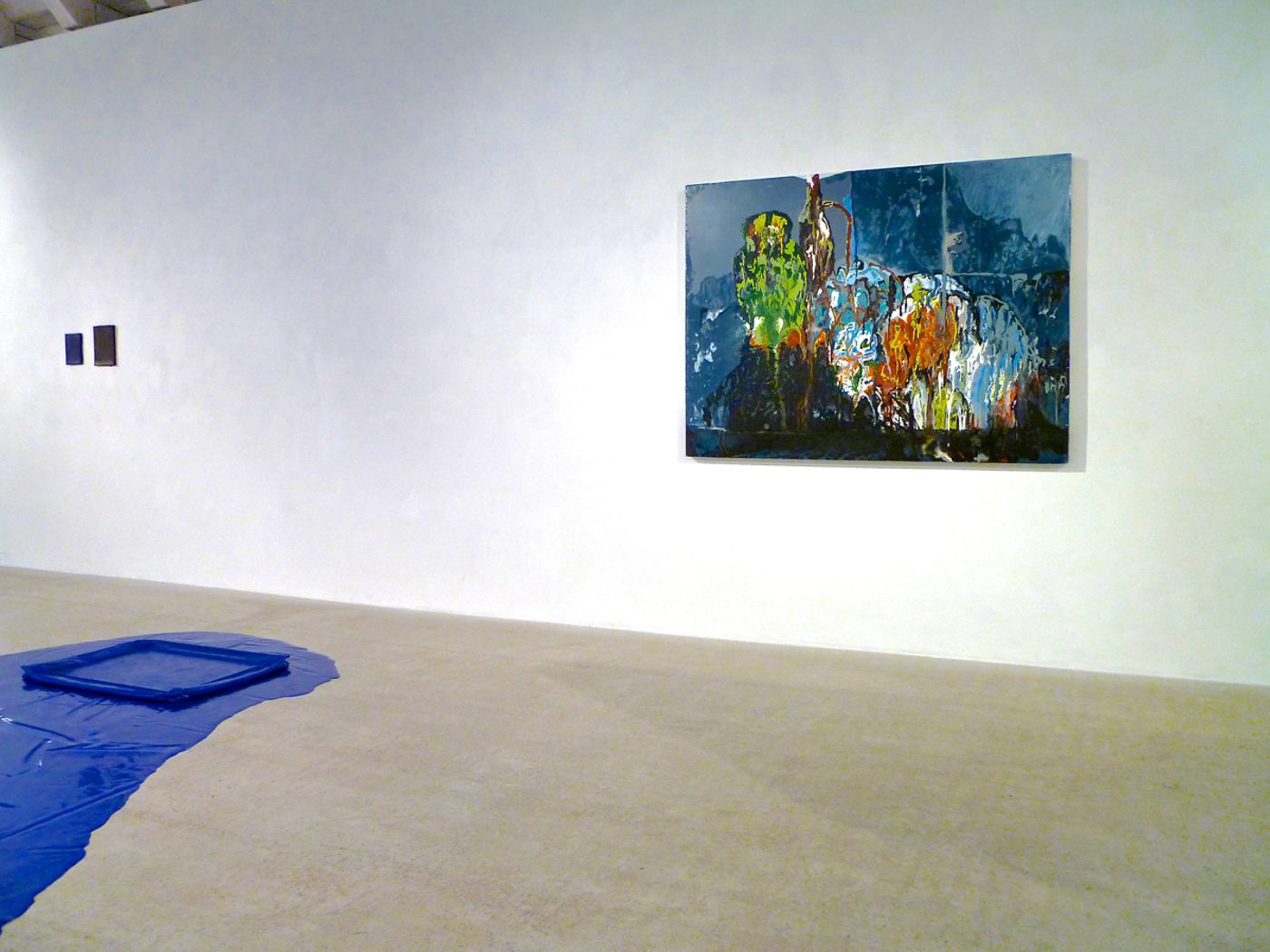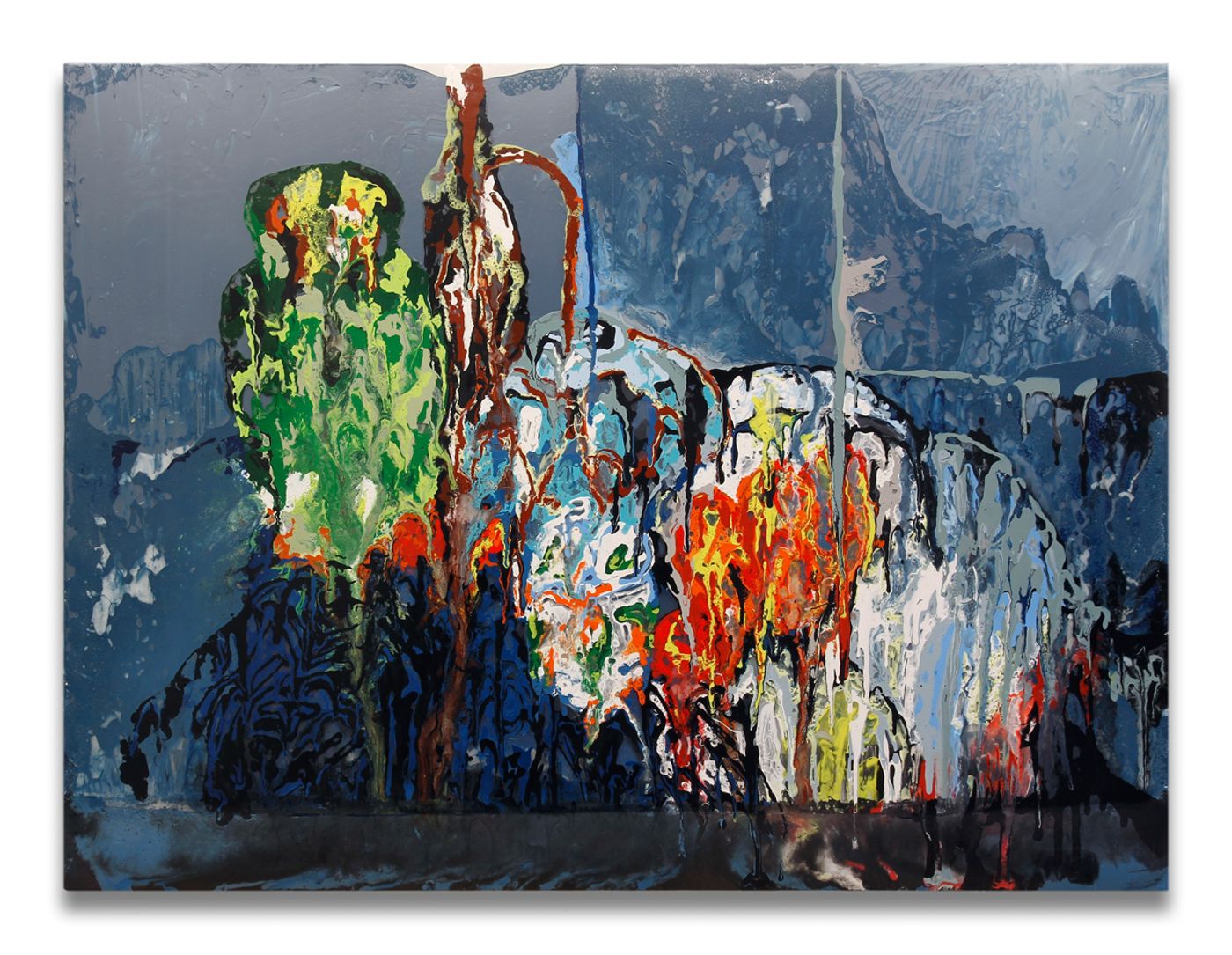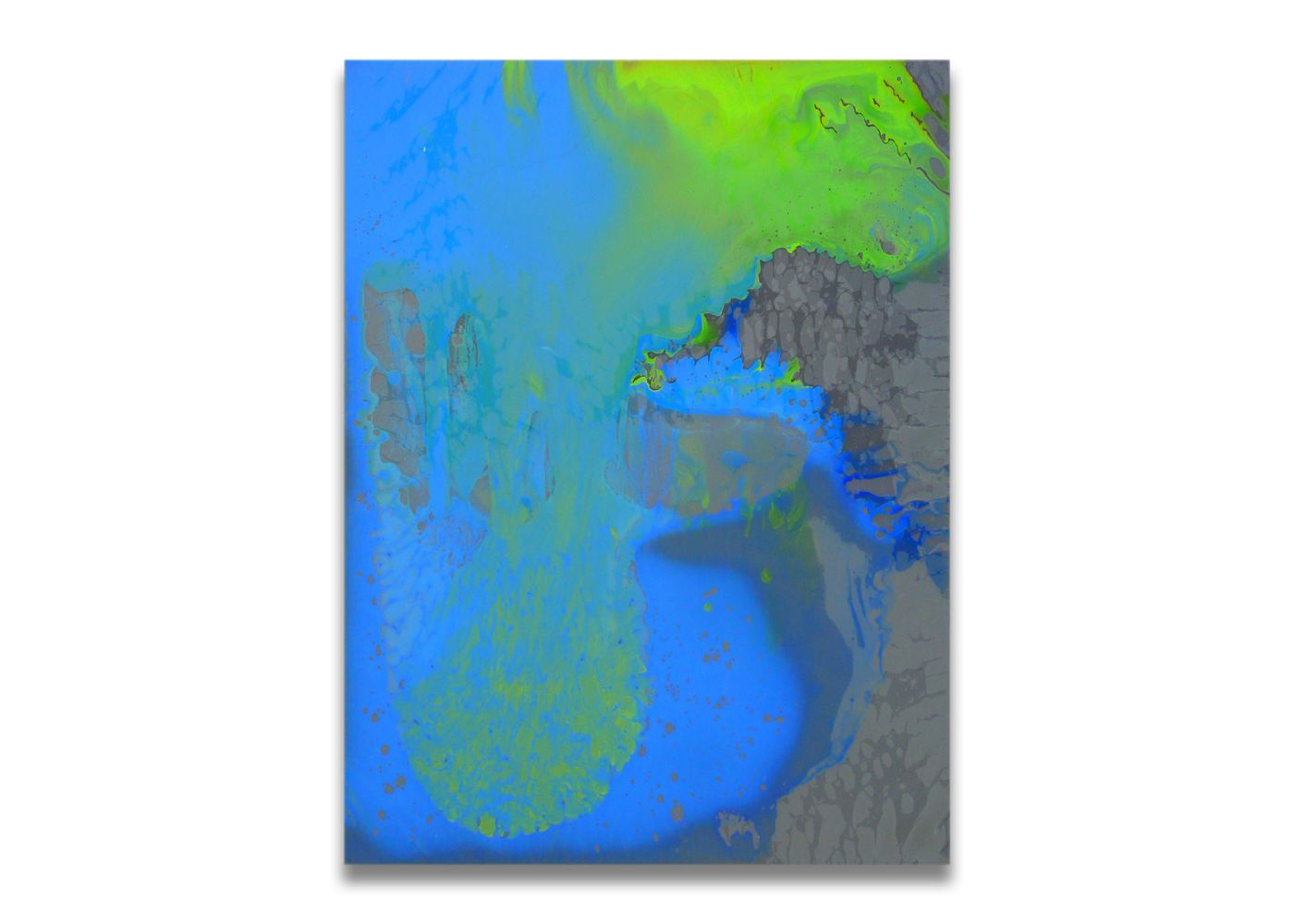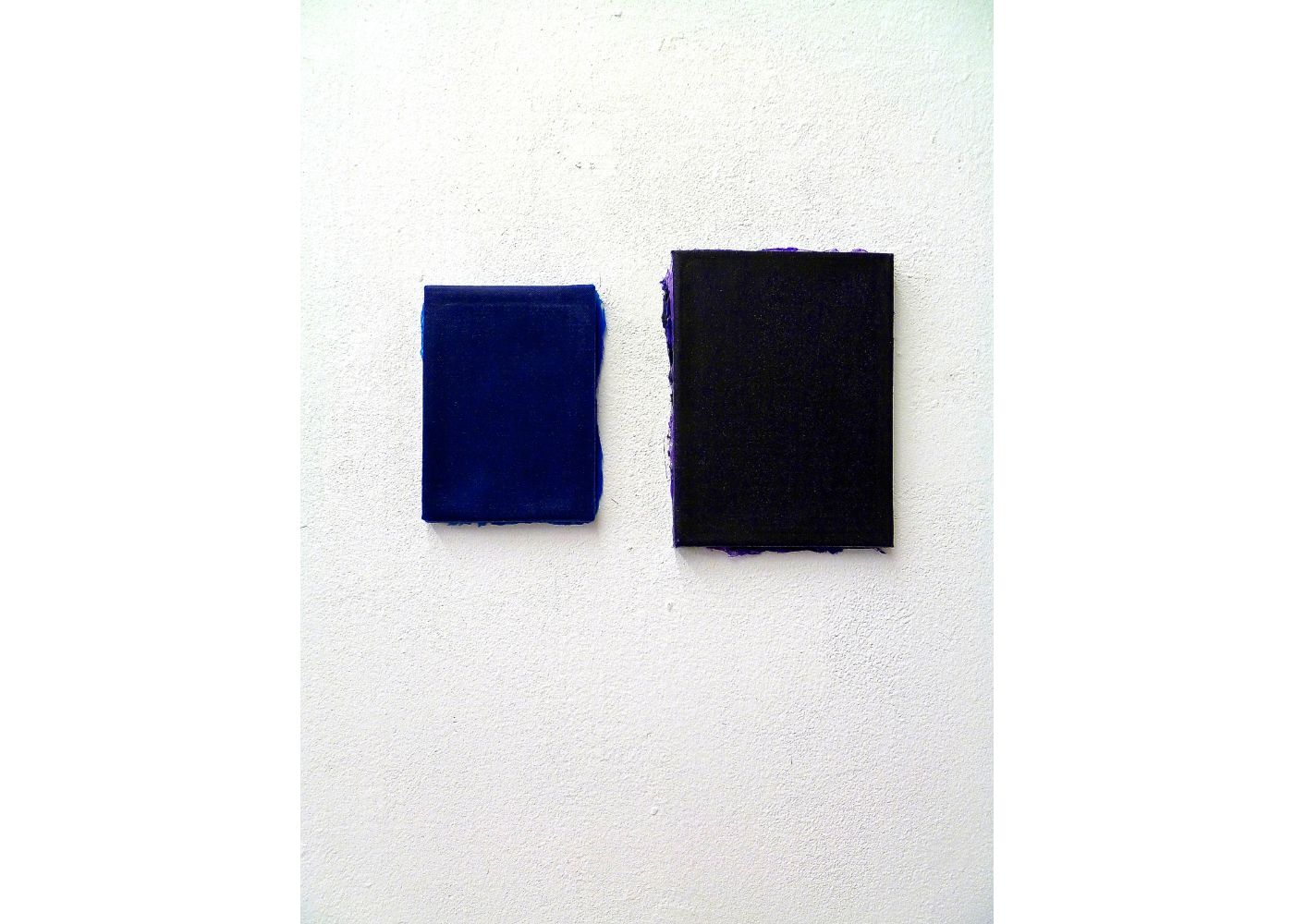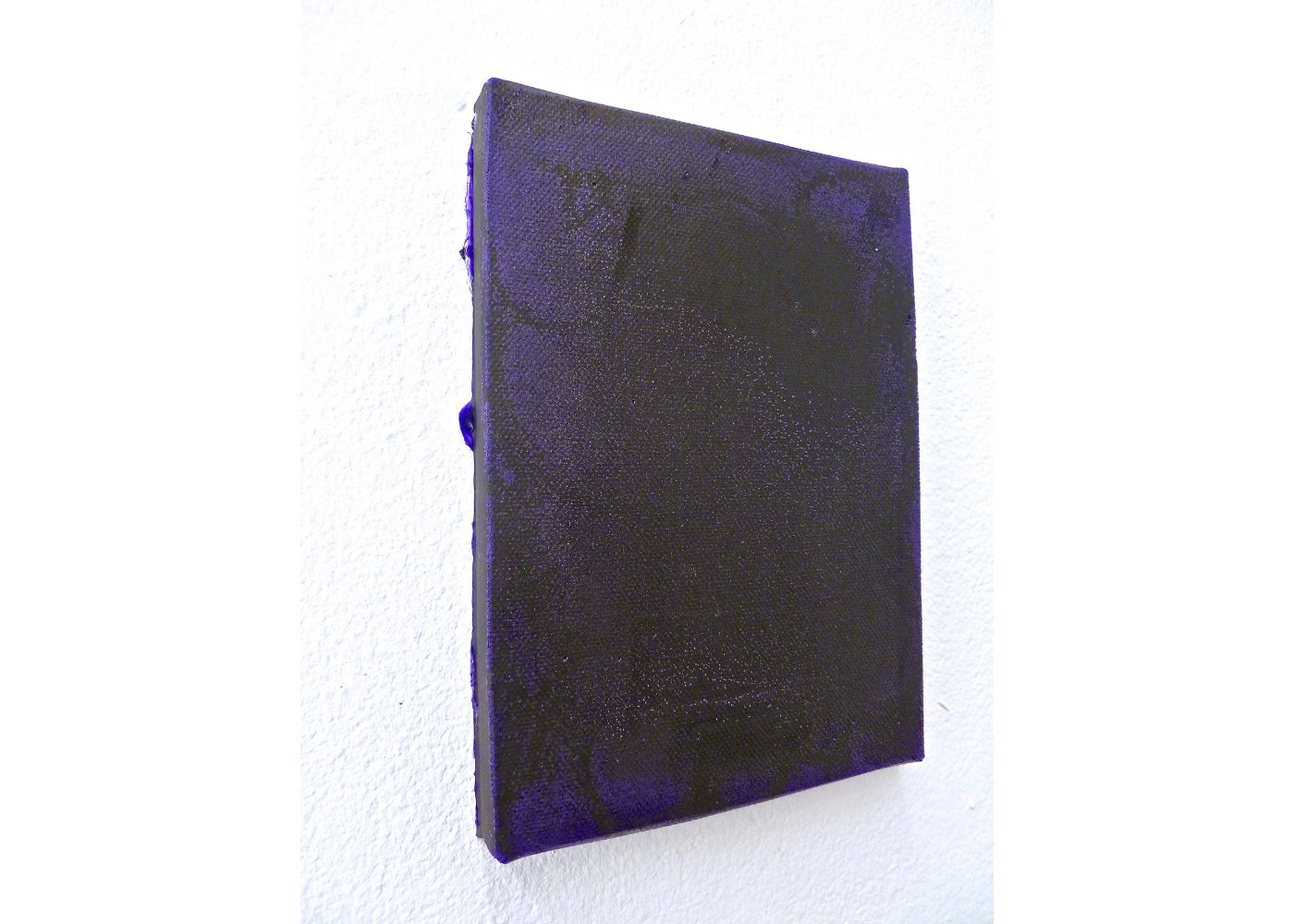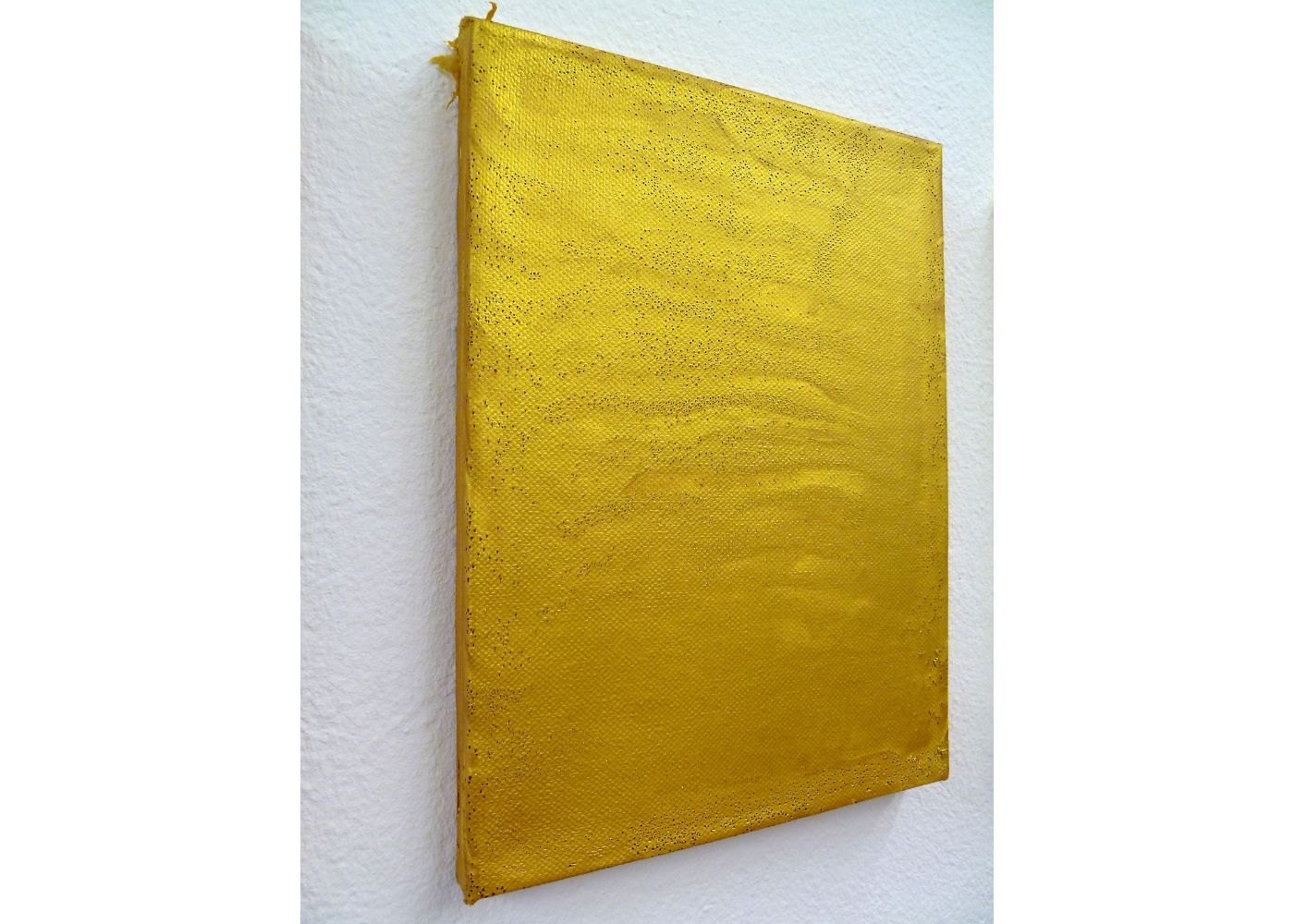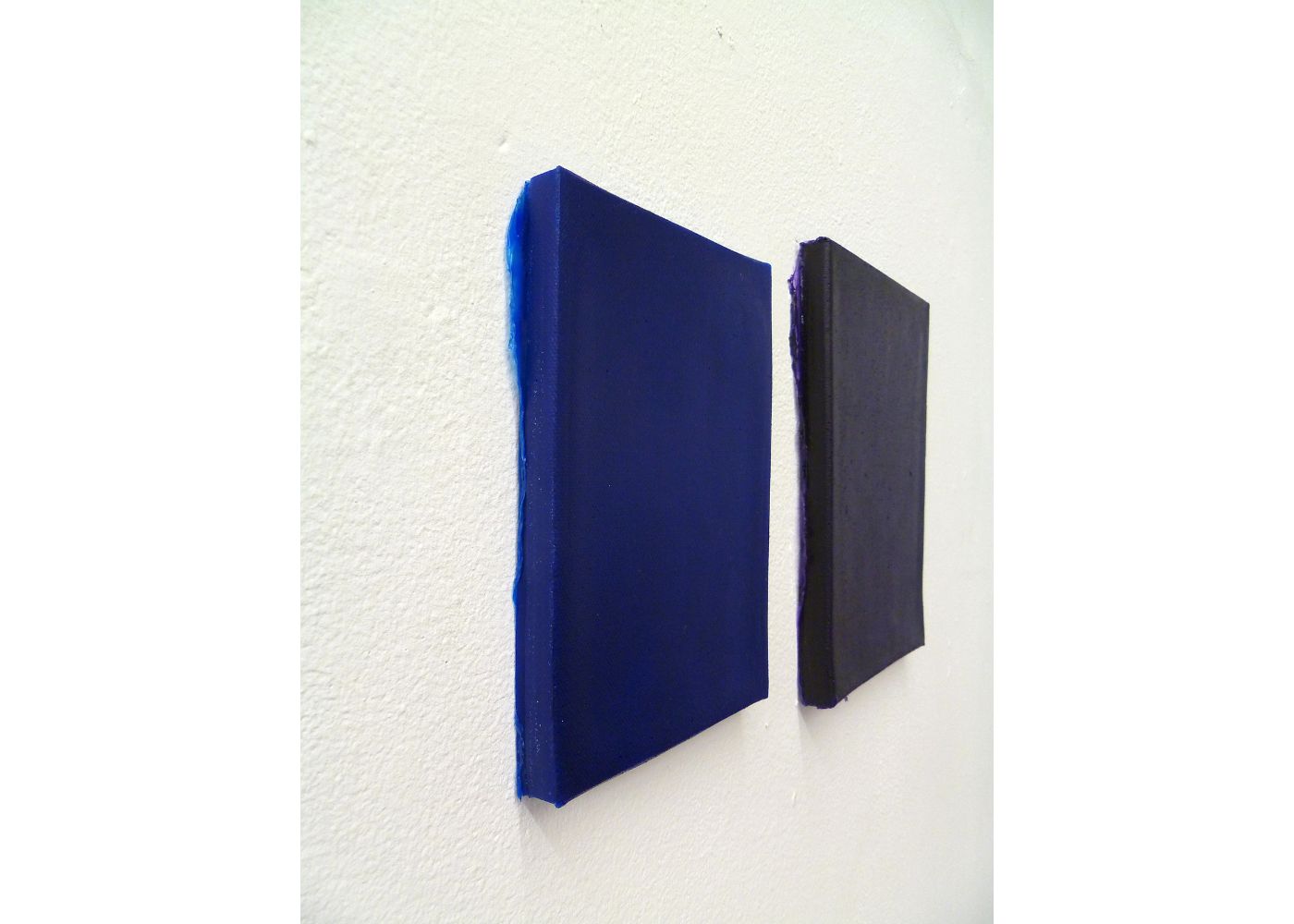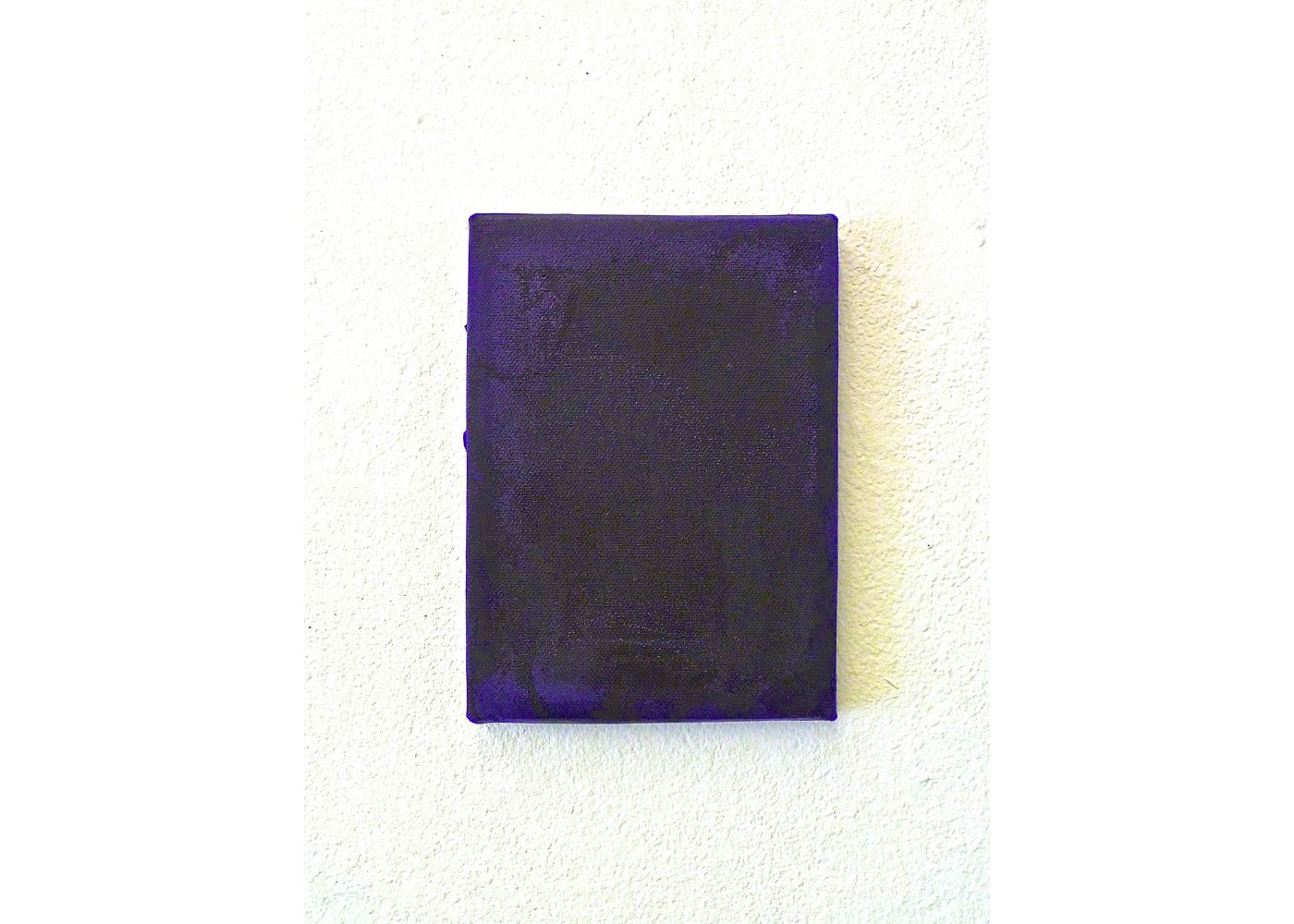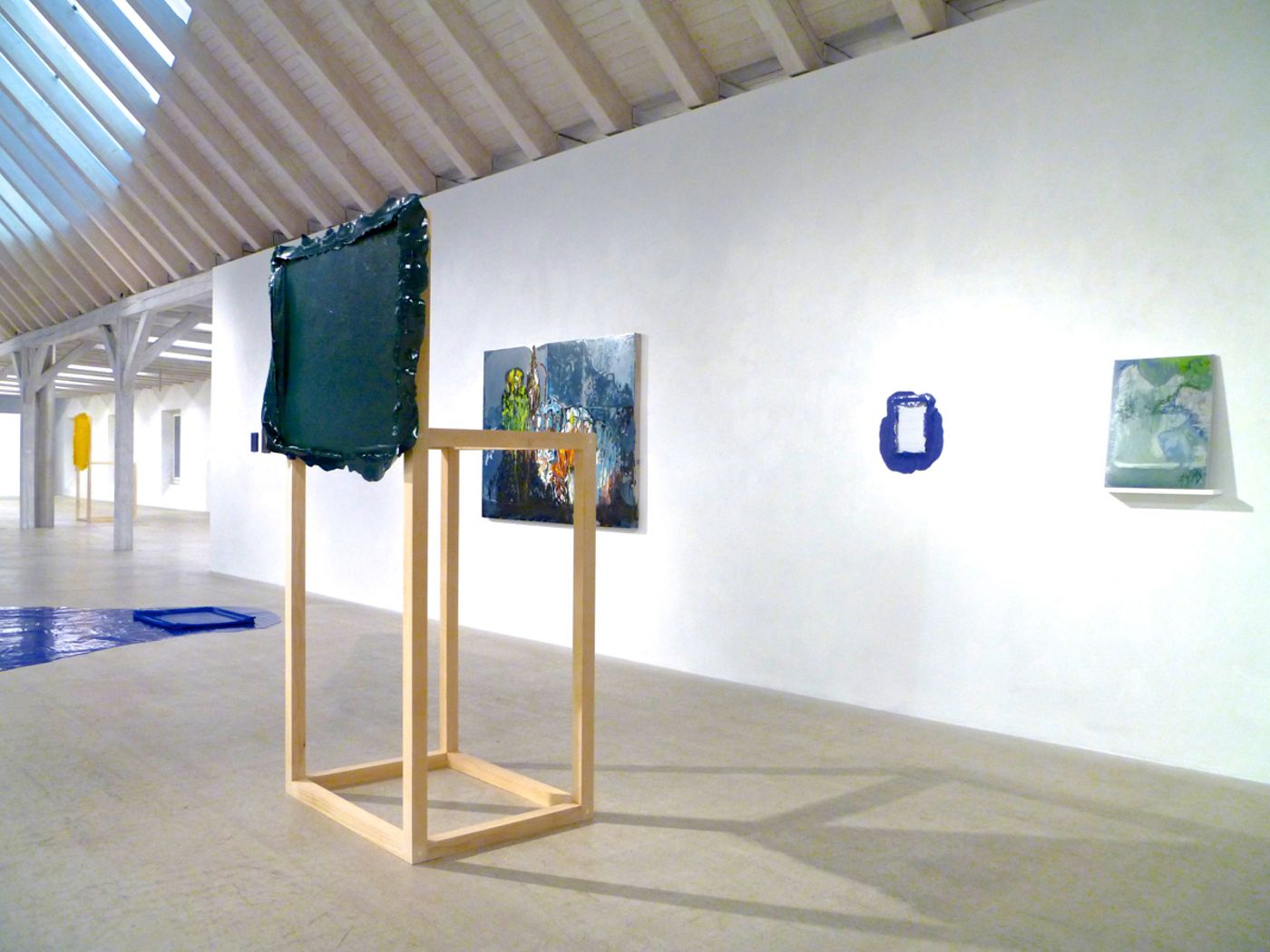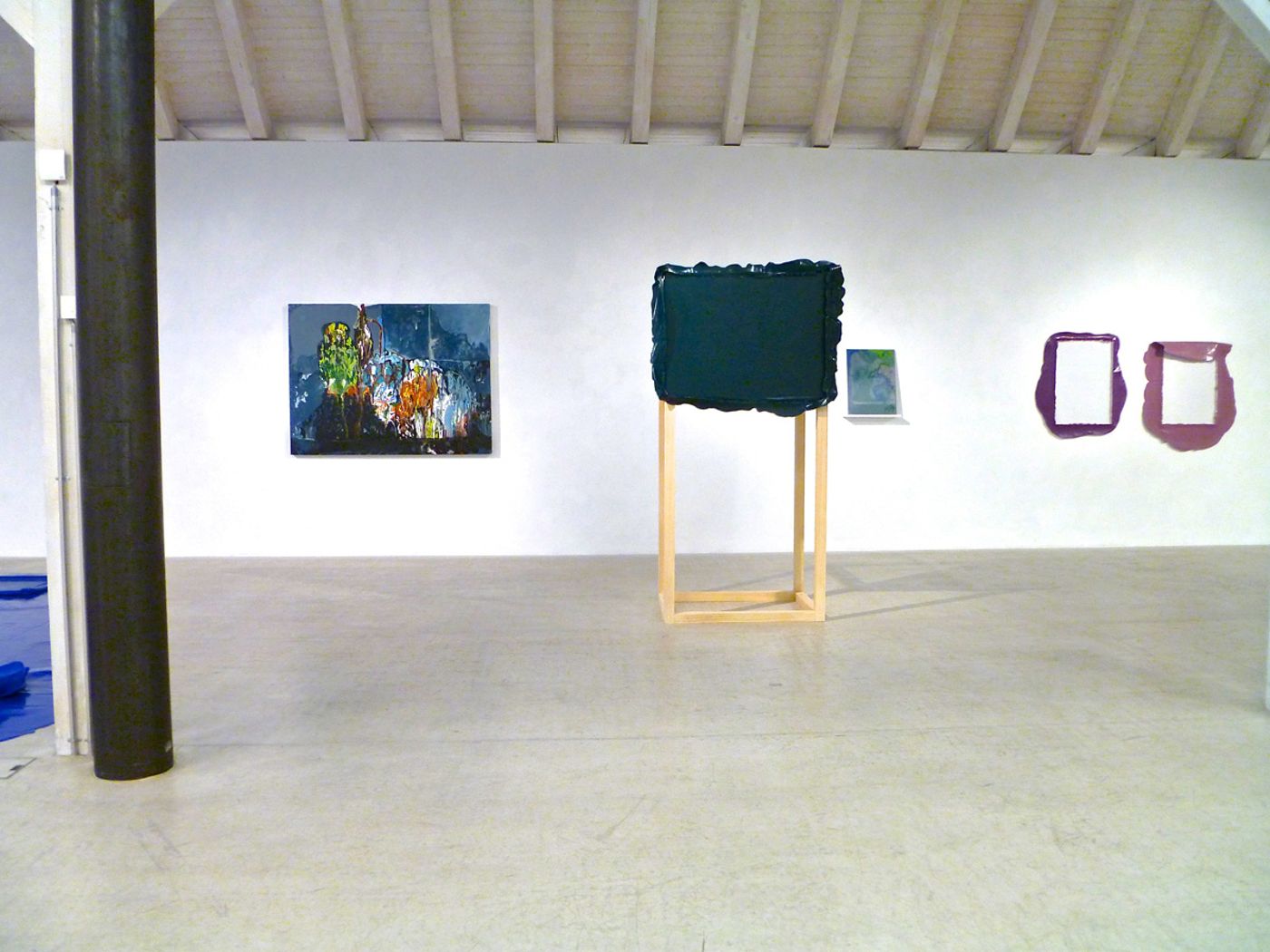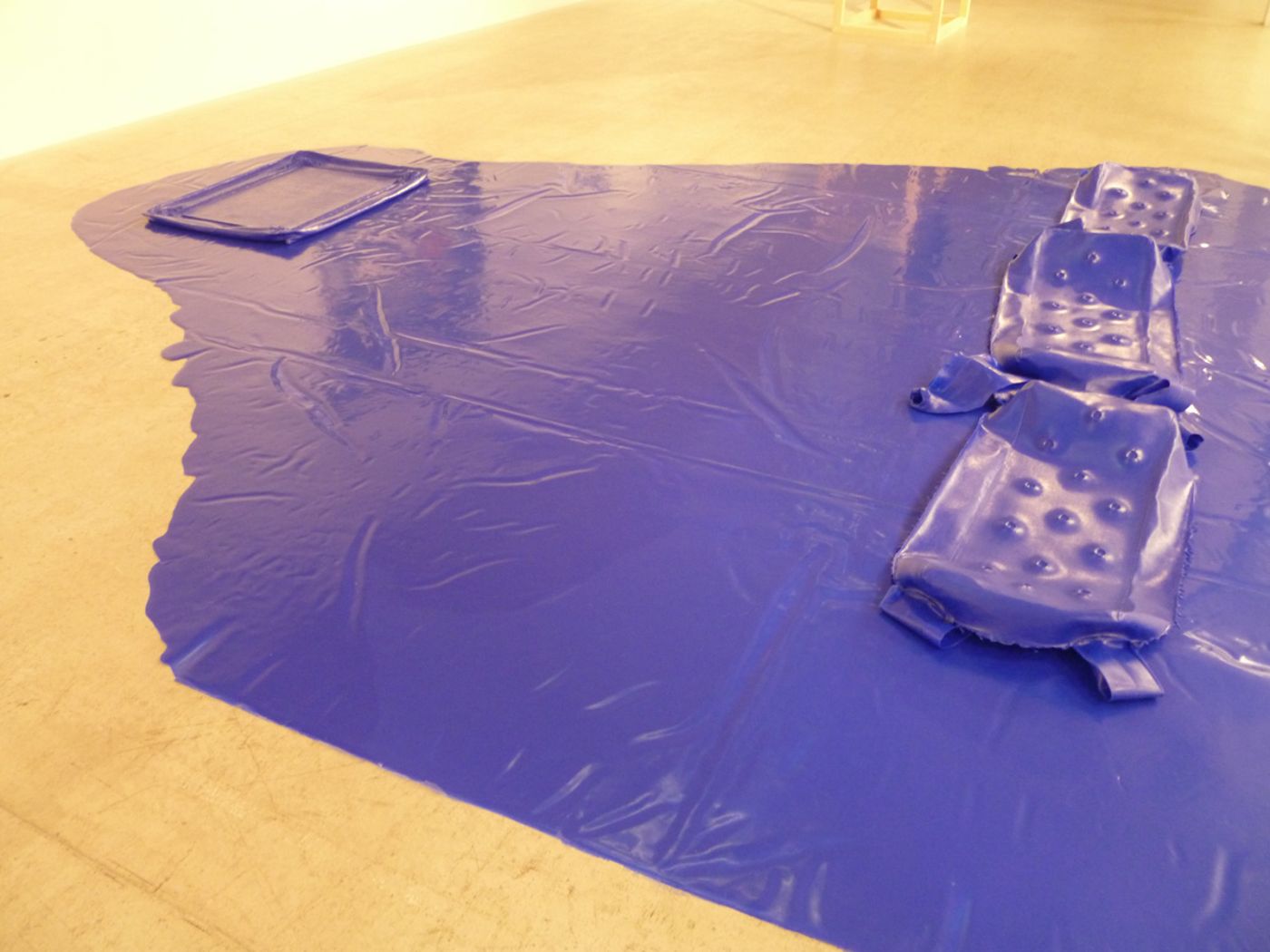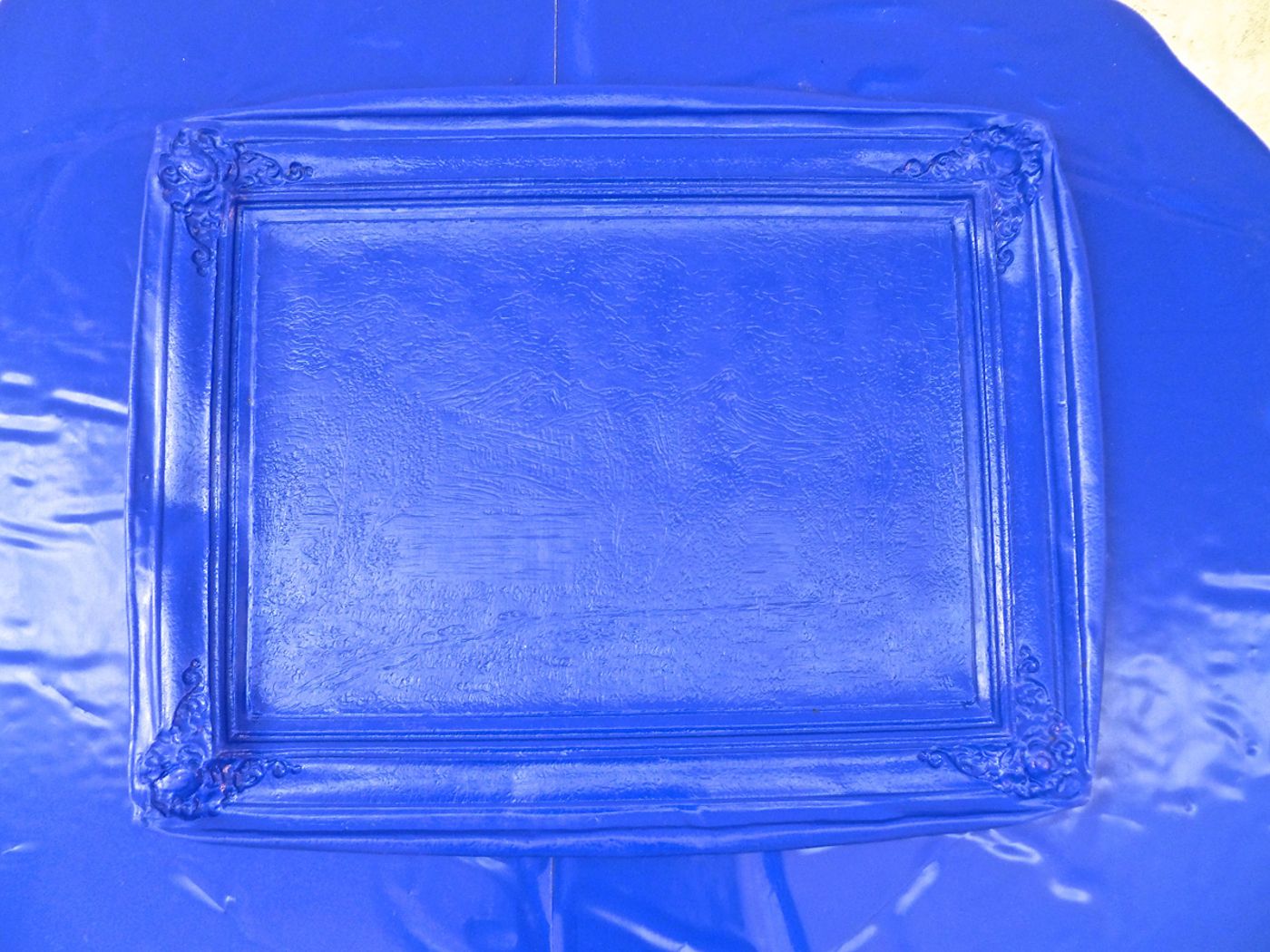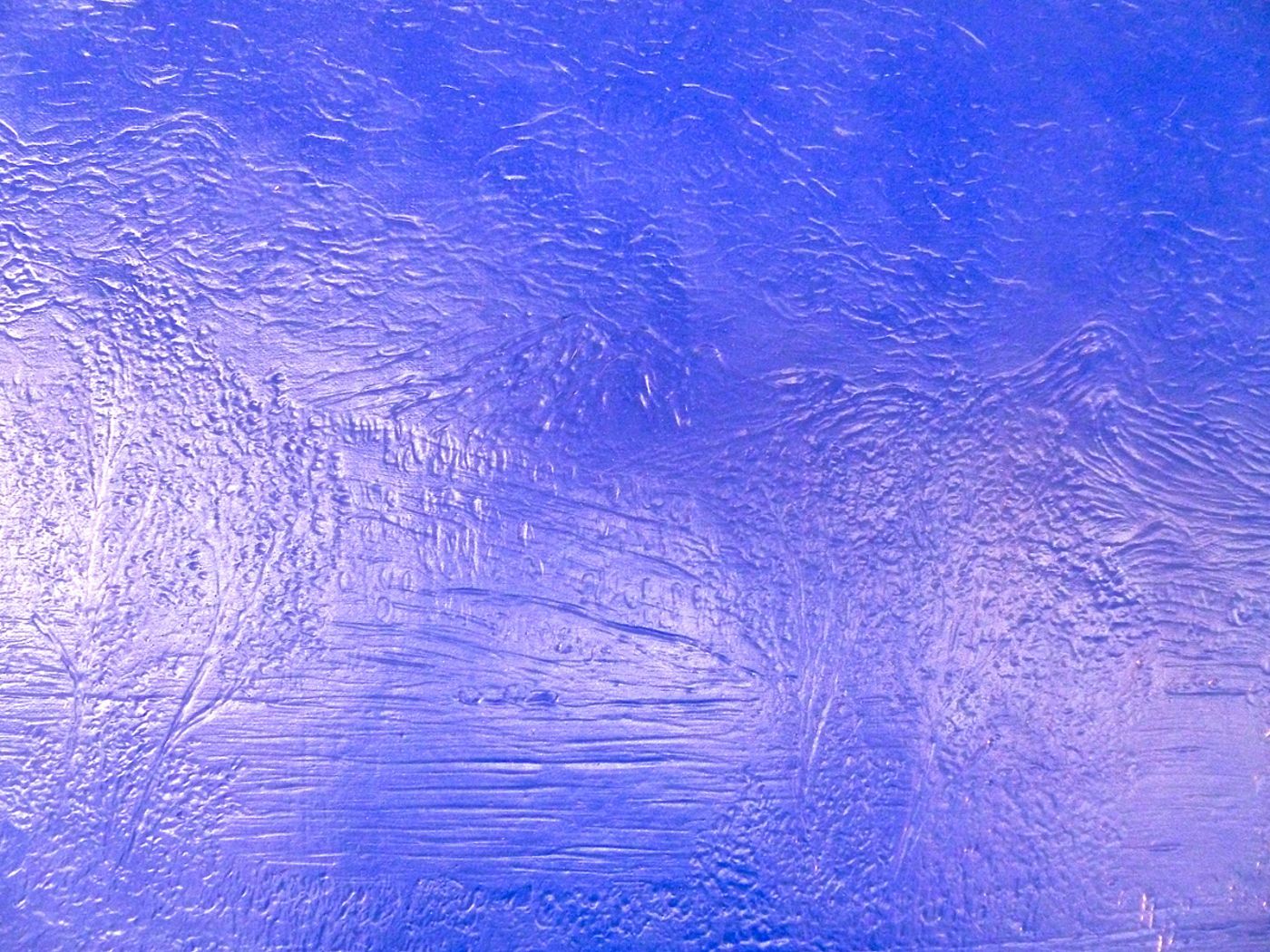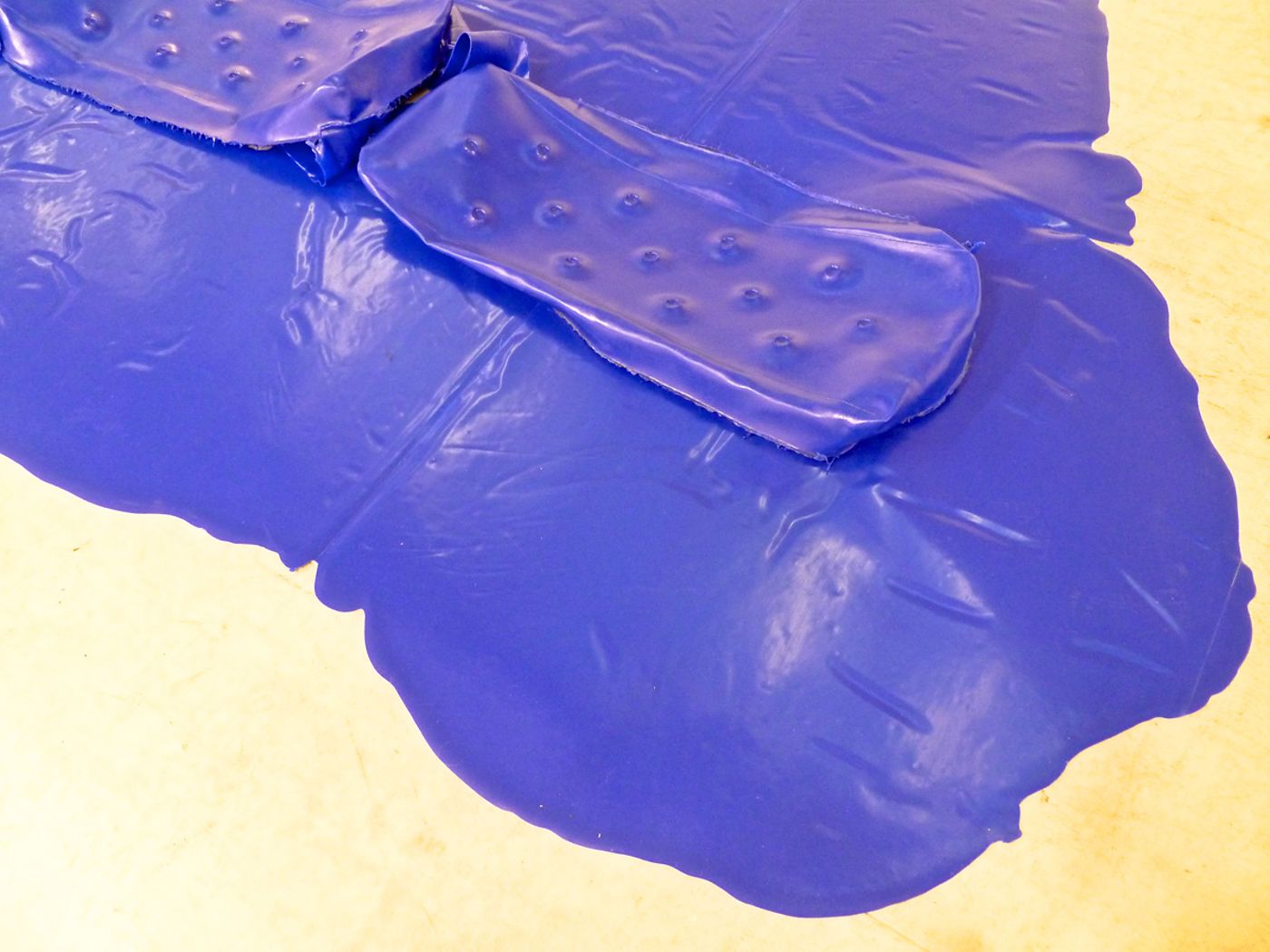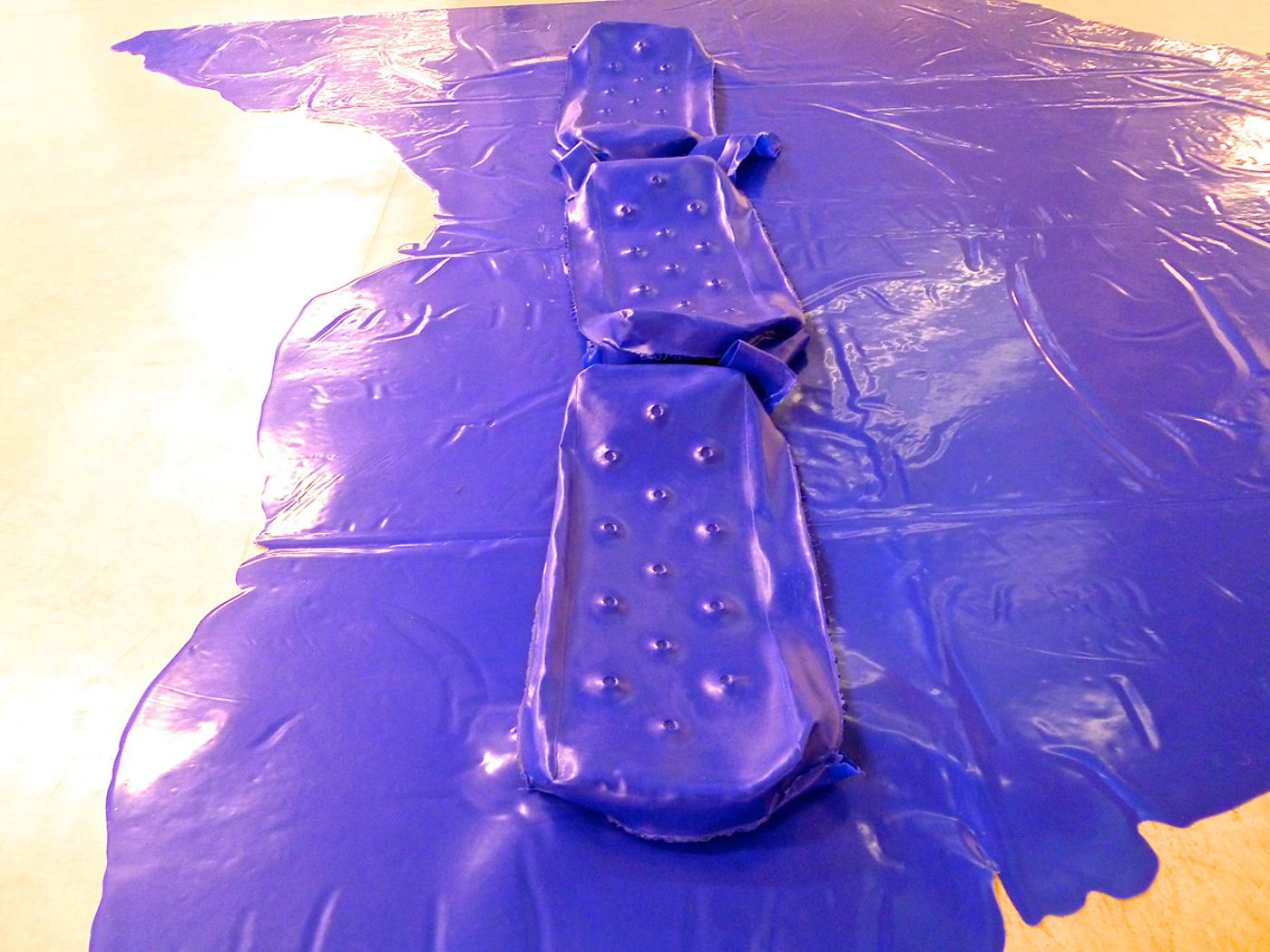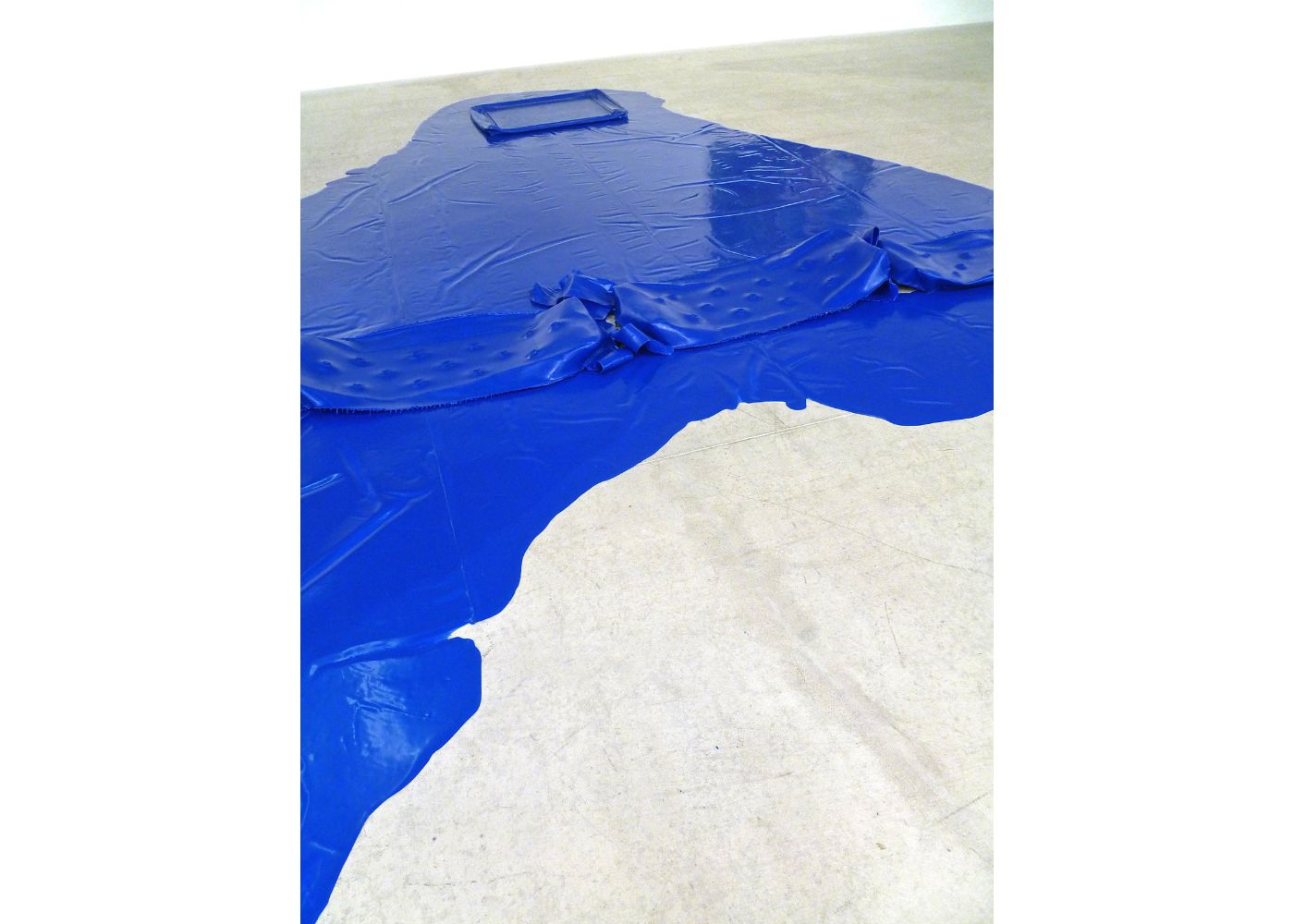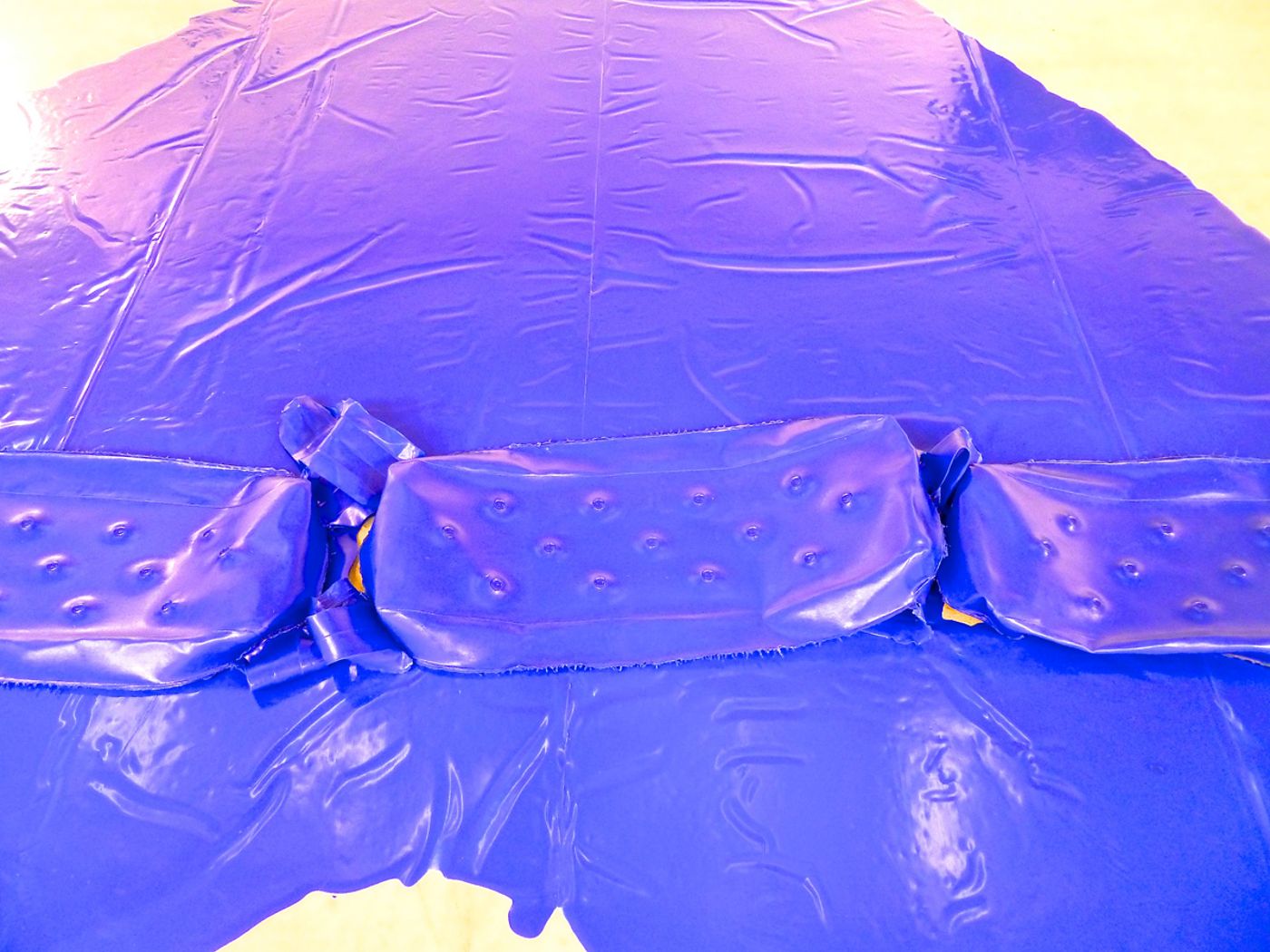Liebe Farbe, Dear Colour,2018
Solo Show at the Kunst(zeug)haus Rapperswil-Jona
25th February to 6th May 2018
Solo show with retrospectiv character, monographie Anna Amadio, Liebe Farbe, Dear Colour, published in English and German by Christoph Merian Verlag, Switzerland
Presentations of colour
Text Irene Müller
more
Liebe Farbe, Dear Colour,2018
Solo Show at the Kunst(zeug)haus Rapperswil-Jona
25th February to 6th May 2018
Solo show with retrospectiv character, monographie Anna Amadio, Liebe Farbe, Dear Colour, published in English and German by Christoph Merian Verlag, Switzerland
Presentations of colour
Text Irene Müller
«Love is in the air / Everywhere I look around / Love is in the air / Every sight and every sound»1
A room with a view, but without an entrance. Grown from within itself, it takes one deep breath of air, then stands there: transparent walls, floor and ceiling—a space within a space. No view is obstructed, be it at, from, or through this space. Gazes glide along the heat-sealed skin of foil, scanning the gently trembling and sometimes wrinkly body. Inside and outside: air. Parted by a thin membrane that simultaneously marks the boundary between space and object. Is this body breathing? Or is it holding its breath? An air-filled nobody-room, marvelled at for its airy self-evident nature, which exposes itself and reveals its interior. A colourful plastic cover has been thrown over this striking volume. Bright colour fields, completely geared towards external effect. Strips in different shades of yellow and green alternate with each other, pink joins onto purple, red meets brown, while blue provides a border and frame.
Plastic, or to be more precise, PE foil, a rather unpretentious material, undergoes remarkable transformations in Anna Amadio’s work. This artist uses it to form transparent, seemingly weightless bodies, which in some cases are combined with coloured elements. In the rst objects, ‘Air Objects Number 1–4’ (1994, p.75,76), blue and black foils provide the internal divisions, mark out grid-like structures and patterns, or reinforce areas. Enclosed in their transparent housings and thus also kept in shape, the dark colours take on a three-dimensionally organised presence, but this is always located inside the respective objects. Rendered inaccessible to the touch, the colour fields and strips lie quite still within the bulging bodies, paying little attention to their supporting shells. In ‘Room with a View’ (p.78), produced two years later in 1996, colour then appears on the surface, vaulting over the structure beneath. The view of it is no longer clouded by the plastic foil; it successfully asserts itself on the spatial body, from which, hypothetically, it could also slip off. Shiny and rich in variety, it is the source of the large, formal, yet rather unspectacular body’s personality.
«Hit me you can’t hurt me, suck my kiss / Kiss me please pervert me, stick with this / Is she talking dirty / Give to me sweet sacret bliss / Your mouth was made to suck my kiss»2
As if they had been ordered and never collected: stacked containers, items in stock, piled on top of each other. A stranded volume, clad in a vividly colourful shiny coat. The taut plastic skin tightly clings to the body, reproducing subcutaneous structures, areas and edges. Folds of embarrassment, folds of extravagance. The sucking-in of a stomach under red, orange, pink and brown, the holding of breath for the sake of a flattering silhouette. Elements of tension, but in this existence under pressure, nothing stirs—only the coloured foil plays its flirtatious game with the light. A showpiece in the nail-varnish colours of the season. The fingertips itch, the eye conveys desires. Licking and sucking; the lips press against pink, the tongue caresses orange. Does red return the kiss? A spectacle of tactile fantasies. Cascades of stimuli glimmer in the cortex.
Ever since the beginnings of her career as an artist, Anna Amadio has turned her attention to colour as formable and haptic matter that appears in various states of aggregation and is implemented in media accordingly. Thus, her interest in spatial expression of colour has been conveyed in various groups of works, each with somewhat differently focused material parameters and artistic methodologies, which always include experimental, exploratory elements. Installations like ‘Gizmo’s Kiss’ (2005, p. 69, 70) and ‘Lips Inc.’ (2006, p. 79–82, 118) take her pursuit of the link between air-space-body and colour further, albeit inverted: their operative principle is not that of supplying air, but of suction, so the foil, like a wet t-shirt, reproduces the forms of the objects and volumes that are clad in it. At the same time, the colour fields also stretch across intermediate spaces and, as inwardly sucked surfaces, bear witness to the forces acting on them, as well as to their ability to withstand this strain. Here, colour is foil, stretched and sucked matter, in which painterly gestures and sculptural forming coincide. This “painting without brushes”3 causes the two-dimensional material to take on a three-dimensional shape, forming structured colour bodies, polychrome interior designs, with a corporeality that ranges from volumetric conceivability to ample agglomerations of colour, through to a colourful ‘outpouring’.
It is not surprising that Anna Amadio maintains this focus not only with regard to installation-based or object-based aspects, but also in the field of discourse pertaining to the image—particularly on consideration of the mobility and tangible nature of colour as matter, of various modes of movement, and of the temporal dimension of the image’s nascence during application of paint. For instance, the works in the series ‘Changing Directions’ (2008, p. 61, 62) owe their appearance to the artist’s explicit handling of them and to the ‘technical measures’ that this necessitated. Together with their support, the fluid coloured markings applied directly onto shrink foil4 were effectively vacuum-packed under an additional layer of foil, so every time the medium-format, easy-to-handle wooden panels were rotated, the paint could keep breaking new ground without leaving the frame. With this procedure, Amadio not only gives loss of control the heightened status of an image-defining principle, but also does the same to the performativity of colour:5 It stages its own identity in the enactment, revealing itself as mobile matter that ultimately creates the image—nimbly at first, then increasingly as a creamed mass, sometimes stubbornly, until the flow of motion eventually comes to a halt. Colour simultaneously wins its competition against time, encapsulates permanence in the bonding of paint and foil, and (last, but not least) acquires an energetic component from the act of forgetting and allowing to rest.
«And I, I will be king / And you, you will be my queen / Though nothing / We can beat them / We can be heroes / Will drive them away / For ever and ever / Just for one day»6
Monochrome from top to toe: light blue, bilious green, black. The twisting body, spiralling upwards, drops to its knees under the weight of the colour. It flows out into its own shadow on the floor and drags a shiny train of colour behind it. Crumpled corporeality, kept colourfully locked up. Individual frayed shoots blindly stretch out into the air, tentatively making physical contact with the surrounding space. Where is a counterpart to be found? Who responds to the contact? The crannied skin of colour is averse to touch, although it does offer its folds, dimples, bulges and recesses for comprehensive visual examination. Self-sufficient colour body or ambitious embodiment of colour? A tightrope walk of essentiality emerges, oscillating between self-conscious presence and exhausted loneliness.7
The ‘Guardians’, produced in 2008, marked a new phase in Anna Amadio’s engagement with colour and corporeality. By applying heat,8 the artist shaped shrink foil to create amorphous entities that were then given an opaque coat of paint. This second work step in particular was characterised by gestural generosity, in that the acrylic paint, mixed with glue, was poured over the baked foil bodies—literally by the bucket load. This encounter or blending also generated the (surface) features that are stimulating in terms of material semantics and de ne the appearance of the objects. Despite the predominant impression of a halted intensity of motion and a tenacious struggle for composure, there are nevertheless indications that the ‘Guardians’, perhaps in a kind of nervous exuberance, could still lose their temper after all.
On surveying Anna Amadio’s oeuvre since its beginnings, it becomes clear that when it comes to material experiential processes and work strategies, this artist consistently thinks beyond media categories and genre boundaries. Particularly in recent years, a corporeal component has become apparent, which, from the perspective of performance theory, is to be described as body-to-body transmission. While ‘Changing Directions’ and 2015’s ‘Under my Skin’ (p. 51, 52) do involve manual ‘image treatments’, namely manipulation of the support and the paint layer, the object-like works are based on the artist’s use of her body: Amadio first pours litres of paint onto the shrink foil, which is widely spread out on the oor. She then gathers the foil together from the corners and uses far-reaching movements to squeeze it against her body and compress it. In the case of ‘Corner Number 2’ (2015, p. 134), the artist forcefully made her way into a corner of a room with this bundle of foil and paint, where she then solidi ed the object by means of a heat gun. In some places, the violet paint was then trapped, sloshing back and forth inside the bonded, pouch-like rolls; in other places, it evaded the encompassing grasp and owed over the varying terrain of the foil landscape. Traces of channelling and skidding, thin veils of colour and smeared areas, crushed paint bubbles and plentiful lakes. Here, the artist corporeally incorporated the momentum of the material starting point, the poured paint, and directly transferred it to the work. The corner as a zone9 for spatial articulation of colour, as a place to experience transformation; it generates the folds that turn the two-dimensional in the space, and cause material givens and visual realities to break.
The ensemble developed by Anna Amadio for an exhibition at Museum Langmatt,10 comprising ‘The Thief’ (2016), ‘The Companion’ (2016) and the ‘Third Guardian’ (2008, p. 49), accentuated another facet of this corporeal approach, whereby three protagonists of different colour-bodymanipulations appeared together here. While the ‘Third Guardian’ acted with its already familiar darkly threatening presence, the two new additions presented themselves in a rather airy, oating manner. The presence and absence of colour, and its localised emergence in, on and under the foil body, not only de ne the essence of these three objects, but also suggest various stages of revelation and concealment of colour matter and body matter. Thus, these works emphatically bear witness to the approach to work that Anna Amadio has formulated, which always involves establishing an experiential structure during the works’ production process:11 The material occurrence experienced by the artist leaves precise marks on the works, directly manifests itself in paint and foil, and lends these materials their experiential nature.
«Blue of my heart / Blue of my dreams / Slow blue love / Of delphinium days /
Blue is the universal love in which man bathes – it is the terrestrial paradise. (...) For Blue there are no boundaries or solutions.»12
When Derek Jarman made the lm ‘Blue’ in 1993, he was already almost completely blind, his eyesight having been reduced to occasional blue ‘light images’.13 Here, the connecting factor does not come from the themes of homosexuality and AIDS that are reflected in the lm and solely conveyed via voiceover, but from the constant monochrome blue, which provides the viewers with visual support for over an hour in the “admirable austerity of the void”.14 The optical effect of colour, the visual (and physical) experience of colour and the emotionally determined relationship with colour.
Engagement with Anna Amadio’s oeuvre can go in many directions; the path taken here follows colour, its presence and what it inherently offers. The artist finds it remarkable that people or societies can develop a fear of colour. In contrast, on the basis of the exhibition and this publication, it seems more than plausible to describe her as a ‘chromophile’.15 After all, what we encounter here is an oeuvre in which colour has always held a special status. Carried by air-filled bodies, enclosed in floating volumes, as accentuation of various traces of transfer,16 or as owing matter. Colour body, image body, object body, spatial body. All these formulations, which differ with regard to media, are based on the position that colour is more than material. It is a conceptual space and linguistic body, with specific syntax and grammar in each instance, with idiomatic elements and an awareness of etymological lines. Much like the way in which our verbal language changes under the influence of new technologies, (socio-)political shifts and ultimately existential conditions, Anna Amadio also keeps her oeuvre moving consistently, convinced that the ‘solutions’ formulated to date have certainly not conclusively responded to the crucial issue of the relationship between image and space, or between colour and material.
1 John Paul Young, Love Is In The Air, 1977, album: Love Is In The Air, 1978.
2 Red Hot Chili Peppers, Suck my Kiss, 1992, album: Blood Sugar Sex Magik, 1992.
3 Anna Amadio in an interview with the author on the 3rd of November 2017. The corporeal gestural handling of colour that characterises Amadio’s works also indicates their underlying spatial orientation and an artistic mindset that does not view brushwork or (guidance of) lines
as necessary elements of a contemporary painting discourse.
4 This so-called ‘shrink foil’ is also a type of PE foil, which is caused to shrink by the application of heat.
5 When developing preliminary studies and works, Amadio records the behaviour of the materials, the physical and chemical parameters, as well as ‘technical solutions’, in detail. On the one hand, these records ensure that the artist can execute these works in precisely the same way on a subsequent occasion, whereby this also makes it possible for her to experience this speci c work process once again. On the other hand, the records can also be seen as scripts or scores belonging to a performance-based system, in which the material shows its identity at the moment of action.
6 David Bowie, Heroes, 1977, album: Heroes, 1977.
7 This series comprises three objects (‘First Guardian’, ‘Second Guardian’ and ‘Third Guardian’) as well as preliminary studies, in which Amadio intensively investigated material properties and processing options.
8 For this purpose, Anna Amadio used a heat gun with a temperature of 580°, which she pointed at the foil.
9 See Anna Amadio’s statement about this work: “On the search for an experiential structure; here, the (...) attempt (...) with a corner in a room. The corner is a zone.” http://www.annaamadio.com/objekte/ecke-nummer-2.html (accessed on 26/11/2017).
10 ‘Langmatt, Licht, Libellen. Impressionismus gestern und heute’. Museum Langmatt, Baden, 25/9–11/12/2016.
11 Anna Amadio in an interview with the author on the 3rd of November 2017. See footnote 9.
12 Jarman, Derek: Blue, 1993, 78 min. Voiceover text, quoted from: http://www.queerculturalcenter.org/Pages/Jarman/JarmanBTx.html (26/11/2017). See Blue: Text of a Film by Derek Jarman, London 1993.
13 See Peake, Tony: Derek Jarman. London 1999, p. 398–515.
14 Ibid.,p.477.
15 This term is derived from the chapter title ‘Chromophilia’ in David Batchelor’s inspirational
book. See Batchelor, David: Chromophobia. Vienna 2002, p. 95–110.
16 In particular, this refers to the frottages produced at irregular intervals from 2003 onwards in pencil and crayon on the basis of various ‘foundations’.
